Jack Ross's Blog, page 2
June 26, 2025
Fifty Years after the Fall of Saigon
 Tim O'Brien: If I Die in a Combat Zone (1973)
Tim O'Brien: If I Die in a Combat Zone (1973)The other day I bought a copy of Tim O'Brien's classic Vietnam war memoir from a Hospice Shop. It felt strange, very strange, to reread it - to revisit the atmosphere of those times. It was, after all, first published while the war was still going on, after the withdrawal of American troops, but before the ultimate humiliation of the fall of Saigon.
O'Brien is probably better known, now, for his National Book Award-winning Vietnam novel Going After Cacciato (1978), together with the linked stories in The Things They Carried (1990), but it's worth remembering that this memoir, whose original title was If I Die in a Combat Zone, Box Me Up and Ship Me Home was named the Outstanding Book of 1973 by the New York Times.
Why? I guess because O'Brien tried to cover all the bases: he was honest about his own internal debate about the "morality" of the war, but also admitted that it was largely by chance that he failed to run away to Sweden rather than being shipped off to Vietnam with his unit.
He turned out, by chance, to be serving in the same region where the infamous My Lai massacre had taken place the year before. He records the casual killings and cruelty which were part of everyday life as an occupying force. But he also explains the constant fear of being killed or maimed by mines or mortar fire which gnawed away at most soldiers - apart from the occasional hero (or psychopath) - from day 1 to day 365 of their tours.
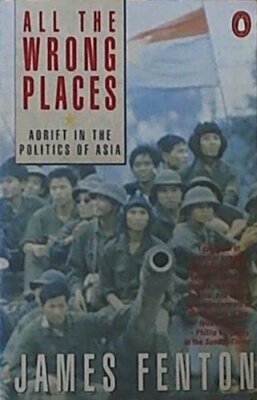 James Fenton: All the Wrong Places (1988)
James Fenton: All the Wrong Places (1988)Mind you, if you want to draw any actual parallels between present day geopolitics and the fall of Saigon on on 30 April 1975, you'll have to look elsewhere. One place to go might be English poet and roving war correspondent James Fenton's classic All The Wrong Places: Adrift In The Politics Of Southeast Asia.
Fenton is still, perhaps, most famous - or notorious - for hitching a ride on a North Vietnamese tank just before it broke into the compound of the Saigon Presidential Palace. You can read some of his own thoughts on the matter in "The Fall of Saigon," from Granta 15 (1985).
And here are a few lines from one of his strangely Kiplingesque war poems, "Out of the East":
... it's a far cry from the temple yard
To the map of the general staff
From the grease pen to the gasping men
To the wind that blows the soul like chaff
And it's a far cry from the paddy track
To the palace of the king
And many go
Before they know
It's a far cry.
It's a war cry.
Cry for the war that has done this thing.
 Stanley Karnow: Vietnam: A History (1983)
Stanley Karnow: Vietnam: A History (1983)As usual, there are Academic histories a-plenty. Stanley Karnow's Vietnam: A History, billed in its later editions as "the first complete account of Vietnam at war," is the one that I dutifully read from cover to cover when I had to teach The Things They Carried in a Modern Novel course at Auckland Uni in the early 1990s.
I must admit, though, to a preference for the shorter and more focussed Vietnam: The Ten Thousand Day War , based on Michael Maclear's epic 1980 26-part Canadian television documentary about the Vietnam War.
 Michael Maclear: Vietnam: The Ten Thousand Day War (1981)
Michael Maclear: Vietnam: The Ten Thousand Day War (1981)Even further back than that, when all these "old, unhappy far-off things" seemed considerably closer to us in time, I was asked to review an essay collection called Tell Me Lies About Vietnam: Cultural Battles for the Meaning of the War. Here's a quote from what I had to say about the subject then, in 1989:
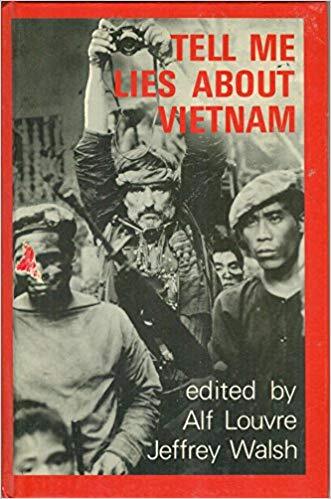 Alf Louvre & Jeffrey Walsh, ed.: Tell Me Lies About Vietnam (1988)
Alf Louvre & Jeffrey Walsh, ed.: Tell Me Lies About Vietnam (1988)... the fact that one has compiled and classified a series of responses to Vietnam in different media does not add up to a consistent view from which one can generalize. The war was appropriated by various interest groups ... but the infinite suffering and death that was inflicted on Indo-China by the Americans and their allies seems to me to be a fact which somewhat outweighs the importance, in the final analysis, of yet another spate of Narcissistic films and books about ‘the end of American innocence’. The virtues of this book lie in its particularity – its emphasis on individual artists (Ralph Steadman, Tim Page, Susan Sontag) and popular media (cartoons, comic books, rock music). Its errors reside in the assumption that some over-view of the falsification of the war can be deduced from all this – an attitude which is, in itself, as dangerous a ‘lie’ about Vietnam as any of those which the contributors expose.I might say it rather differently now - talk about over-complex, Grad School-inflected, run-on sentences! - but I still agree with that remark that "the infinite suffering and death ... inflicted on Indo-China by the Americans and their allies seems to me to be a fact which somewhat outweighs the importance ... of Narcissistic films and books about ‘the end of American innocence’." It's really just a question of proportion:
 Grethe Cammermeyer: Visiting Vietnam (2019)
Grethe Cammermeyer: Visiting Vietnam (2019)A 2008 study by the British Medical Journal came up with a ... toll of 3,812,000 dead in Vietnam between 1955 and 2002.The Wikipedia article from which I took these figures estimates 58,098 American casualties overall. Even if you dispute the BMJ's analysis - and some do - you still have a discrepancy of literally millions of military and civilian casualties inflicted in Vietnam by two foreign armies - the French and the Americans - neither of whom suffered even a tenth of this death toll themselves.
 North Vietnamese Spring offensive (13 December 1974 – 30 April 1975)
North Vietnamese Spring offensive (13 December 1974 – 30 April 1975)And yet, despite all that fire power and overwhelming military might - on paper - they still didn't win. The French were driven out by the Viet Minh, and a treaty of partition between North and South Vietnam was signed in Geneva on July 21, 1954. But the Americans insisted on reenacting the whole conflict on a larger scale, only to sign their own "Peace Accord" in Paris on January 27, 1973, officially ending their direct involvement in the Vietnam War.
 Hubert van Es: Evacuating Saigon (29 April 1975)
Hubert van Es: Evacuating Saigon (29 April 1975)A year later North Vietnamese forces toppled President Thieu's regime without any significant response from the U.S. The war had become too unpopular for anyone in power there to wish to resume it, and so the last pictures of what was then America's longest war were those disgraceful sauve-qui-peut scenes of America's friends and allies clamouring desperately for space on the last helicopters out.
It did take some time after that debacle for the old adage to be forgotten: "Never get into a land war in Asia". Just as it took Europe 25 years after 1914 to nerve itself up for another world war, so it took 25 years after 1975 before the Americans again decided to get into a quick war in Afghanistan to punish a few "fanatical extremists" - oddly enough, the same extremists (then referred to as the mujahideen) they'd been funding for decades, ever since the Soviet invasion in 1979.
 Taliban offensive (1 May – 15 August 2021)
Taliban offensive (1 May – 15 August 2021)Twenty years later, in 2021, the Americans withdrew in even more disgraceful circumstances than in 1975, having achieved far less, and leaving even larger crowds of those who had helped them at the mercy of the vengeful Taliban.
The parallels seem too obvious to be stressed, but maybe they still don't seem real to those who don't remember 1975, and perhaps weren't even born when the post-9/11 invasion of Afghanistan took place. Wars, however, are very real. They have a horrible way of coming home to you in unexpected ways: when a bomb goes off next to you for some obscure geopolitical reason, for instance.
I just wish we could show some signs of learning a few lessons from all this ancient history. For instance, that humiliating a whole country, and their rulers - as Donald Trump has just done in Iran - is sowing the wind to reap the whirlwind. All empires crumble, and the fact that they tend to flex their muscles most ostentatiously just before their fall ought to remind the "great powers" that a return to the arts of peace and diplomacy is not necessarily a sign of weakness.
It's tempting, too, to remark that if the armies of the "free world" could learn to stop stomping around other people's backyards, their health services might end up having to deal with far fewer cases of PTSD. But the Forever War (as Noam Chomsky and others have called it) continues: sometimes it's Iraquis who are the enemy, sometimes Iranians, occasionally even Russians, but there's always got to be someone to machine-gun and bomb in the name of "liberal democracy".
 The Taliban in the Presidential Palace (Kabul, 15 August 2021)
The Taliban in the Presidential Palace (Kabul, 15 August 2021)•
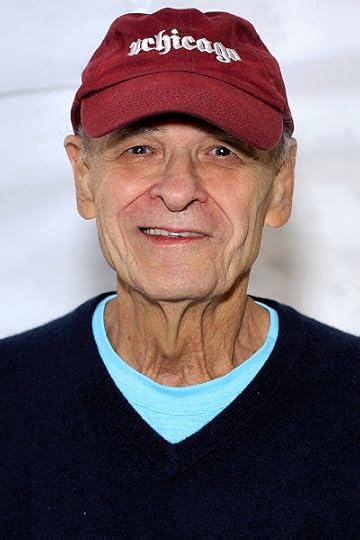 Tim O'Brien (2023)
Tim O'Brien (2023)Tim O'Brien
(1946- )
Fiction:
"Where Have You Gone, Charming Billy?" (1975)Northern Lights (1975)Northern Lights. 1975. Flamingo. London: HarperCollins Publishers, 1998.Going After Cacciato (1978)Going After Cacciato. 1978. Flamingo. London: HarperCollins Publishers, 1998.The Nuclear Age (1985)The Things They Carried (1990)The Things They Carried. 1990. Flamingo. London: HarperCollins Publishers, 1991.In the Lake of the Woods (1994)Tomcat in Love (1998)July, July (2002)America Fantastica (2023)
Non-fiction:
If I Die in a Combat Zone, Box Me Up and Ship Me Home (1973)If I Die in a Combat Zone. 1973. Flamingo Modern Classics. London: HarperCollins Publishers, 1995.Dad's Maybe Book (2019)
Secondary:
Greene, Graham. The Quiet American: Text and Criticism. 1955. Ed. John Clark Pratt. The Viking Critical Library. New York: Penguin, 1996.Herr, Michael. Dispatches. 1977. Introduction by David Leitch. Textplus. London: Hodder & Stoughton, 1989.Karnow, Stanley. Vietnam: A History. 1983. Rev. ed. London: Pimlico, 1990.Louvre, Alf & Jeffrey Walsh, ed. Tell Me Lies About Vietnam: Cultural Battles for the Meaning of the War. Milton Keynes: Open University Press, 1988.Maclear, Michael. Vietnam: The Ten Thousand Day War. 1981. London: Thames / Methuen, 1982.Sheehan, Neil. A Bright Shining Lie: John Paul Vann and America in Vietnam. 1988. London: Guild Publishing, by arrangement with Jonathan Cape, Ltd., 1989.
•
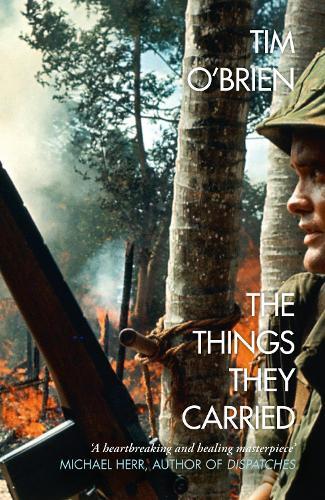 Tim O'Brien: The Things They Carried (1990)
Tim O'Brien: The Things They Carried (1990)
Published on June 26, 2025 15:07
June 16, 2025
Jack Ross: Stories
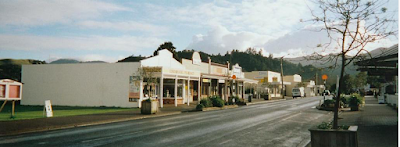 Simon Creasey: Coromandel (2005)
Simon Creasey: Coromandel (2005)Preface
'Talking against death'! yep that sums our craft up
in three brutal words ..."- Tracey Slaughter. Email to Jack Ross (14/2/2024)
While I was in the early stages of compiling the pieces which would eventually turn into my latest book of stories, Haunts (2024), I decided to try to straighten out all the myriad drafts I'd accumulated by pasting them up online.
As it turned out, that didn't help me much (if at all), but it did provide the kernel for a larger Stories site which has now grown to include the texts of all my published short fiction to date - with the exception of my three novels, each of which already has one (or more) websites dedicated to it.
Like the earlier Poems site, then, to which this is intended as a companion,
Jack Ross: Stories
contains the texts of all three novellas and four short fiction collections I've published so far. It's almost a year since Haunts was launched for sale online (well in advance of the actual physical booklaunch on Saturday, 5th October), so it seems like an appropriate time to share its contents with any of you who'd like to sample the text before buying a copy.
Before outlining the content of the site, though, I thought I'd better say some more about its structure.

The first thing you see, if you click on this link, will be the warning above.
After you've clicked on the orange "I understand and I wish to continue" button, you'll be taken to the following page:

This should give you full access to the site.
The reason for all this is because some of the stories do contain swear words and sexually explicit material, and I've found in the past that this tends to attract the attention of roving web editors, who red flag and - in some cases - simply take down any pages which offend in this way.
I've therefore decided to mark both this and my Poems site - as well with those devoted to the three novels in my R.E.M. trilogy - as containing "Adult content":
This "sensitive content" gateway will, unfortunately, have to be renegotiated every time you access any of these sites. No doubt this will have the effect of reducing the number of visits to each of them, but it also increases the level of dedication needed to get there - not in itself a bad thing. Bona fide readers are always welcome.Jack Ross: Nights with Giordano Bruno (2000)
Nights with Giordano Bruno. ISBN 0-9582225-0-9. Wellington: Bumper Books, 2000. [xii] + 224.Jack Ross: The Imaginary Museum of Atlantis (2006)
The Imaginary Museum of Atlantis. ISBN 0-9582586-8-6 . Auckland: Titus Books, 2006. 164 pp.Who am I? Automatic WritingWhere am I? CuttingsJack Ross: E M O (2008)
E M O. ISBN 978-1-877441-07-3. Auckland: Titus Books, 2008. [vi] + 258 pp.EVA AVEMoons of MarsOvid in Otherworld
Here, then, is a breakdown of the contents of my new fiction website. At present it contains 59 stories, ranging in length from novellas to flash fictions, taken from seven books:
•Jack Ross: Monkey Miss Her Now (2004)
Monkey Miss Her Now & Everything a Teenage Girl Should Know. ISBN 0-476-00182-X. Auckland: Danger Publishing, 2004. 138 pp. [13 short stories]Jack Ross: Trouble in Mind (2005)
Trouble in Mind. ISBN 0-9582586-1-9. Auckland: Titus Books, 2005. [ii] + 102 pp. [single novella]Jack Ross: Kingdom of Alt (2010)
Kingdom of Alt. ISBN 978-1-877441-15-8. Auckland: Titus Books, 2010. [iv] + 240 pp. [8 short stories]Jack Ross: The Annotated Tree Worship: Draft Research Portfolio (2017)
The Annotated Tree Worship: Draft Research Portfolio. ISBN 978-0-473-41328-6. Paper Table Novellas. Auckland: Paper Table, 2017. iv + 88 pp. [first of 2 novellas]
Jack Ross: The Annotated Tree Worship: List of Topoi (2017)
The Annotated Tree Worship: List of Topoi. ISBN 978-0-473-41329-3. Paper Table Novellas. Auckland: Paper Table, 2017. iv + 94 pp. [second of 2 novellas]Jack Ross: Ghost Stories (2019)
Ghost Stories. ISBN 978-0-9951165-5-9. 99% Press. Auckland: Lasavia Publishing, 2019. 140 pp. [12 short stories]Jack Ross: Haunts (2024)
Haunts. ISBN 978-1-991083-17-3. 99% Press. Auckland: Lasavia Publishing, 2024. 202 pp. [13 short stories]
•

Jack Ross: Stories (1996- )
Along with my Opinions site ("Essays, Interviews, Introductions & Reviews - 1987 to the present"), and the already available Poems , this showcases pretty much all of the work I've published to date. Enjoy!
•
Published on June 16, 2025 14:23
May 22, 2025
'Everyone should be noted': Richard & Victor Taylor
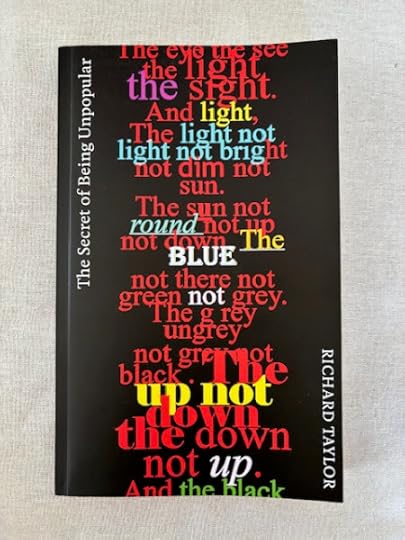 Richard Taylor: The Secret of Being Unpopular (2024)
Richard Taylor: The Secret of Being Unpopular (2024)[photograph: Bronwyn Lloyd]
'Everyone should be noted' is the last line of the Acknowledgments at the back of Auckland poet Richard Taylor's latest book, The Secret of Being Unpopular.
This post isn't really meant as a formal review of his work - he is, after all, large, he contains multitudes - but more as a few comments, combined with reminiscences.
I've capped it off with two email interviews, one with Richard and the other with his son Victor, who's also just published a collection of poems, his first, entitled Rift.
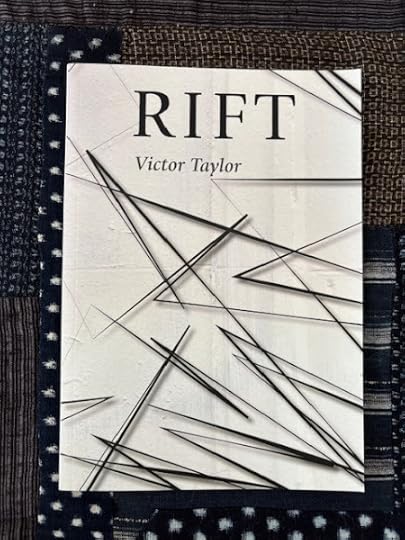 Victor Taylor: Rift (2024)
Victor Taylor: Rift (2024)[photograph: Bronwyn Lloyd]
•
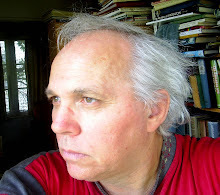 Richard Taylor (1948- )
Richard Taylor (1948- )I've known Richard Taylor for nearly thirty years. We first met at Poetry Live, the weekly poetry reading / performance roadshow which has been migrating from bar to bar around Auckland's K. Rd for the last several decades. We were both friends with the late Rev. Leicester Kyle, and he might be said to have introduced us.
How shall sum up Richard? He can be quite a disconcerting person to meet for the first time. While immensely erudite and well-read, he doesn't exactly project a bookish demeanour. No, there's something more Rabelaisian about him than that: someone who loves food and drink and witty conversation - and is sometimes a little the worse for wear.
The freeflowing allusiveness of his talk is certainly not for the uptight, either. There have been some face-offs over the years - never (that I can recall) between Richard and me, but between him and others of the thinskinned poetry tribe.
Richard's mind is never asleep. He always pursues his own bent. I recall some of his experiments with photography and typography on his marvellous blog Eyelight (2005- ) - long treks over fields of associative imagery, which must have taken forever to construct, but which seem as anarchic and fluid as Walt Whitman's dithyrambic diatribes must have been to readers in the 1850s.
This dizzying sense of multiplying associations comes through in his prose, too. When, in the past, as a magazine editor, I commissioned pieces from Richard, I found that a little compression and tidying did have the effect of burnishing the power and originality of his ideas. But I also knew I was normalising them - attempting to obscure the particularity of the personality behind this mode of discourse.
He's not one of those law-giving critics people fear: a Belinsky, or an Edmund Wilson, whose verdicts can make or break a career. Richard belongs more to the side of the accommodating and celebratory: a Coleridge, or a Harold Bloom, wearing his idiosyncracies on his sleeve. He reads so much! Richard's always under the spell of some book or other, and he's combined all these years of apparently random text-sampling into an immensely powerful lens of critical insight.
 Richard Taylor: Conversation with a Stone (2007)
Richard Taylor: Conversation with a Stone (2007)[cover design: Ellen Portch]
There was a rather studied elegance to his previous book Conversation with a Stone. Now, as I glance through it, I can admire the ways in which Richard's anarchic muse has been kept in bounds (if not wholly tamed) by a clear layout with lots of white space around the lines. Is it quite him, though? The appearance of this book also spurred him to start a new blog: Richard, You MUST try to be more focused - (2012- ) - a quote (apparently) from one of his university tutors way back when - which continues to partner, but not supplant, his older site Eyelight.
For me, part of the interest of this new book is that it represents Richard's version of Richard, rather than that of a well-meaning editor or publisher. It's far closer to the true comprehensiveness of his vision (insofar as that's possible in the print medium).
 Henry Wallis: The Death of Chatterton (1856-58)
Henry Wallis: The Death of Chatterton (1856-58)I guess everybody knows the story of the death of Chatterton - both the suicide of the starving young poet ("marvellous boy", as Wordsworth called him), and the strange story of the commemorative painting above, by Pre-Raphaelite artist Henry Wallis.
The young poet and novelist George Meredith agreed to pose for the picture, as Wallis was a friend of his brother-in-law. To compound this chain of connections, Meredith's wife Mary Ellen eloped with Wallis shortly after the picture had been exhibited at the Royal Academy, and the two fled together to Capri.
"Richard Taylor's book's title and title poem The Secret of Being Unpopular's title was inspired by a strange review of George Meredith", he informs us on the back-cover blurb of his book. So just why was George Meredith so unpopular? Wikipedia informs us that:
His style, in both poetry and prose, was noted for its syntactic complexity; Oscar Wilde likened it to "chaos illumined by brilliant flashes of lightning".There's more to it than that, though. His fame as a poet is based mainly on the sonnet sequence Modern Love (1862), "a sequence of fifty 16-line sonnets about the failure of a marriage, an episodic verse narrative that has been described as 'a novella in verse'." This sequence, while not directly autobiographical, was clearly inspired by his own experience of being abandoned by Mary Ellen. The impulse to write it came from her lonely death in 1861 - though neither Meredith nor her ex-lover Wallis nor her father Thomas Love Peacock, another well-known poet and novelist, deigned to attend the funeral.
The bitterness and disillusionment fostered by these early experiences informed almost all of Meredith's subsequent work. It has been argued, in fact, that his style grew more complex and convoluted in direct response to the public demand for further romans-à-clef from him. Only those works of his which seemed to have clear parallels in contemporary scandal achieved more than a succès d'estime.
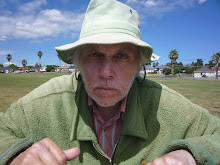 Richard Taylor: Blogger profile (2005- )
Richard Taylor: Blogger profile (2005- )Can one see in all this certain resemblances to Richard Taylor's own "chaos illumined by brilliant flashes of lightning"? You never know just what will come up in a Taylor poem or prose-piece - that is, if there really is much of a difference between the two genres for him.
Meredith's work, too, tends to be more honoured in the breach than the observance - his public, now, tends to be made up predominantly of literature professors. But Modern Love, in particular, is a very powerful poem indeed. As - for that matter - is that long title-piece of Richard's, "The Secret of Being Unpopular." If you're serious about learning more about the nature of Richard's work, this is probably the best place to start.
One thing's for certain: you'll be opening up a new and unaccustomed world for yourself if you do so.
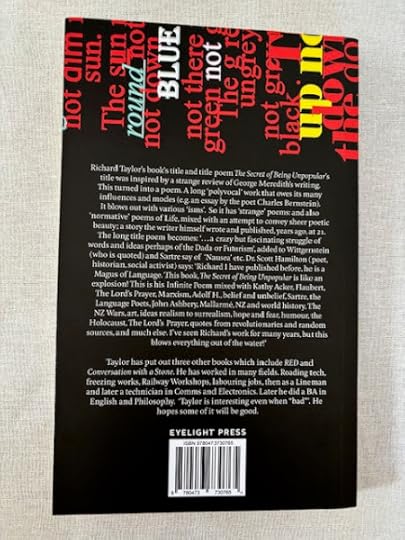 Richard Taylor: The Secret of Being Unpopular (2024)
Richard Taylor: The Secret of Being Unpopular (2024)•
 Victor Taylor: Rift (2024)
Victor Taylor: Rift (2024)Richard Taylor has written of his son Victor's book:
For a father and son to publish poetry or anything else at the same time is very unusual and means there is surely hope for, not only human life (despite the many trials we are all subject to) but culture and creativity.For, "while at times a philosophical pessimist," Richard says he "cannot help being a living and day by day optimist, except perhaps on a cold dreary morning before breakfast!"
I myself am writing this on just such a morning - cold and dreary, with a driving rain coming in from the sea - but I have had breakfast, so let's continue.
 University of Auckland: Kate Edger Information Commons
University of Auckland: Kate Edger Information CommonsI have a (probably bad) habit of starting to read poetry collections at the back, with the last poem, then dipping a tentative toe into the middle and leafing around a little before ever venturing to turn to the front.
In the case of Rift, this led me straight to a poem called "Star of south":
They call this university "an institution of learning". I sit with kateI like that. I like it a lot. I like the picture it paints: the sparrows, the students, the pomposity of this shabby old "institution of learning". What I like particularly, though, is the absence of fine writing or pretentious word choices in the descriptions. The sparrows "jump along" - they don't hop or frisk or congregate or anything else of that sort. And then one of them "leaps up" - rather than nuzzling or pecking or fluttering. Simple and to the point.
edger in her block. The sparrows chirp, I feed them, I watch them
jump along; young students walk by. I sit and watch sparrows.
One leaps up and takes bread from my hand - back to his friends.
We then get a profusion of imagery suggested by a young lady descending a nearby set of stairs, absurdly hymned and idealised with full Keatsian exuberance through four full stanzas, until, again, the poet comes back down to earth:
Apart from that, not much happens in the kate edger block, or toIn form, this is clearly reminiscent of a Frank O'Hara "I do this, I do that" poem: the use of first person and present tense, accompanied by a kind of appositional irony.
kate edger or the block. I will just keep feeding sparrows, watching
students, or maybe I will go to the bookshop. think up another
poem, short or prose. I could unleash four elements of multiple
patterns from all seven realms, circle earth, tap into ley-lines -
create a world of gold pyramids and bronze shine a pale sheen.
And, as with Frank O'Hara's work, there's a delightful insouciance about it. O'Hara had to learn to curb his original surrealist urge and counterpoint it with more quotidian details. Victor, too, seems to have discovered how to retain portions of his more florid linguistic instincts by tempering them with the everyday. It's a splendid coda to his book.
Leafing back a few pages, I find "Golden horse":
Here is Jakey an autistic 15-year-old boy, he sits at his computerWell, I for one am hooked. I have to find out more of Jakey's story. I don't want to introduce any unnecessary spoilers, but I fear (like me) you already suspect that it will end badly.
playing computer games all day no one knows he exists except his
mother and his uncle; they all live in a rundown trailer park. "Be
quiet!" - His mother is opening the door to his room. "Shhhhhh!"
But Jakey already exists by the end of that first stanza. Victor's talent for characterisation and vivid narrative is perhaps the most notable thing about this first collection of his poetry to date. It's an unusual skill in a field so often dominated by imagery and autbiographical musings. And it bodes well for the future, I think.
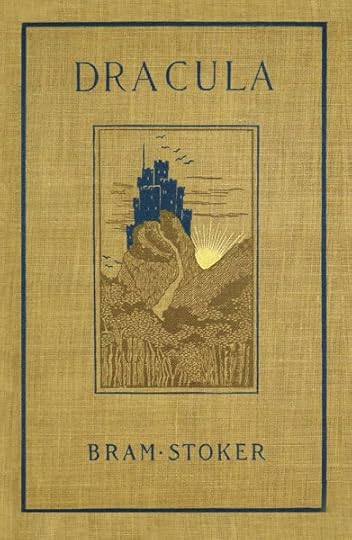 Bram Stoker: Dracula (1897)
Bram Stoker: Dracula (1897)"I’m also chipping away at Dracula," says Victor below, towards the end of his interview. I suspect that the reason this comment interests me is not simply because of my obsession with Bram Stoker, Sheridan Le Fanu, M. R. James, and other writers of gothic literature, but also because of the nature of the novel itself.
Readers who've come to the story by way of screen adaptations are often surprised by how complex and "intertextual" a novel Dracula is. It's made up of letters, diary entries, news reports - even transcripts of recordings made on wax cylinders: pretty dazzlingly innovative technology for the late 1890s.
In fact it could be argued that not only did this aspect of Stoker's narrative help to inspire steampunk, but its nature as a self-questioning artefact anticipates many of the innovations of the Nouveau roman of the 1950s.
I remark on it here because I think that it offers clues on how Victor might accommodate his taste for metaphysics with his undoubted talent for characterisation and narrative as he continues to develop as a writer.
If his father Richard exhibits a Walt Whitman-like taste for the vast and multifarious, sounding his "barbaric yawp over the roofs of the world", it might be said that it is Victor who more closely resembles George Meredith: not so much the syntactic complexity, but certainly the "chaos illumined by brilliant flashes of lightning."
How else could one characterise Jakey's story, this account of an "autistic 15-year-old boy" no one else knows exists?
I look forward to reading more by Victor in the future, while continuing to follow, with awe, Richard Taylor's fascinating, visionary, Blakean career.
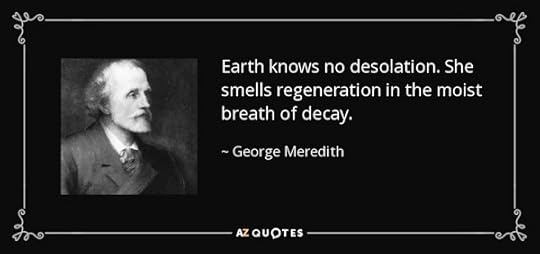 George Meredith (1828-1909)
George Meredith (1828-1909)•
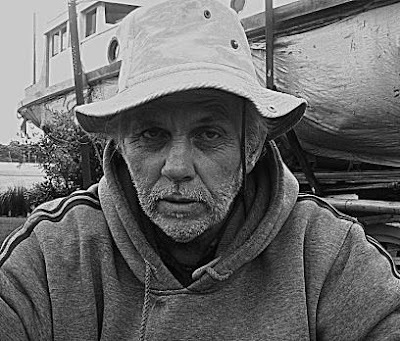 Richard Taylor (1948- )
Richard Taylor (1948- )'No Great Fixed Ideas':
Seven Questions with Richard Taylor
What are the strengths of your new book of poems, would you say?
I think the mix of "voices" and a mix of an intuitive and 'planned' way of writing. Thus I have mixed older (in style) with more recent work. I have a kind of focus. However I use as can be seen a range of texts to point to various ideas. In a sense - except inside my poems - I am not saying anything in the long titular poem -- or I am taking a position that explores. Also the book in the early stages signals later works. Often the quotes are either myself, others or a mixture of ... This creates an eerie effect sometimes beautiful. I mix more obviously 'beautiful' poems with more densely 'written' or language based.Why did you give it that title?
The title is from a review of Meredith as explained. Then it grew upon me that I am referring to myself. I think I am somehow and even want to be 'unpopular' but not in any radical way. I like the idea I have read almost nothing of Meredith but he seems to fascinate me and he evokes that review which in an essay on Meredith, Pritchett quotes, which I found out later ... It, the words of the review inspired me to write and I wrote that long poem very quickly. The other poems echo later poems and things in that long poem. Acker describes, in a way, my technique in the interview I quote. Bouvard and Pecuchet I love and they question forever! Thus I am a questioner ... Like Wittgenstein.What pleases you most about it?
I like the mix of poems. At the moment I need to do some more copies and correct some errors. But poems such as my truck poem join in with say 'Humpty Empty Back Make' or 'Glass Swan'. Although I use references or hints to other works I avoid the Eliot-Pound obsession with the decline of culture. I like their methods but I would celebrate William Carlos Williams as much as Eliot or his Paterson and also Hart Crane's Bridge, or the spirit of it, and also Moore's quotes sometimes as with Williams of 'ordinary' things and people. Hence both my father and mother talk in the poems as does the tramp in Gavin Bryars 'Jesus Christ never...' and there is a Maori Tohunga saying things we might not agree with but there he was, then my early story based on working in the freezing works (published) in Mate a long time ago, is there and some of a dramatic 'Shakespearean' poem mixes with my early paen to (it was my father and father-in law's death and so on. When I read the long poem or poems I find things that seem new each time.Is there anything about it that displeases you?
I always feel limited by a single medium. I wanted, but can afford, images and colours and much much more in the book and the text esp. the long poem. I am also a bit unfair calling Einstein 'Deathstein' but it was Leo Szilard (invented and patented (!) the chain reaction) who persuaded E. to write a letter to Roosevelt. Hence the Manhattan (Richard Rhodes The Making of the Atomic Bomb. I read this way before this film re Oppenheimer or Oppenhimmel.) But like Wittgenstein I think science and technology have been too highly lifted up into the light - this is something he felt during and after WWII and I feel this. But how to show my interest in philosophy and avoid something someone has seen in a movie and so on? There are poems in the first two parts I might have replaced but overall I feel I have a sufficient mix. I am trying to avoid one 'style'... perhaps influenced, say, by Barthes' Writing Degree Zero but also the idea to play, mix things, take a chance. The "bad" poems are always there. [Of course there are also typos etc but I am thinking of leaving them all in!] Ashbery and Sylvia Plath were two poets who in different ways were also important to me as Eliot was and still is given my wariness of him and Pound's obsessions ... Also Auden and some of the French symbolists et al ...Which people - writers, artists, musicians, or otherwise - have influenced you most?
I think that as a teenager all the usual Romantic poets, Shakespeare, Eliot, certain artists (all art interests me) and many novelists. Also my reading of Gerald Durrell, and the Scientific Book Club Books, and much else. Lewis Carroll, R A K Mason, and much else. But more recently from about 1988 or so. Jacob Bronowski's The Ascent of Man, and later Oliver Sacks, but I read for years a lot of John Ashbery's poetry, but also the US Language Poets, Stein somewhat, Beckett, Auden when I was a teenager but I still quote him and many others. Wordsworth and Keats, Coleridge but there are many modern poets in NZ also, and elsewhere. I like writers like Donald Barthelme and Kafka and Richard Brautigan, Rilke. Possibly Ted Berrigan and Berryman. It is accumulative as I am 'always reading'!
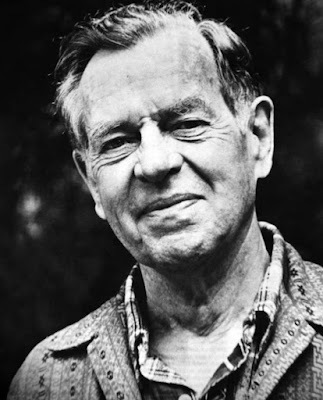 (1904-1987)
(1904-1987)Joseph Campbell said "Follow your bliss" - what's your bliss?
I wasn't sure who Campbell was. I would say it is reading but also being and being healthy in the world. Also learning but added to that a proviso like the narrator in Ford's The Sportswriter I like also to not know some things. The myths etc I invent myself as if talking to myself. I like Ovid's Metamorphosis rather than Dante. One bliss was reading The Brothers Karamazov more recently. In the world, just being, seeing beautiful things and trees and flowers or experiencing beautiful or interesting ideas and word combinations. The general phenomena of this world. No great fixed ideas.What are you reading at the moment? Poetry, or something else?
I am reading one of the diaries of Anne Truitt, an artist I hadn't known until I read her first book. Also I read some of Stein's 'Stanzas in Meditation', some Keats, but I like what to me is the comedy of Beckett so decided to read his trilogy Molloy, Malone Dies, and the Unnamable. I read widely but I read fairly recently Carson McCullers' The Heart is a Lonely Hunter. She was indeed a great writer.
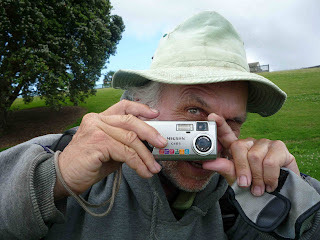 Richard, You MUST try to be more focused - (2012- )
Richard, You MUST try to be more focused - (2012- )•
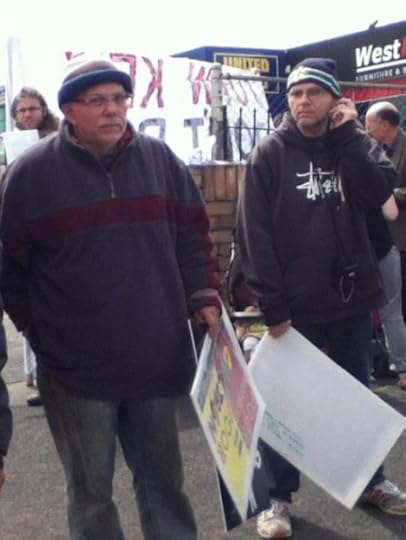 Janet Robin: Richard & Victor Taylor at a Protest (2012)
Janet Robin: Richard & Victor Taylor at a Protest (2012)'Pepperoni Pizzas & Metaphysical Ideas':
Seven Questions with Victor Taylor
What are the strengths of your new book of poems, would you say?
I’d say the main strength of my book lies in the variety of forms. The idea is to further separate and isolate each poem from the others. Every poem exists in its own spiritual domain — they don’t link up or form a narrative chain. This means the reader is encountering something entirely new with each piece.Why did you give it that title?
There is a similarity, however, in the metaphysical ideas. Many of the poems are surreal and transcendent, so the central strength is really in the images themselves.
Well, I played around with a few names — VAST, VOID, and some other more extravagant ones. RIFT felt simpler, perhaps more neutral. A rift means a break, split, or crack in something, and one of my goals is to break the reader’s perception of reality — to get them to question what is real. To me, dreams are just as real as waking reality.What pleases you most about it?
RIFT may have been chosen unconsciously. Maybe I felt isolated, like there’s a rift between me and everything else. Maybe I should have called it I am in the rift.
This is my first book, and I’m really pleased with it. For one, it’s the best thing I’ve ever produced. I began my journey into poetry when my father encouraged me to start reading books. From there, I eventually started writing a few poems of my own. I fell in love with the art form — it felt like magic, which, in many ways, it is.
What pleases me most is being able to express all my visions and images through poetry. That, to me, is the greatest joy.
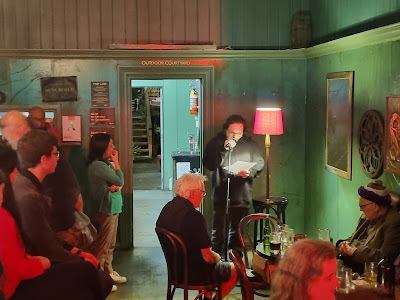 Fiona McEwen: Victor Taylor reading at Poetry Live (April 1, 2025)
Fiona McEwen: Victor Taylor reading at Poetry Live (April 1, 2025)Is there anything about it that displeases you?
Nothing really displeases me about poetry itself — except perhaps the continuous wave of confessionalist poetry. At its height, particularly around 2022 and 2023, it felt like a dense cloud of pathological blackness. That trend became overwhelming. Recently, I noticed an new style of poetry I call “Encryptic” poetry - emerging in 2025.Which people - writers, artists, musicians, or otherwise - have influenced you most?
Many people have influenced me. In the early days, I probably absorbed too much from others, which made it difficult to develop my own voice. That’s a common challenge when you’re starting out. But over time, with more experience, I’ve learned how to hold on to my own style while still drawing inspiration from others.Joseph Campbell said "Follow your bliss" - what's your bliss?
My dad — who’s a great poet — introduced me to many poets early on. I was especially drawn to the Romantic symbolists: Blake, Keats, Shelley. More recently, I’ve been reading Bob Kaufman, whose work offers a different kind of intensity and rhythm.
These days, with Facebook full of poetry groups and so many styles circulating, I think originality is more important than ever. I also have several friends who are poets, and being around them keeps me sharp and engaged with the craft.
Apart from pepperoni pizzas? Well — fantasy, and useless metaphysical ideas.What are you reading at the moment? Poetry, or something else?
I’m currently reading American Literature, which I was introduced to through my university course at Massey. Some of the authors include Henry James, Emily Dickinson, Sylvia Plath, and many others. I’m also chipping away at Dracula.
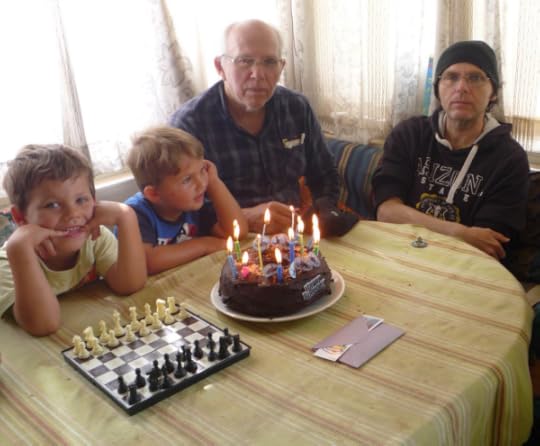 Father's Day (July 6, 2018)
Father's Day (July 6, 2018)l-to-r: Finnegan, Ellery, Richard & Victor Taylor
Times like this make life worth living
- Richard Taylor
•
Published on May 22, 2025 15:33
May 6, 2025
Confederates
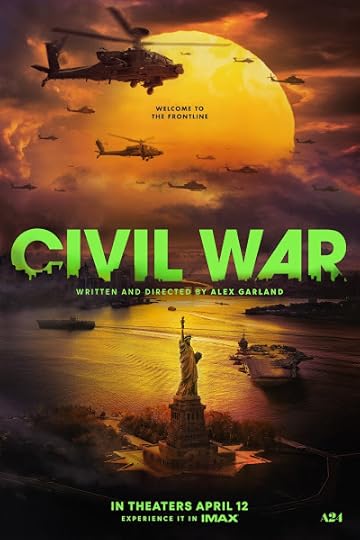 Alex Garland, dir.: Civil War (2024)
Alex Garland, dir.: Civil War (2024)I couldn't quite bring myself to go and see Alex Garland's much-hyped action film Civil War when it first hit the cinemas last year. It felt like an unnecessary incitement to violence at the time, pre-US election, when it still seemed possible - likely, even - that reason would prevail.
Now, a year later, having finally watched the movie, it's hard to see what what all the fuss was about. The Trump-like president, played by Nick Offerman, who's somehow hijacked his way into a third term, is opposed by a helicopter and tank-toting band of uniformed secessionists who appear to have almost infinite resources at their command.
 Civil War core cast:
Civil War core cast:[l-to-r: Kirsten Dunst, Wagner Moura, Stephen McKinley Henderson, Cailee Spaeny]
No, the morality of the plot is all to do with the coarsening effects of passively witnessing - and, in some cases, getting off on - other people's violent acts, in the guise of objective reportage. Kirsten Dunst (who plays a kind of updated version of World War II photojournalist Lee Miller) has become severely burnt out in the process.
She and her band of misfit reporters all learn a lot about themselves, and each other, in their perilous trek across war-torn America - replete with tortured looters on gibbets and corpses being trucked into mass graves - but unfortunately such self-knowledge seems to equate with being too slow to get out of the way of bullets in this movie, so most of the information ends up getting lost in transmission.
 Tony Horwitz: Confederates in the Attic (1998)
Tony Horwitz: Confederates in the Attic (1998)The main reason I decided to watch the film at all was because I'd just finished reading the book above, Tony Horwitz's 25-year-old exposé of the sheer extent of sympathy with the so-called "Lost Cause" of the Confederacy - not only in the Southern States, but across the United States as a whole.
Horwitz tries to stress the humorous side of this obsession, as in his account of a five-man reenactment of Pickett's charge by a squad of hardcore neo-rebels:
A lobster-red woman in a halter top matched Rob stride for stride, carefully studying his uniform.It all seems considerably less quaint and amusing now, after the 2021 Capitol riot and the exponential growth of such extremist groups as the Proud Boys and other far-right militants.
"What are you guys?" she asked.
"Confederates," Rob mumbled.
"Ferrets?"
"Confederates," Rob repeated.
"Oh," she said, looking underwhelmed. - Confederates in the Attic: 278.
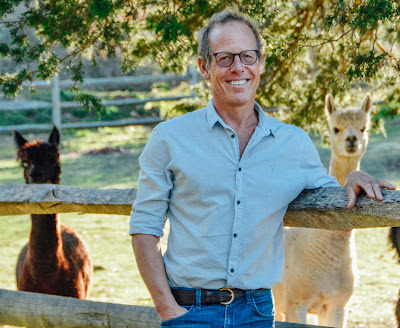 Tony Horwitz (1958-2019)
Tony Horwitz (1958-2019)•
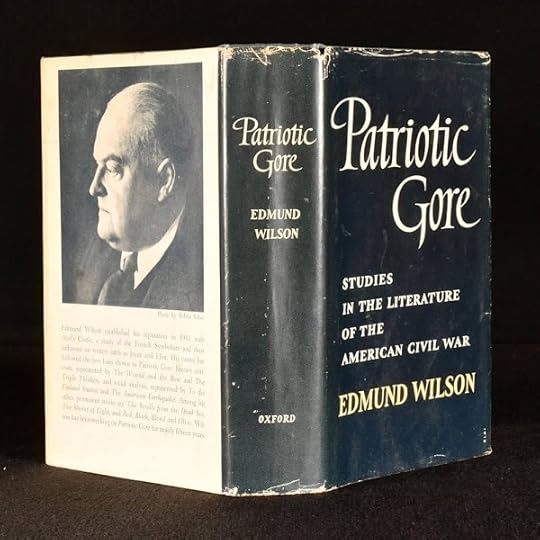 Edmund Wilson: Patriotic Gore (1963)
Edmund Wilson: Patriotic Gore (1963)It's not that unusual for me to read several books simultaneously. Sometimes I move through them at about the same rate; other times one takes over altogether. It can be quite a long drawn out process to get to the end of all of them.
Alongside Confederates in the Attic, I found myself rereading Edmund Wilson's rather ponderous set of "Studies in the Literature of the Civil War", Patriotic Gore. The two books have a lot more in common than simply treating the same subject in different ways.
Tony Horwitz won the Pulitzer Prize for national reporting in 1995, so he's no light-weight, despite the rather garish design and packaging of his book. But Edmund Wilson is certainly far more of a name to conjure with: one of America's most celebrated literary critics, three-time finalist in the National Book Awards (the second time for Patriotic Gore), he remains a distinctly impressive figure.
However, his dismissive, off-the-cuff verdicts on such present-day luminaries as H. P. Lovecraft ("Tales of the Marvellous and the Ridiculous," 1945) and J. R. R. Tolkien ("Oo, Those Awful Orcs!," 1956) have become so notorious that they now threaten to overshadow his more substantive achievements.
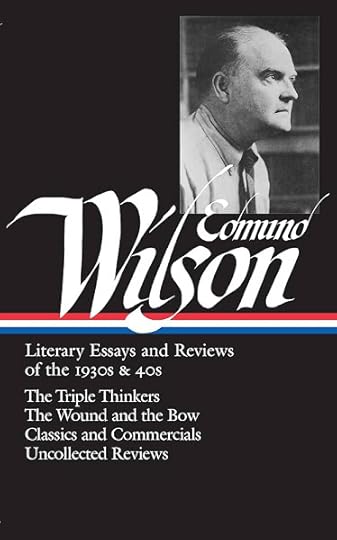 Edmund Wilson: Literary Essays and Reviews of the 1930s and 40s (2007)
Edmund Wilson: Literary Essays and Reviews of the 1930s and 40s (2007)Actually, Wilson's greatest legacy may well turn out to be the idea for the Library of America (1979- ), a uniform set of classic works from the United States, based loosely on the French Bibliothèque de la Pléiade (1931- ). It came to fruition only after his death, largely through the efforts of Jason Epstein and others, and it wasn't until a quarter of a century later that Wilson himself finally joined its ranks with a double-volume selection from his literary essays and reviews.
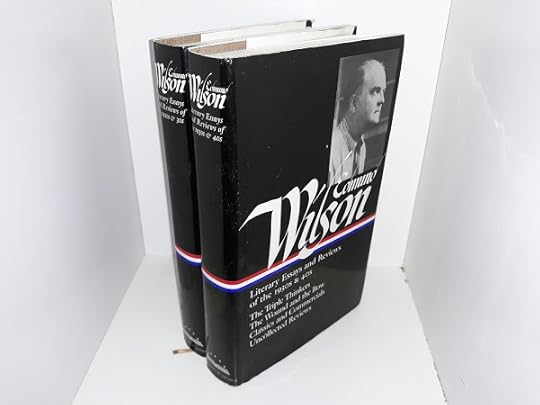 Edmund Wilson: Literary Essays and Reviews (2 vols: 2007)
Edmund Wilson: Literary Essays and Reviews (2 vols: 2007)The two books, Wilson's and Horwitz's, were published exactly 35 years apart, the first during the intense period of self-examination triggered by the Civil War centennial in the early 1960s, the second in the late Clinton era, pre-9/11, when the much-touted Pax Americana could still be seen as a valid concept.
In between the two came Shelby Foote.
•
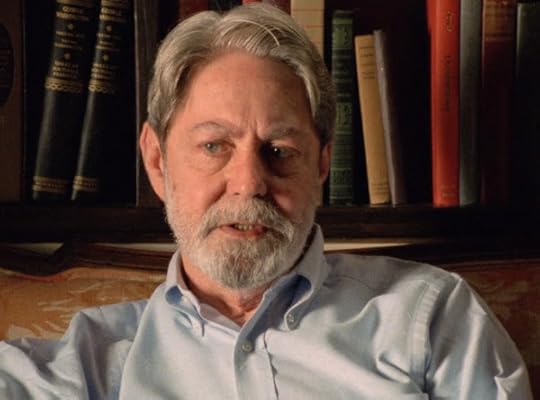 Ken Burns: Shelby Foote (1916-2005)
Ken Burns: Shelby Foote (1916-2005)Or rather, in the early 1990s, Ken Burns's phenomenally successful 9-part PBS documentary series The Civil War (1990) had the inadvertent effect of propelling a hitherto largely unknown Southern writer to international stardom.
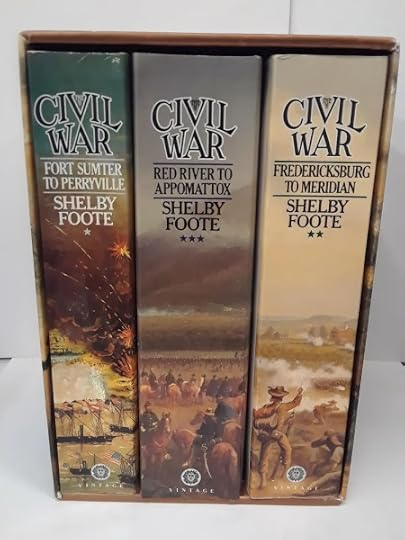 Shelby Foote: The Civil War: A Narrative (3 vols: 1958-74)
Shelby Foote: The Civil War: A Narrative (3 vols: 1958-74)That's the other book I've been rereading recently: Foote's immense narrative history of the civil war - a labour of love which took him almost twenty years to complete. I've already written a couple of posts on this subject - one in the larger context of the literature of the Civil War, the other as part of a piece on the alleged "amateurism" of narrative historians in general.
In the first of these pieces, written more than a decade ago, I was content to echo Foote's own assessment of his authorial stance:
Foote corrects the Union bias of earlier historians: an unabashed Southerner, he achieves a kind of imaginative empathy with the principal protagonists in the drama which is unlikely ever to be repeated or surpassed. This is certainly the best history of the war to date. It is a military history above all, though - if you want political insights, then Foote still needs to be supplemented by various others.In the second, composed more recently, in 2023, I'd altered my view somewhat:
Since the appearance of Ken Burn's ... Civil War ... which made Shelby Foote a star, his epic narrative history of the war has somewhat fallen from grace.
It's true that he does consciously go out of his way to present a more Southern view of the so-called "irrepressible conflict" than such Northern historians as Bruce Catton and Allan Nevins in their own multi-volume works. [However], his view that the two undoubted geniuses produced by the civil war were Abraham Lincoln and Nathan Bedford Forrest is no longer seen as an amusing paradox, but rather a clear statement of "Lost Cause" belief.
Certainly he was a man of his own time and place. Stuart Chapman's critical biography of Foote reveals the complexity of his upbringing and self-positioning in the America of Jim Crow and the early Civil Rights movement.
For myself, I find it far too facile to arrange the writers and thinkers of the past into convenient columns of "right-thinking" and "aberrant". It's perhaps going too far to say that tout comprendre, c'est tout pardonner, but being a liberal Southerner in the mid-twentieth century was not an easy row to hoe.
The fact that he's been criticised roundly by both sides for his views is surely some kind of testimony to his even-handedness? He's no apologist for racism by any means: no hagiographer of Southern rights, unlike General Lee's biographer Douglas Southall Freeman.
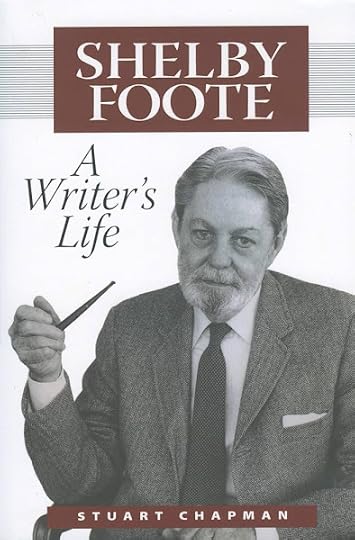 C. Stuart Chapman: Shelby Foote: A Writer's Life (2003)
C. Stuart Chapman: Shelby Foote: A Writer's Life (2003)It was rather a salutary experience to read Stuart Chapman's biography of Foote. The fact that it appeared two years before the writer's death may have inhibited Chapman somewhat in his analysis of the contradictions between Foote's warring ideological positions: on the one hand, sympathy for the South first and last; on the other, recognition of the futility of their continued refusal to recognise civil rights. Nevertheless, there was still much there to ponder.
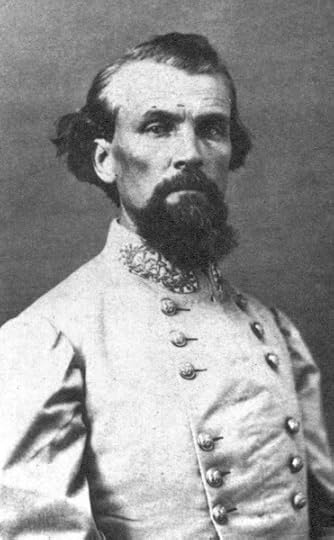 Nathan Bedford Forrest (1821-1877)
Nathan Bedford Forrest (1821-1877)Anove all, Chapman highlights Foote's passionate admiration for the dashing bravado of Nathan Bedford Forrest, slave-trader, military wizard, and first Grand Wizard of the Ku Klux Klan, contrasting it with the historian's slightly grudging respect for the genius of the Union hero, Abraham Lincoln.
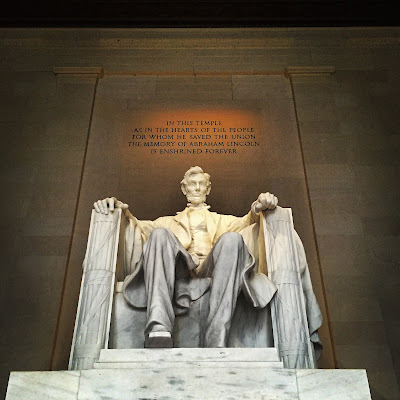 Abraham Lincoln (1809-1865)
Abraham Lincoln (1809-1865)I had thought that the two opposing principles were held in some kind of equilibrium - albeit precarious - in Foote's actual history of the war, but I now think I was wrong. What I detect there now is a resolute denial of the evidence for virtually any Southern atrocities (the Fort Pillow massacre, the appalling conditions at Andersonville prison), and a strange method of attributing victory to the side reporting the fewest overall casualties, regardless of the strategic consequences of such "triumphs". Antietam and Gettysburg become, for him, near-Southern successes rather than Union victories.
I can now see what his despised "professional historians" were complaining about when they criticised Foote for his uncritical use of a single, often unreliable, source when discussing complex issues and events. His failure to provide the complete set of references he'd earlier promised for the end of his third volume also begins to look a little suspicious in hindsight. Essentially he used the information which best suited his thesis, even when it came from dubious "Lost Cause" apologias.
In this respect, the chapter "At the Foote of the Master" in Horwitz's Confederates in the Attic makes even more interesting reading today than when it was first written. Rather than any kind of reconciliation with Yankeedom, it's Foote's fierce Southern nationalism which comes out most strongly in Horwitz's interview:
His great-grandfather [Colonel Hezekiah William Foote ... who owned five plantations and over one hundred slaves] had opposed secession but fought without hesitation for the South. "Just as I would have," Foote said. "I'd be with my people, right or wrong. If I was against slavery, I'd still be with the South. I'm a man, my society needs me, here I am. The difference between North and South in the war is that there was no stigma attached to the Northern man who paid two hundred dollars to not go to war, or who hired a German replacement. In the South you could have done that, but no one would. You'd have been scorned." [149-50]The saddest thing about all this is that the reader feels increasingly that this romanticising of the old South has come to mean more to Foote than any attempt to get at the truth - and also to suspect that the motives behind it are largely personal.
Although Foote did serve as an artillery captain in World War II, he missed going into combat on D-Day as a result of being court-martialled for falsifying documents: to wit, a mileage report he wrote to cover a clandestine trip to Belfast to see his then girl-friend (later wife).
Returning to America, Foote enlisted as a private in the marines and went through boot camp. But the war ended just as he was bound for combat again, this time in the Pacific. To paraphrase what he'd said of the Civil War, Foote had missed the great trauma of his own generation's adolescence. [149]His views on race are also somewhat troubling. He remarks on the consequences of Reconstruction:
"What has dismayed me so much is the behavior of blacks. They are fulfilling every dire prophecy the Ku Klux Klan made. It's no longer safe to be on the streets in black neighborhoods. They are acting as if the utter lie about blacks being somewhere between ape and man were true." [152]This particular diatribe, from a man who claims to have always supported racial integration, concludes with a comparison of the Klan "to the Free French Resistance to Nazi occupation," together with an "explanation" that:
"Freedom riders were a pretty weird-looking group to Southerners ... The men had odd haircuts and strange baggy clothes and seemed to associate with people with an intimacy that we didn't allow. So the so-called right-thinking people of the South said, 'They're sending their riffraff down here. Let our riffraff take care of them.' Then they sat back while the good ol' boys in the pickup trucks took care of it, under the Confederate banner." [154]And, à propos of Foote's claims about the greater social stigma of a failure to serve in the Confederate than in the Union army, it's curious that he fails to mention the 1862 "Twenty Negro Law" in the Southern States which "exempted from Confederate military service one white man for every twenty slaves owned on a Confederate plantation."
It was at this point in the conflict that the soldiers began to complain about a "rich man's war and a poor man's fight" - or, as Confederate soldier Sam Watkins put it:
Soldiers had enlisted for twelve months only, and had faithfully complied with their volunteer obligations; the terms for which they had enlisted had expired, and they naturally looked upon it that they had a right to go home ... War had become a reality; they were tired of it. A law had been passed by the Confederate States Congress called the conscript act. A soldier had no right to volunteer and to choose the branch of service he preferred. He was conscripted. From this time on till the end of the war, a soldier was simply a machine, a conscript ... All our pride and valor had gone, and we were sick of war and the Southern Confederacy.That has more of the ring of truth about it - to my ears, at least.
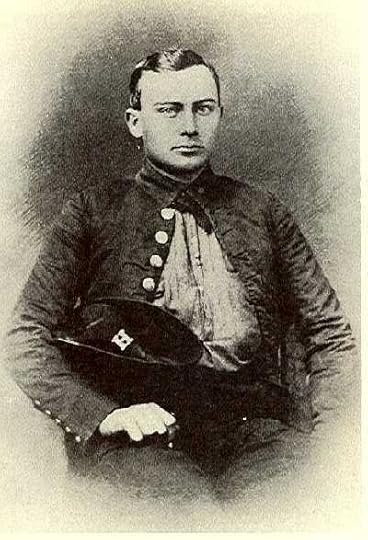 Samuel R. Watkins (1839-1901)
Samuel R. Watkins (1839-1901)•
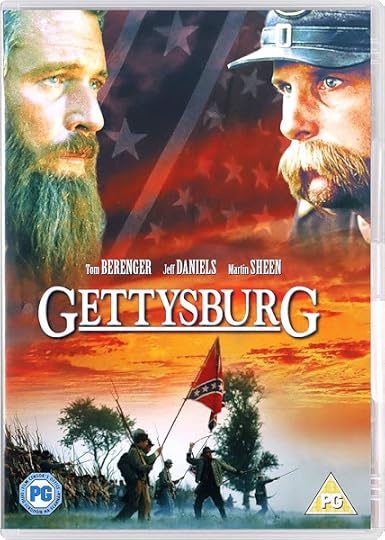 Ronald F. Maxwell, dir.: Gettysburg (1993)
Ronald F. Maxwell, dir.: Gettysburg (1993)[Based on The Killer Angels, by Michael Shaara (1974)]
A good deal of Tony Horwitz's book is concerned with the growing craze of Civil War reenactment. I remember seeing a vast horde of these reenactors - most of them looking disconcertingly well-fed - puffing up the slopes towards the Union centre in the "Pickett's Charge" scenes of Ronald Maxwell's four-hour war epic Gettysburg.
It's largely as a protest against such dilettantish, "farb" reenactments that Horwitz's friend Robert Lee Hodge and his friends perform their own hommage to Pickett's Charge - the one referred to in the passage quoted above.
Hodge and those like them try to recreate the actual - not the counterfeit - garb and physique of Confederate soldiers, as well as admiring their ethos. Another of his neologisms is "wargasm": an intense series of visits to as many classic battle sites as possible in a severely limited time-frame. And while it's hard to dispute Old Glory -author Jonathan Raban's view that he
would as soon tramp bare-foot through a snake-infested Ecuadorian marsh as spend a week in period costume, in the undiluted company of Robert Lee Hodge on a Civil Wargasm.It's almost equally difficult to disagree with his claim that "Horwitz deserves some sort of medal for valor on the reader's behalf as he immerses himself in a society that most readers would instinctively shun":
his version of the South is solidly credible throughout - and seriously bad news for the rest of America.Yes, the sting is in the tail there. It was - and still is - bad news for the rest of America. And while it may only have been the central concern of a few hardcore eccentrics in 1998, now, in 2025, the lunatics have definitely taken over the asylum.
I wish I could claim to have foreseen something of the sort some years ago, when I wrote the following poem - based on a viewing of the interminable Gettysburg (1993) and its even more tedious successor Gods and Generals (2003). Alas, at the time, like Horwitz, I still saw the whole thing as a bit of a laugh.
•
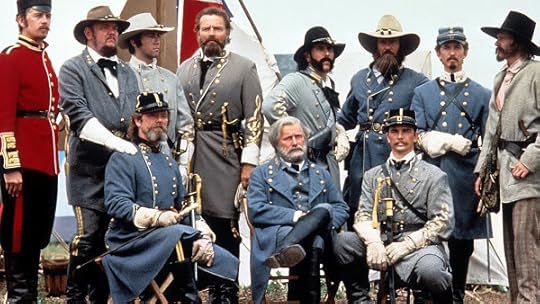 Ronald F. Maxwell, dir.: Gettysburg (1993)
Ronald F. Maxwell, dir.: Gettysburg (1993)
Gettysburg
The worst fake beards
in the history of cinema
Tom Berenger in particular
looked like the pirate king
in panto
but more to the point
I never realized
so many Confederates
detested slavery
regretted it hadn’t
already been abolished
what they were fighting for
was liberty of conscience
independence
pushing back Northern invaders
(by invading the North)
nor did I know that Robert E. Lee
had never abandoned a battlefield
in the face of the enemy
Antietam?
so the whole thing was just
a ghastly mistake
where the Northerners took advantage
of their nobler opponents
in their mechanistic way
In Gods and Generals
the prequel
we further learn
that not only did Jackson too
hate slavery
but that he used to prance round
playing horsey
with five-year-old girls
and weeping buckets
when the latter died
he’s crying for all of us
for the whole war
said an awestruck aide
I know just how he felt
[20/1/16-22/10/17]
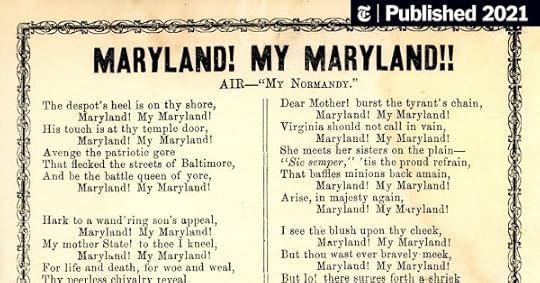 James Ryder Randall: Maryland, My Maryland (1861)
James Ryder Randall: Maryland, My Maryland (1861)•
 Tony Horwitz (2009)
Tony Horwitz (2009)Anthony Lander Horwitz
(1958-2019)
Books:
One for the Road: a Hitchhiker's Outback (1987)Baghdad Without A Map (1991)Confederates in the Attic (1998)Blue Latitudes: Boldly Going Where Captain Cook Has Gone Before [aka "Into the Blue: Boldly Going Where Captain Cook Has Gone Before"] (2002)The Devil May Care: 50 Intrepid Americans and Their Quest for the Unknown (2003)A Voyage Long and Strange: Rediscovering the New World (2008)Midnight Rising: John Brown and the Raid That Sparked the Civil War (2011)BOOM: Oil, Money, Cowboys, Strippers, and the Energy Rush That Could Change America Forever (2014)Spying on the South: An Odyssey Across the American Divide (2019)
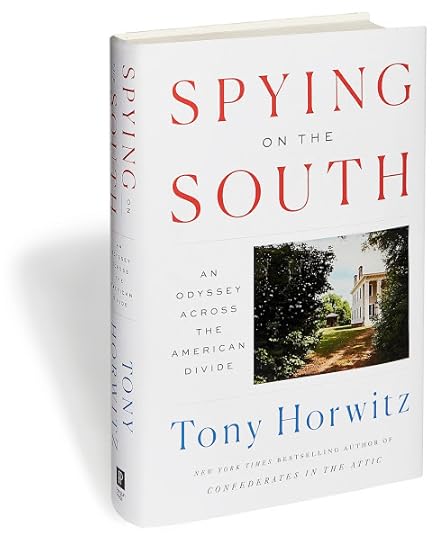 Tony Horwitz: Spying on the South (2019)
Tony Horwitz: Spying on the South (2019)•
Published on May 06, 2025 15:37
April 12, 2025
Favourite Children's Authors: Laura Ingalls Wilder
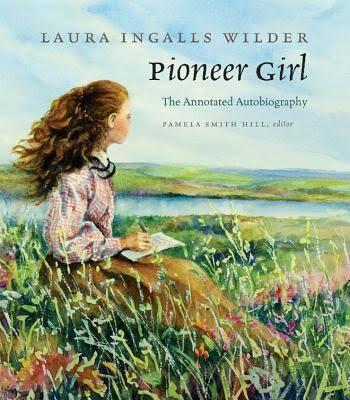 Laura Ingalls Wilder: Pioneer Girl: The Annotated Autobiography (1930 / 2014)
Laura Ingalls Wilder: Pioneer Girl: The Annotated Autobiography (1930 / 2014)It was Wednesday the 6th of October, 2021. Auckland was in the middle of yet another COVID lockdown. We were feeling a bit peeved because (as usual) it seemed to be just us again: stuck in our bubbles, cycling through the same old bits of dross on TV, while the rest of the country went out to meet one another and enjoy the Spring weather.
But, as it turned out, we had not been forgotten! A care package arrived from my brother-in-law Greg and his partner Celia in Martinborough: two boxes of books from the Book Grocer.
I seized on the box of biographies, Bronwyn the box of craft books. Besides a couple of celebrity pop star memoirs, which didn't really take my fancy, my box contained: Frederick Forsyth: The Outsider: My Life in Intrigue (2015)Caroline Fraser: Prairie Fires: The American Dreams of Laura Ingalls Wilder (2017)Nelson Mandela: Dare Not Linger: The Presidential Years (2016)Philip Norman: Paul McCartney: The Life (2016)Ramie Targoff: Renaissance Woman: The Life of Vittoria Colonna (2018)Frances Wilson: Guilty Thing: A Life of Thomas De Quincey (2016) I wrote a post about the last one in the list a few years ago, but haven't really had a chance to do justice to any of the others until now.
It's probably only right that I should confess that the first book that fell open in my hand was the biography of Paul McCartney, Since then I've gone even further down that particular rabbit hole by purchasing Irish poet Paul Muldoon's weirdly compelling edition of the former's collected lyrics:
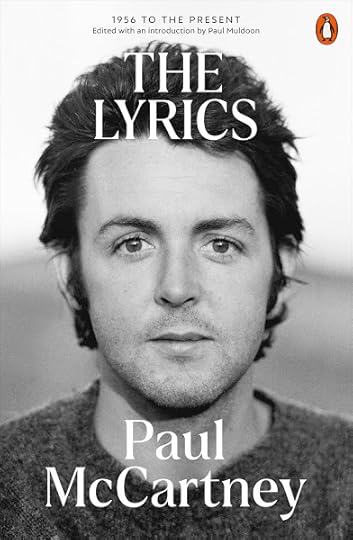 Paul McCartney: The Lyrics: 1956 to the Present. Ed. Paul Muldoon (2021)
Paul McCartney: The Lyrics: 1956 to the Present. Ed. Paul Muldoon (2021)Getting back to the point, though, I was especially excited to see there a copy of Caroline Fraser's Pulitzer-Prize-winning biography of Laura Ingalls Wilder, an author whom I read a good deal of as a child once I managed to get over my prejudice against such a "girly-looking" set of books.
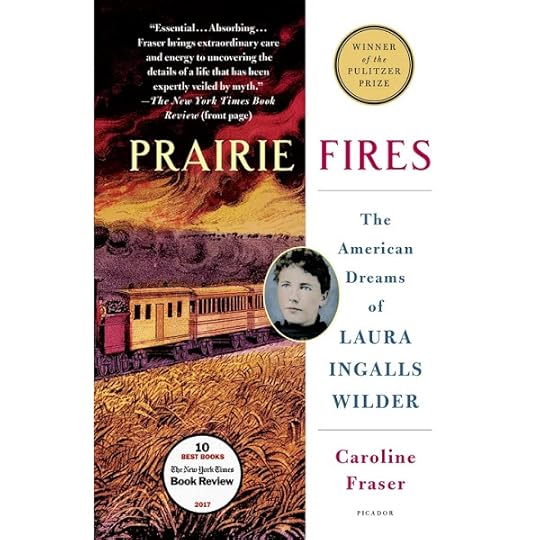 Caroline Fraser: Prairie Fires: The American Dreams of Laura Ingalls Wilder (2017)
Caroline Fraser: Prairie Fires: The American Dreams of Laura Ingalls Wilder (2017)My mother and sister were particular devotees of her work; all of us watched the saccharine, Michael Landon-dominated Little House on the Prairie TV series with gritted teeth, amid repeated asseverations that the books were "not like that."
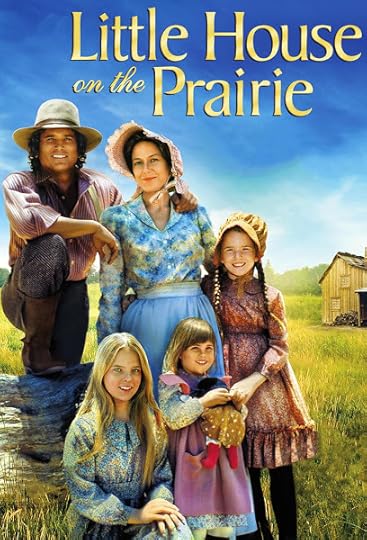 Blanche Hanalis: Little House on the Prairie (1974-83)
Blanche Hanalis: Little House on the Prairie (1974-83)l-to-r: Michael Landon as 'Charles Ingalls', Melissa Sue Anderson as 'Mary', Karen Grassle as 'Caroline',
Rachel Lindsay Greenbush as 'Carrie', & Melissa Gilbert as 'Laura'
•
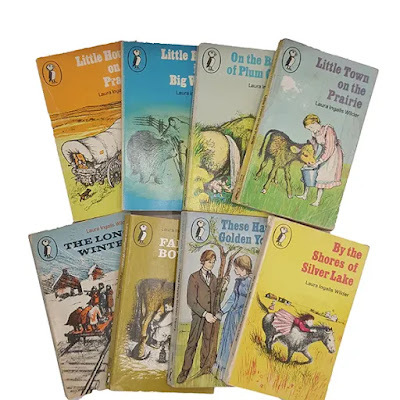 Laura Ingalls Wilder: The Little House Books (1932-43)
Laura Ingalls Wilder: The Little House Books (1932-43)Here they all are, in the 1970s Puffin copies we read, with the charming pencil and charcoal illustrations commissioned from American artist Garth Williams for a uniform edition in the late 1940s / early 1950s:
Little House in the Big Woods (1932)Farmer Boy (1933)Little House on the Prairie (1935)On the Banks of Plum Creek (1937)By the Shores of Silver Lake (1939)The Long Winter (1940)Little Town on the Prairie (1941)These Happy Golden Years (1943)
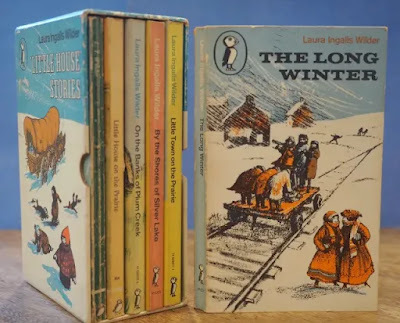 Laura Ingalls Wilder: The Little House Books (1932-43)
Laura Ingalls Wilder: The Little House Books (1932-43)The picture directly above, from Roslyn Jolly's own book-related blog, comes from a post written during the 2020 COVID lockdown in Australia. She, too, saw certain parallels between the privations described in Wilder's books and the strange new lifestyle imposed on us by the virus mandates:
That does seem to be a common theme when these books are discussed - not so much the moral lessons inculcated by them, as their direct appeals to shared experience. The Long Winter is probably my favourite among them, too. It's so much more condensed and single-minded than the others - and the settlers' failure to heed the old Indian's warning at the beginning gives a satisfying sense of poetic justice to the whole story.
The Long Winter must have made a great impression on me, because I found myself thinking of it almost as we started to find the shape of our days under the new COVID-19 restrictions. No travel. No leaving the house except for essential purposes. No meetings with anyone outside the household. The restlessness of being cooped up. Tensions flaring within the family. A growing sense of isolation from the rest of society. I’d encountered it all before, in Wilder’s book.
•
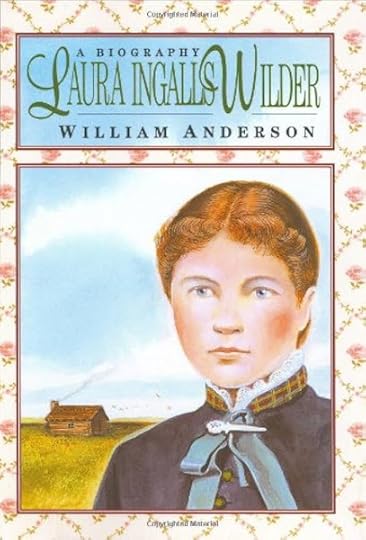 Wiliam Anderson: Laura Ingalls Wilder: A Biography (1992)
Wiliam Anderson: Laura Ingalls Wilder: A Biography (1992)Laura Ingalls Wilder scholarship, too, is certainly the province of some very engaged and single-minded enthusiasts. Before Caroline Fraser's biography was published in 2017, the main sources of information about the author were the biographies by William Anderson - who also edited Wilder's Selected Letters (2017) - and Pamela Smith Hill.
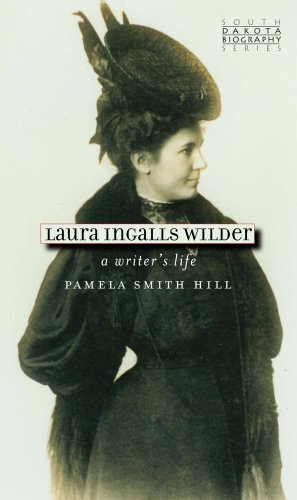 Pamela Smith Hill: Laura Ingalls Wilder: A Writer's Life (2007)
Pamela Smith Hill: Laura Ingalls Wilder: A Writer's Life (2007)Despite the fact that Hill also edited the 2014 annotated edition of Laura Ingalls Wilder's original 1930 autobiography, Pioneer Girl, I was surprised to find virtually no reference to her in Fraser's work. She isn't mentioned in the index, and - since Fraser's book has notes but no bibliography - it's a little difficult even to locate the details of the annotated Pioneer Girl there, either.
 Pamela Smith Hill (1954- )
Pamela Smith Hill (1954- )Am I wrong to suspect some friction between the two? It certainly looks a bit like that. Fraser - one of whose previous books was entitled Rewilding the World - has solid credentials in the environmental movement. Hill, by contrast, is a children's writer and creative writing teacher with more pronounced roots in the American MidWest.
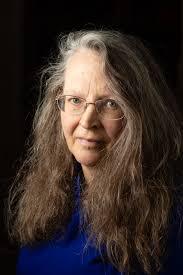 Caroline Fraser (2025)
Caroline Fraser (2025)I guess it came as a surprise to many when Laura Ingalls Wilder achieved canonisation in the Library of America series in 2012, the first purely children's writer to do so - though she's since been joined there by Madeleine L'Engle and Virginia Hamilton. The editor of their two 'Little House' volumes was Caroline Fraser:
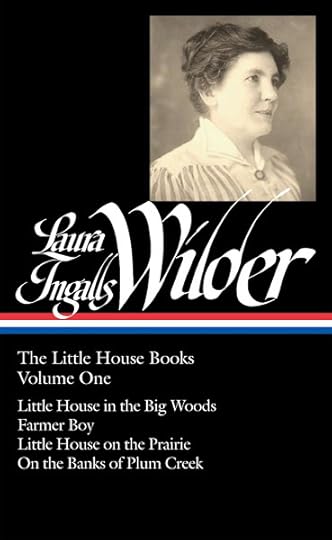 Laura Ingalls Wilder: The Little House Books (Vol. 1: 2012)
Laura Ingalls Wilder: The Little House Books (Vol. 1: 2012)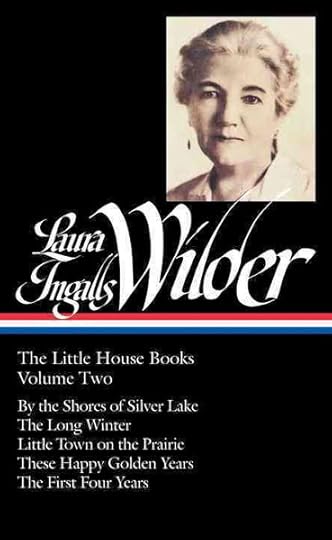 Laura Ingalls Wilder: The Little House Books (Vol. 2: 2012)
Laura Ingalls Wilder: The Little House Books (Vol. 2: 2012)Hill's version of Pioneer Girl came out two years after this. So far as I can tell, it makes no reference to the Library of America edition: either by citing its (very useful) chronology or its bibliographical details. Hill's latest word on the subject is, however, due to appear from the University of Nebraska Press in a couple of months time:
 Pamela Smith Hill: Too Good to Be Altogether Lost (2025)
Pamela Smith Hill: Too Good to Be Altogether Lost (2025)Curiously enough, Caroline Fraser - but not Pamela Smith Hill - was asked to contribute to a 2017 symposium of essays on Wilder which appeared under the same auspices as the annotated Pioneer Girl.
 Nancy Tystad Koupal, ed.: Pioneer Girl Perspectives: Exploring Laura Ingalls Wilder (2017)
Nancy Tystad Koupal, ed.: Pioneer Girl Perspectives: Exploring Laura Ingalls Wilder (2017)And, lest that be seen as an accidental omission, it's perhaps equally significant that the editors of the "Pioneer Girl project" have gone on to supplement Pamela Smith Hill's syncretic version of Wilder's original scribbled pencil manuscript with a new edition of the original revised typescripts of her autobiography.
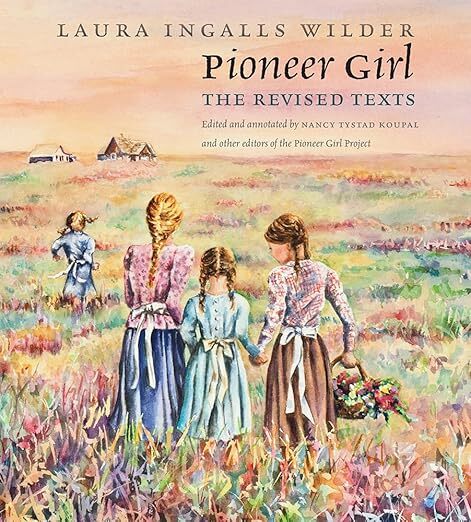 Nancy Tystad Koupal, ed: Pioneer Girl: The Revised Texts (2022)
Nancy Tystad Koupal, ed: Pioneer Girl: The Revised Texts (2022)Mind you, I could easily be seeing friction where there's actually mutual respect - either that, or complete indifference. I somehow doubt it, though. The world of scholarship is not exactly replete with constructive, happy rivalries. Caroline Fraser's mainstream triumphs - the Library of America, the Pulitzer Prize - have ended up putting Pamela Smith Hill rather in the shade, whether intentionally or not.
•
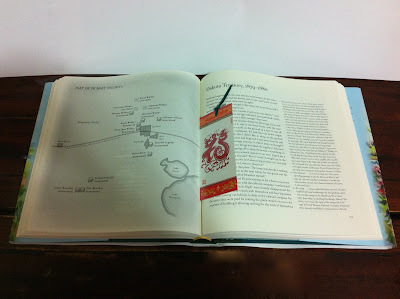 Laura Ingalls Wilder: Pioneer Girl: The Annotated Autobiography (2014)
Laura Ingalls Wilder: Pioneer Girl: The Annotated Autobiography (2014)The real winners, though, are undoubtedly readers such as myself. I certainly found the annotated Pioneer Girl a wonderfully immersive book. As Marthe Bijman remarks in her review of it on the Seven Circumstances site:
The text of Wilder’s original Pioneer Girl memoir is reproduced in the book, and contrasted and highlighted with copious, and I do mean copious, annotations, references and explanations.
 Laura Ingalls Wilder: Pioneer Girl: The Annotated Autobiography (2014)
Laura Ingalls Wilder: Pioneer Girl: The Annotated Autobiography (2014)It is hard to fault in that regard. The maps are clear and well-placed, and the pictures - such as the Helen Sewell illustration above - judiciously chosen for maximum impact. As something of a connoisseur of annotated editions, I'd have to rate this one in the top ten percent for both entertainment and information. It's perhaps a little large for casual reading, but then that is the norm for such books.
Bijman stresses that, while "Pioneer Girl is much more complicated and personal than the books":
This is the definitive guide to Laura Ingalls Wilder and her life from to 1869 in Kansas to 1888 in Dakota Territory. Almost every word in the memoir has been annotated and the references are detailed, with documents, photos, registers and archival materials. Yes, the Little House books have lost some of their charm because I now understand they are more fiction than autobiographical – but there is still magic in the books.
•
 Caroline Fraser: Prairie Fires: The American Dreams of Laura Ingalls Wilder (2017)
Caroline Fraser: Prairie Fires: The American Dreams of Laura Ingalls Wilder (2017)As for Caroline Fraser's work, the chorus of praise it's attracted really speaks for itself. It should be stressed, however, that this is a warts-and-all biography which omits none of the unfortunate contradictions between the reality of Laura Ingalls Wilder's life and the neat resolutions imposed on it by her autobiographical fictions.
It's not so much a simple life-and-times, as an expert weaving of American history in all its variety and violence into an account of the crippling hardships suffered by the Ingalls family and their neighbours during the late, post-Civil War period of Westward Expansion.
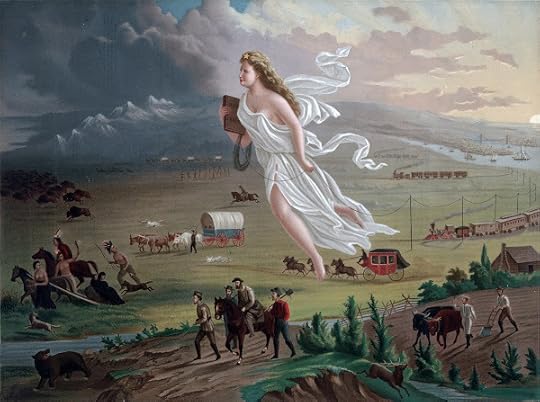 John Gast: American Progress (1872)
John Gast: American Progress (1872)From the Dakota war of 1862, with its barbarous aftermath of mass executions and enforced displacement of the Sioux people; through the homesteading era, with its droughts and locust infestations; all the way to the Dust Bowl and the Great Depression, Fraser points out the hidden significances behind Wilder's apparently ingenuous and factual books.
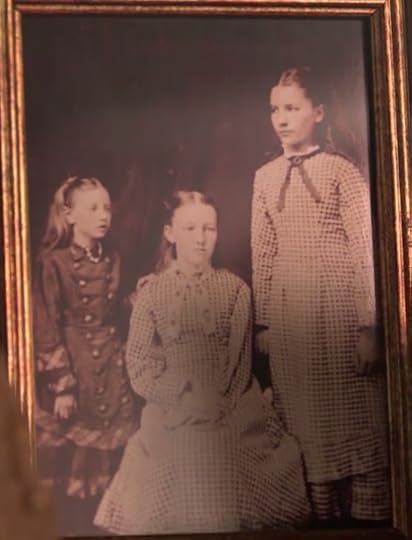 Carrie, Mary, & Laura Ingalls (c.1879)
Carrie, Mary, & Laura Ingalls (c.1879)In particular, she traces the vexed relationship between Laura Ingalls Wilder and her daughter Rose Wilder Lane, herself a celebrated writer in the 1920s and 30s - though she's now better known as one of the ideologues (along with Ayn Rand) behind the American libertarian movement.
Lane was both her mother's Maxwell Perkins, the editorial presence who inspired and helped to shape her books, and her nemesis: a conscienceless spirit of misrule, who alternately longed for and repudiated her family but could never really separate herself from them.
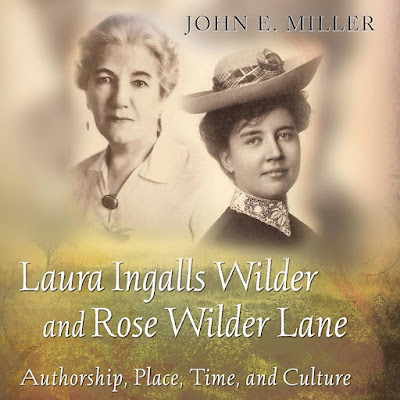 John E. Miller: Laura Ingalls Wilder & Rose Wilder Lane (2022)
John E. Miller: Laura Ingalls Wilder & Rose Wilder Lane (2022)All in all, it's a rattling good yarn - every bit as good as any of Wilder's own. It's hard to imagine any serious study or appreciation of the Little House books being possible in the future without a thorough grounding in Caroline Fraser's insights. But it's also easy to see how much it must have offended some of Wilder's more conservative admirers when it first came out.
Given that Fraser's previous books include God's Perfect Child (1999), an account of her upbringing in the Christian Science Church - described as follows in a New York Times review by Philip Zaleski: "Few darker portraits of [Mary Baker Eddy] have emerged since the days when Mark Twain called her a brass god with clay legs" - her status as a tearer-down of false gods is undeniable.
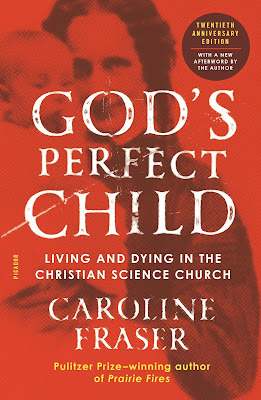 Caroline Fraser: God's Perfect Child (1999)
Caroline Fraser: God's Perfect Child (1999)That great sceptic and authority on the lunatic fringe, Martin Gardner, said of her:
No one has written more entertainingly and accurately than Fraser about the history of Christian Science ... No one has more colorfully covered the ... endless bitter schisms and bad judgments that have dogged it ...Anita Sethi, in her turn, has praised Prairie Fires for demonstrating that "Memories can be both 'treasures' and 'consuming fires of torment':
Caroline Fraser’s rigorously researched biography shows how [Laura Ingalls Wilder]’s life was so much more painful than it appears in her autobiographical writings ... At its best, the book displays both the perils and the power of memory.
•
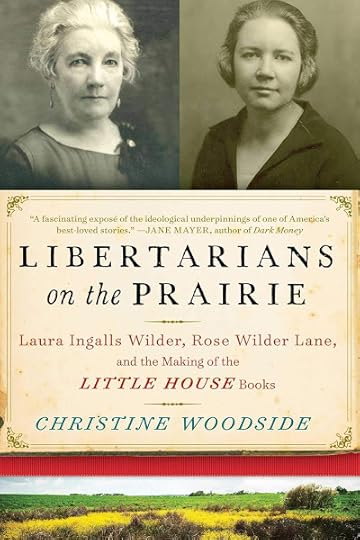 Christine Woodside: Libertarians on the Prairie (2016)
Christine Woodside: Libertarians on the Prairie (2016)In the dark days we're living through at present, with a USA which has revived its delusions of Manifest Destiny in a globalised world no longer equipped to co-exist with them, the parable of Laura Ingalls Wilder's actual life, and self-created legend, seems to have particular significance.
American exceptionalism; American lives; American this, that and the other ... the unfortunate elision of this adjective with the word "human" is something we've had to put up with for many years now. But whether any of us like it or not, I doubt that this collective mirage can survive for much longer.
Americans are notorious for being both their own bitterest critics and their own windiest boosters. It's nice to take confirmation from Caroline Fraser's excellent, hard-hitting book, that the defenders of the former tradition are alive and well and ready to do battle for the meaning of their history - which may, ominously, turn out to be the shape of their own future.
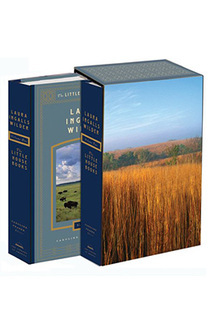 Laura Ingalls Wilder: The Little House Books: Boxed Set (Library of America: 2012)
Laura Ingalls Wilder: The Little House Books: Boxed Set (Library of America: 2012)•
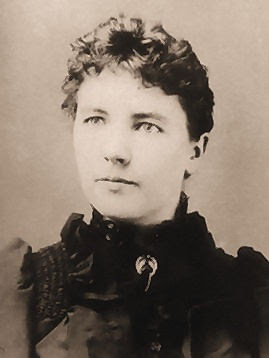 Laura Ingalls Wilder (1885)
Laura Ingalls Wilder (1885)Laura Elizabeth Ingalls Wilder
(1867-1957)
The Little House books:
Little House in the Big Woods. Illustrated by Helen Sewell (1932)Little House in the Big Woods. 1932. Illustrated by Garth Williams. Puffin Books. 1963. Harmondsworth: Penguin, 1978. Farmer Boy. Illustrated by Helen Sewell (1933)Farmer Boy. 1933. Illustrated by Garth Williams. Puffin Books. 1972. Harmondsworth: Penguin, 1981. Little House on the Prairie. Illustrated by Helen Sewell (1935)Little House on the Prairie. 1935. Illustrated by Garth Williams. Puffin Books. 1964. Harmondsworth: Penguin, 1975. On the Banks of Plum Creek. Illustrated by Helen Sewell & Mildred Boyle (1937)On the Banks of Plum Creek. 1937. Rev. ed. 1953. Illustrated by Garth Williams. Puffin Books. 1965. Harmondsworth: Penguin, 1974. By the Shores of Silver Lake. Illustrated by Helen Sewell & Mildred Boyle (1939)By the Shores of Silver Lake. 1939. Illustrated by Garth Williams. Puffin Books. 1967. Harmondsworth: Penguin, 1972. The Long Winter. Illustrated by Helen Sewell & Mildred Boyle (1940)The Long Winter. 1940. Illustrated by Garth Williams. Puffin Books. 1968. Harmondsworth: Penguin, 1980. Little Town on the Prairie. Illustrated by Helen Sewell & Mildred Boyle (1941)Little Town on the Prairie. 1941. Illustrated by Garth Williams. Puffin Books. 1969. Harmondsworth: Penguin, 1978. These Happy Golden Years. Illustrated by Helen Sewell & Mildred Boyle (1943)These Happy Golden Years. 1943. Illustrated by Garth Williams. Puffin Books. 1970. Harmondsworth: Penguin, 1971. The Little House Books, Vol. 1. Ed. Caroline Fraser. Library of America, 229 (2012)Little House in the Big Woods (1932)Farmer Boy (1933)Little House on the Prairie (1935)On the Banks of Plum Creek (1937) The Little House Books, Vol. 2. Ed. Caroline Fraser. Library of America, 230 (2012) By the Shores of Silver Lake (1939)The Long Winter (1940)Little Town on the Prairie (1941)These Happy Golden Years (1943)The First Four Years (1971)
Published posthumously:
On the Way Home: The Diary Of A Trip From South Dakota To Mansfield, Missouri in 1894. Ed. Rose Wilder Lane (1962)The First Four Years (1971)The First Four Years. 1971. Epilogue by Rose Wilder Lane from "On the Way Home". 1962. 1973. Puffin Books. 1978. Harmondsworth: Penguin, 1981. West From Home: Letters Of Laura Ingalls Wilder, San Francisco, 1915. Ed. Roger Lea MacBride (1974)A Little House Sampler. With Rose Wilder Lane. Ed. William Anderson (1988 / 1989)Little House in the Ozarks: The Rediscovered Writings. Ed. Stephen W. Hines (1991)Laura Ingalls Wilder & Rose Wilder Lane, Letters 1937–1939. Ed. Timothy Walch (1992)Laura Ingalls Wilder Farm Journalist: Writings from the Ozarks. Ed. Stephen W. Hines (1997)A Little House Reader: A Collection of Writings. Ed. William Anderson (1998)Laura's Album: A Remembrance Scrapbook of Laura Ingalls Wilder. Ed. William Anderson (1998)Laura Ingalls Wilder's Fairy Poems. Ed. Stephen W. Hines. Illustrated by Richard Hull (1998)A Little House Traveler: Writings from Laura Ingalls Wilder's Journeys Across America (2006)On the Way Home (1894)West from Home (1915)The Road Back Home (1931) Writings to Young Women. Ed. Stephen W. Hines (2006)On Wisdom and VirtuesOn Life as a Pioneer WomanAs Told by Her Family, Friends, and Neighbors Before the Prairie Books: The Writings of Laura Ingalls Wilder 1911–1916: The Small Farm. Ed. Dan L. White (2010)Before the Prairie Books: The Writings of Laura Ingalls Wilder 1917–1918: The War Years. Ed. Dan L. White (2010)Before the Prairie Books: The Writings of Laura Ingalls Wilder 1919–1920: The Farm Home. Ed. Dan L. White (2010)Before the Prairie Books: The Writings of Laura Ingalls Wilder 1921–1924: A Farm Woman. Ed. Dan L. White (2010)Laura Ingalls Wilder's Most Inspiring Writings: Covering the Years 1911 Through 1924. Ed. Dan L. White (2015)Laura Ingalls Wilder: A Pioneer Girl's World View: Selected Newspaper Columns (2014)Pioneer Girl: The Annotated Autobiography. Ed. Pamela Smith Hill (2014)Pioneer Girl: The Annotated Autobiography. Ed. Pamela Smith Hill. A Publication of the Pioneer Girl Project: Nancy Tystad Koupal, Director; Rodger Hartley, Associate Editor; Jeanne Kilen Ode, Associate Editor. Pierre: South Dakota Historical Society Press, 2014. The Selected Letters of Laura Ingalls Wilder: A Pioneer's Correspondence. Ed. William Anderson (2017)Pioneer Girl: The Revised Texts. Ed. Nancy Tystad Koupal (2022)
Secondary:
Zochert, Donald. Laura: The Life of Laura Ingalls Wilder (1976)Anderson, William. Laura Ingalls Wilder: A Biography (1992)Holtz, William. The Ghost in the Little House: A Life of Rose Wilder Lane (1993)Miller, John E. Becoming Laura Ingalls Wilder: The Woman Behind the Legend (1998)Hill, Pamela Smith. Laura Ingalls Wilder: A Writer's Life (2007)Miller, John E. Laura Ingalls Wilder and Rose Wilder Lane: Authorship, Place, Time, and Culture (2008)Pioneer Girl Perspectives: Exploring Laura Ingalls Wilder. Ed. Nancy Tystad Koupal (2017)Fraser, Caroline. Prairie Fires: The American Dreams of Laura Ingalls Wilder. Metropolitan Book. New York: Henry Holt And Company, 2017.Hill, Pamela Smith. Too Good to Be Altogether Lost: Rediscovering Laura Ingalls Wilder's Little House Books (2025)
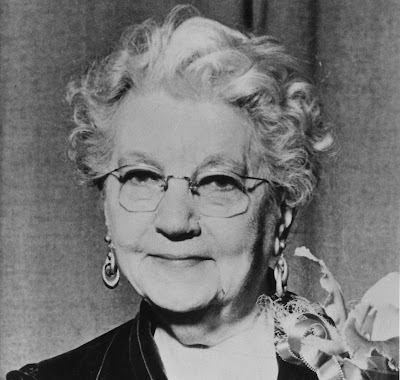 Laura Ingalls Wilder (1951)
Laura Ingalls Wilder (1951)•
Published on April 12, 2025 13:17
April 1, 2025
Favourite Children's Authors: Peter Dickinson
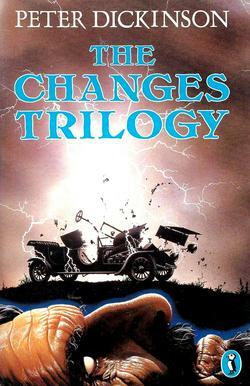 Peter Dickinson: The Changes Trilogy (1975)
Peter Dickinson: The Changes Trilogy (1975)When Robert Lowell's groundbreaking collection Life Studies first came out in the UK in 1959, "the British reviews were fairly tepid." After listing the reservations of such luminaries as Al Alvarez, G. S. Fraser, Roy Fuller, Frank Kermode, and Philip Larkin, Lowell's biographer Ian Hamilton throws in as a parthian shot:
... and someone called Peter Dickinson in Punch announced that "few of the poems are in themselves memorable."- Ian Hamilton, Robert Lowell: A Biography (1982): 269.Nice going. They didn't call Hamilton "Mr. Nasty" for nothing. That "someone called Peter Dickinson" was, admittedly, not very well known for anything much at the time - besides being the literary editor of Punch, that is.
His first detective novels were still some years in the future, and it'd be another decade before he started publishing the children's books which would, eventually, make his name. But even so ... "Do you have to leave blood on the floor at the end of every meeting?" as an academic of my acquaintance once said to an up-and-coming careerist in the same field.
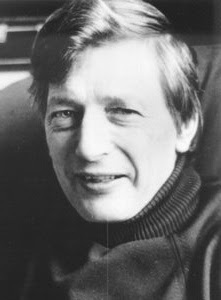 Fay Godwin: Peter Dickinson (1975)
Fay Godwin: Peter Dickinson (1975)I used to wonder why Dickinson used to claim, at the end of his "About the Author" blurbs:
His main interest, he says, "is writing verse. A lost art, in the way I do it. I feel like a man making wooden carriage wheels for the one customer who wants them."A collection of these "verses", The Weir (2007), was eventually published by his four children as a birthday tribute a few years before his death. Here's a sample, from an advertisement for the book:
Self-published (thus not quite print-on-demand) it is attractively printed and is to be had from 1 Arlebury Park Mews, Alresford, Hants. S0 24 9ER – an address celebrated in the final Palinode:Hmmm. "More plaintive than constructive," I fear - to borrow a phrase from John Wyndham's The Kraken Wakes - certainly not particularly instructive. The only other set of verses I've managed to locate online come from the "faq" section of Dickinson's own website:Surely the quack must yearn just once to heal,*untrue. Ed.
The falsest prophet hanker to reveal.
And should the poetaster* still refuse
To hope The Mews has welcomed in the Muse.
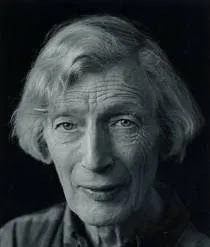 Peter Dickinson
Peter Dickinson
Frequently Asked Questions
Note
If you’re upon a School Assignment
You won’t be wanting this refinement.
Cheer up! There’s stuff about each book
Elsewhere, if you would care to look.
Do you put people you know into your books?
Where was she from, the woman in the tower?
I pushed a doorway on the winding stair,
Stole hesitantly in, and she was there,
An absolute presence, filling the room with power,
Her life a moment in my sleeping brain —
I know her, though we never meet again.
By contrast, those I see from day to day
I know by fits and snatches at the most,
A fluid jigsaw, many pieces lost.
What their real self is, who am I to say?
Though she’s the one with whom I share my life,
Can I be truly said to know my wife?
Have you any advice for a young writer?
Perfection? There is no such stuff.
But good enough is not enough.
What is your favourite book?
What is your favourite kind of food? say I.
If you have one — just one — you’re worth a sigh.
How did you become a writer?
It isn’t something I became —
It is the only life I know.
If you could somehow dam the flow
I’d be a writer just the same.
The condor in your local zoo,
Caged, wing-clipped, fed — what is it for?
It is a creature made to soar,
A dot on the enormous blue.
Where Do You Get Your Ideas?
A money spider hanging in mid air.
Like a retinal fleck it dangles from the lamp
In the blank bathroom, neither here nor there.
You reach to take the thread. Your fingers clamp
On nothing — nothing to feel or see — and yet
The thread is there, because the spider heaves
Beneath your hand. You take and loose it at
The sill, to live what life a spider lives.
A symbol surely, or a metaphor
At least. The groping mind grasps nothing. Still,
Some line of thought must have existed, for
This fleck now dangles here, this page its sill.
This I rather like, I must confess. It's not especially polished, but definitely good-humoured and interesting. I can see that it's not quite what editors were expecting in the age of Lowell and Plath, though. It sounds more like John Masefield, or one of the Georgians.
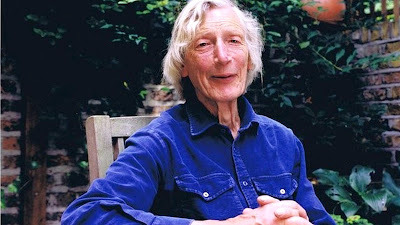 Peter Dickinson
Peter DickinsonIn any case, whatever you think of him as a poet - or, for that matter, a judge of poetry - here's the rest of that bio-note, from the back of one of my old Puffin Books:
Peter Dickinson was born in Livingstone, Zambia, and was educated at Eton and King's College, Cambridge. He spent his early childhood in Northern Rhodesia and South Africa, though his roots are in Gloucestershire. He comes from a political family with a long radical tradition, and, in fact, 1960 was the first Parliament since the Reform Bill in which he had no relation.And here's a more up-to-date account of him, written some forty years later, from Ethan Iverson's obituary, "An Unusual Blend of Poetry and Fantasy":
While doing research at Cambridge, Peter Dickinson was offered a job at Punch, and he became literary editor - he remained there until he decided to live entirely by his writing. He started writing detective novels in his spare time, and it was while he was stuck on one of these that he started to write children's books. His first children's book, The Weathermonger, was published in 1968. It is very unusual in that he dreamed the first chapter in its entirety and wrote it down. Since then he has written several more detective stories and children's books. He is the only crime writer to have been awarded the Golden Dagger of the Crime Writers' Association in two successive years.- "About the Author." Peter Dickinson, The Blue Hawk (1976): 237.
Peter Dickinson was born in Africa, but raised and educated in England. From 1952 to 1969 he was on the editorial staff of the British satirical magazine, Punch, and since then has earned his living writing fiction of various kinds for adults and children.
Amongst many other awards, Peter Dickinson has been nine times short-listed for the prestigious British Carnegie medal for children’s literature and was the first author to win it twice. He has won the Phoenix Award twice for The Seventh Raven and Eva. He won the Boston Globe-Horn Book Award for Chance, Luck and Destiny. Eva and A Bone from A Dry Sea were ALA Notable Books and SLJ Best Books of the Year. The Ropemaker was awarded the Mythopoeic Award for Children's Literature and was a Michael L. Printz Honor Book. Peter's books for children have also been published in many languages throughout the world. His latest collection of short stories, Earth and Air, was published in October and his latest novel, In the Palace of the Khans was published in November.
Peter Dickinson was the first author to win the British Crime-Writers Golden Dagger for two books running: Skin Deep (1968), and A Pride of Heroes (1969). He has written twenty-one crime and mystery novels, which have been published in several languages.
He has been chairman of the UK Society of Authors and is a Fellow of the Royal Society of Literature. He was awarded an O.B.E. for services to literature in 2009.
Website: www.peterdickinson.com
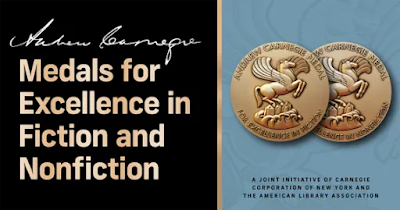 The Carnegie Medal
The Carnegie MedalDickinson was quite a one for prizes, really. They say above that he was "nine times short-listed for the prestigious British Carnegie medal for children’s literature and was the first author to win it twice."
What's more, he won it sequentially: for Tulku (1979) and City of Gold and Other Stories from the Old Testament (1980). He was also highly commended for Eva (1988), and commended for:The Devil's Children (1970)The Dancing Bear (1972)The Blue Hawk (1976)A Bone from a Dry Sea (1992)The other two occasions he was on the short-list do not appear to have resulted in any commendations or awards. Nor are they included in the wikipedia page on the topic.
You'll note from the listings below that I own copies of - and have read - most of his 24 children's novels (not counting picture books, short stories, or edited collections). If I had to note a single dominant characteristic among them, it would be variety of theme and subject matter.
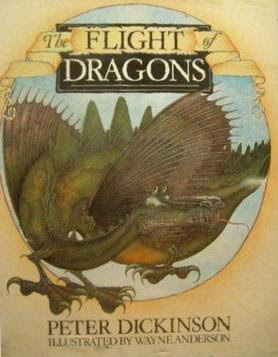 Peter Dickinson: The Flight of Dragons (1979)
Peter Dickinson: The Flight of Dragons (1979)There was never any guessing where Dickinson would go next. He started off with a strong bent towards fantasy, in such books as The Gift (1973), and (of course) the Changes trilogy (1968-70). This could be said to have culminated in his mock-serious biology textbook The Flight of Dragons (1979), which inspired the 1982 animated film of the same name.
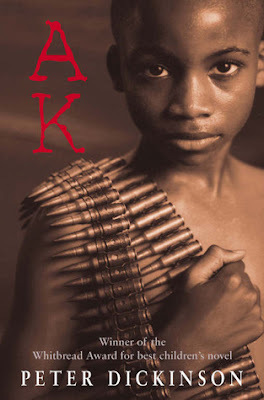 Peter Dickinson: AK (1990)
Peter Dickinson: AK (1990)He was also very interested in politics and activism: Annerton Pit (1977), AK (1990), and Shadow of a Hero (1993) and are all examples of that.
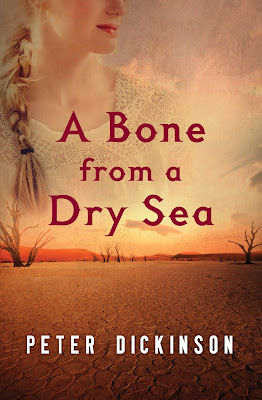 Peter Dickinson: A Bone from a Dry Sea (1990)
Peter Dickinson: A Bone from a Dry Sea (1990)Then there was his fascination with prehistory and early man: A Bone from a Dry Sea (1992) and The Kin (1998) both dealt with that.
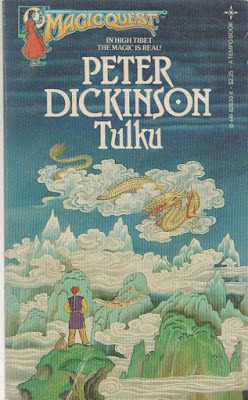 Peter Dickinson: Tulku (1979)
Peter Dickinson: Tulku (1979)What else? Tibetan Buddhism in Tulku (1979); Lewis Carroll-like inventiveness in A Box of Nothing (1985); dystopian SF in Eva (1988); even a kind of epic fantasy in The Ropemaker (2001) and its sequel Angel Isle (2006) ...
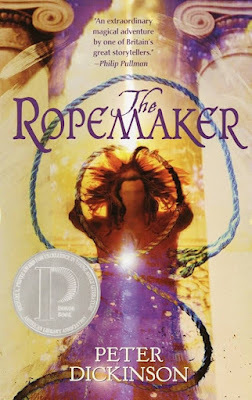 Peter Dickinson: The Ropemaker (2001)
Peter Dickinson: The Ropemaker (2001)Perhaps that was his figure in the carpet, in fact: an impatience with creative straitjacketing and the commercial imperative to repeat the same kind of success over and over again.
What is your favourite kind of food? say I.Could that have accounted for his lukewarm response to Life Studies, way back in 1959? As Elizabeth Bishop said of her friend Robert Lowell's sense of "assurance" (by which I suspect she may actually have meant entitlement):
If you have one — just one — you’re worth a sigh.
I feel I could write in as much detail about my uncle Artie, say, - but what would be the significance? Nothing at all. He became a drunkard, fought with his wife, and spent most of his time fishing ... and was ignorant as sin. It is sad; slightly more interesting than having an uncle practising law in Schenectady maybe, but that's about all. Whereas all you have to do is put down the names. And the fact that it seems significant, illustrative, American etc. gives you, I think, the confidence you display ...EB to RL (December 14, 1957)Dickinson, too, came from a reasonably eminent background: "He comes from a political family with a long radical tradition, and, in fact, 1960 was the first Parliament since the Reform Bill in which he had no relation", as he comments in the first of the bio-notes quoted above. But it's not, I think, something he ever plumed himself upon.
Nevertheless, that underlying radicalism does seem to have come through in his choice of touchy and difficult subjects - unusual in the kinds of children's books I (for one) was reading at the time: eco-terrorism in Annerton Pit, child mercenaries in AK, the perils of AI in Eva. One could call that being ahead of his time, but perhaps it would be more accurate to say that he was of his time in a way the conservative, rural English children's writing of the time simply wasn't.
Does this in itself make him worthy of our attention? Certainly - in terms of literary history. However, I suspect that this particular aspect of his books may fade away over the years, leaving behind only their solid storytelling credentials. The Changes trilogy still seems very relevant to me, more than half a century after its first appearance. I know. I reread it quite recently.
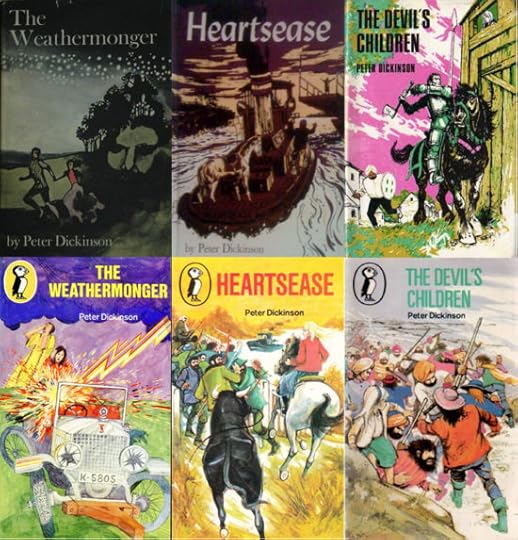 Peter Dickinson: The Weathermonger / Heartease / The Devil's Children (1968-70)
Peter Dickinson: The Weathermonger / Heartease / The Devil's Children (1968-70)I guess what interests me particularly about these three books is the way in which we can see Dickinson evolving and discovering new aspects of himself as a writer as the series continues. The first one, The Weathermonger, is full of fantasy and magic. It draws on an almost T. H. White-like vision of the Arthurian legend to explain the death of the everyday technology we've become so used to that it's hard to imagine life without it.
In the second book, Heartsease, Dickinson begins to flex his novelist's muscles a little more. The characters are far more interesting and complex, and the moral dilemmas more human-sized and realistic. The "change" from a technical to an agrarian society is now so ingrained in this Britain that it's hard for the characters to see any alternative.
The third book, The Devil's Children, is the one where we really see the mature Dickinson arrive. The travelling community of Sikhs twelve-year-old English girl Nicola finds herself adopted by have their own traditions, but they've also been forced to make adjustments to the dominant culture around them. She, in her turn, is forced to accommodate herself to this, much against her will. You could, if you wished to, see it as a little fable about multiculturalism disguised as an adventure story, but that would be simplistic. These are real, living characters, and the world they move through is as terrifyingly vivid as any dystopic landscape before or since.
The books move in backwards chronological order. Nicola in The Devil's Children is at the beginning of a set of cultural changes which will subsequently involve Margaret in Heartsease and which will be brought to an end by Sally in The Weathermonger. Unusually for male writers at the time, adolescent girls appear to have been Dickinson's protagonists of choice at this early point in his career, but (like most generalisations about him) that would not hold steady for long.
 Peter Dickinson: A Box of Nothing (1985)
Peter Dickinson: A Box of Nothing (1985)Not all of his complex and varied oeuvre is as good as this first, intensely gripping trilogy, but there are few really negligible titles there. One I read for the first time last year was the bizarrely inventive A Box of Nothing.
It seems to me every bit as good as Norton Juster's Phantom Tollbooth - possibly even on a par with visionary British writers such as David Lindsay or Mervyn Peake. It's not really characteristic of the rest of his work - but then, what is? Like any true gourmet, he didn't have one favourite food but many.
 Peter Dickinson: Skin Deep / The Glass-sided Ants' Nest (1968)
Peter Dickinson: Skin Deep / The Glass-sided Ants' Nest (1968)•
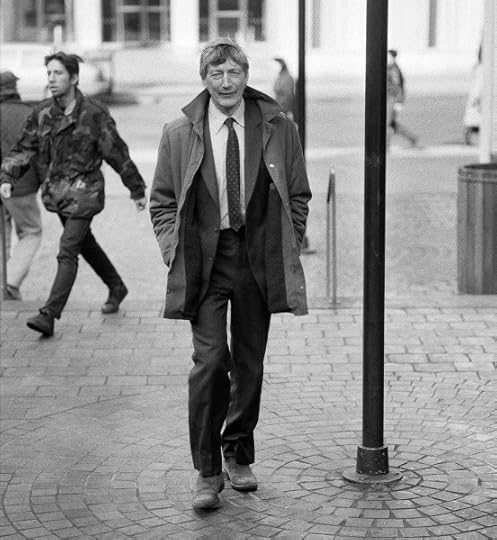 Jack Manning: Peter Dickinson (1986)
Jack Manning: Peter Dickinson (1986)Peter Malcolm de Brissac Dickinson (1927-2015)
Children's Novels:
The Changes TrilogyThe Changes Trilogy: The Devil's Children; Heartsease; The Weathermonger. 1970, 1969 & 1968. A Puffin Book. Harmondsworth: Penguin, 1985. The Weathermonger (1968)The Weathermonger. 1968. A Puffin Book. Harmondsworth: Penguin, 1982. Heartsease (1969)Heartsease. 1969. Illustrated by Robert Hales. A Puffin Book. Harmondsworth: Penguin, 1974. The Devil's Children (1970)The Devil's Children. 1970. Illustrated by Robert Hales. A Puffin Book. Harmondsworth: Penguin, 1982. Emma Tupper's Diary (1970)Emma Tupper's Diary. 1971. A Puffin Book. Harmondsworth: Penguin, 1973. [with Lois Lamplugh] Mandog (1972)The Dancing Bear (1972)The Dancing Bear. Illustrated by David Smee. 1972. A Puffin Book. Harmondsworth: Penguin, 1974. The Gift (1973)The Gift. Illustrated by Gareth Floyd London: Victor Gollancz, 1973. The Blue Hawk (1976)The Blue Hawk. Illustrated by David Smee. 1976. A Puffin Book. Harmondsworth: Penguin, 1977. Annerton Pit (1977)Annerton Pit. 1977. A Puffin Book. Harmondsworth: Penguin, 1987. Tulku (1979)Tulku. 1979. A Puffin Book. Harmondsworth: Penguin, 1988. The Seventh Raven (1981)The Seventh Raven. 1981. A Puffin Plus. Harmondsworth: Penguin, 1983. Healer (1983)Healer. 1983. A Puffin Plus. Harmondsworth: Penguin, 1985. A Box of Nothing (1985)A Box of Nothing. Illustrated by Ian Newsham. 1985. A Magnet Book. London: Methuen, 1987. Eva (1988)Eva. 1988. London: Corgi Freeway, 1992. AK (1990)AK. 1990. London: Corgi Freeway, 1992. A Bone from a Dry Sea (1992)A Bone from a Dry Sea. 1992. London: Corgi Freeway, 1994. Shadow of a Hero (1993)Shadow of a Hero. 1994. London: Corgi Freeway, 1996. Time and the Clock Mice, Etcetera (1993)The Kin (1998)Suth's StoryNoli's StoryKo's StoryMana's Story The Kin. Illustrated by Ian Andrew. 1998. London: Macmillan Children’s Books, 2001. The Ropemaker (2001)The Ropemaker. Illustrated by Ian Andrew. 2001. Macmillan Children’s Books. London: Macmillan Publishers Limited, 2002. The Tears of the Salamander (2003)The Gift Boat [aka 'Inside Granddad'] (2004)Angel Isle [The Ropemaker, 2] (2006)Angel Isle. Illustrated by Ian Andrew. 2006. Macmillan Children’s Books. London: Macmillan Publishers Limited, 2007. In the Palace of the Khans (2012)
Mystery Novels:
James Pibble series:
The Green Gene (1973)The Poison Oracle (1974)The Lively Dead (1975)King and Joker (1976)Walking Dead (1977)A Summer in the Twenties (1981)The Last Houseparty (1982)Hindsight (1983)Death of a Unicorn (1984)Tefuga (1985)Skeleton-in-Waiting (1987)Perfect Gallows (1988)Play Dead (1991)The Yellow Room Conspiracy (1992)Some Deaths Before Dying (1999)
Skin Deep [aka 'The Glass-Sided Ants' Nest'] (1968)A Pride of Heroes [aka 'The Old English Peep-Show'] (1969)The Seals [aka 'The Sinful Stones'] (1970)Sleep and His Brother (1971)The Lizard in the Cup (1972)One Foot in the Grave (1979)
Picture Books:
The Iron Lion. Illustrated by Marc Brown & Pauline Baynes (1973)Hepzibah. Illustrated by Sue Porter (1978)Giant Cold. Illustrated by Alan Cober (1984)Mole Hole (1987)Chuck and Danielle (1996)
Short Stories:
City of Gold and Other Stories from the Old Testament. Illustrated by Michael Foreman (1980)Merlin Dreams (1988)The Lion Tamer's Daughter and Other Stories [aka 'Touch and Go'] (1997)[with Robin McKinley]. Water: Tales of Elemental Spirits (2002)[with Robin McKinley]. Elementals: Water. 2002. London: Corgi Books, 2003. [with Robin McKinley]. Fire: Tales of Elemental Spirits (2009)Earth and Air: Tales of Elemental Creatures (2012)
Non-fiction:
Chance, Luck and Destiny (1975)The Flight of Dragons. Illustrated by Wayne Anderson (1979)
Poetry:
The Weir: Poems by Peter Dickinson (2007)A Closer Look At Me: A Collection of Poems Which Cover Everything from Love & Life to Serial Killers (2019)
Edited:
Hundreds and Hundreds (1983)Hundreds and Hundreds. 1983. A Puffin Original. Harmondsworth: Penguin, 1984.
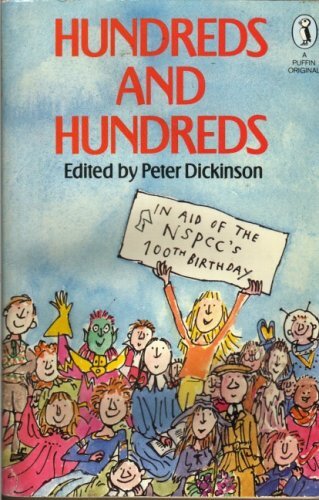 Peter Dickinson, ed.: Hundreds and Hundreds (1984)
Peter Dickinson, ed.: Hundreds and Hundreds (1984)•
Published on April 01, 2025 14:36
March 24, 2025
Favourite Children's Authors: A. A. Milne
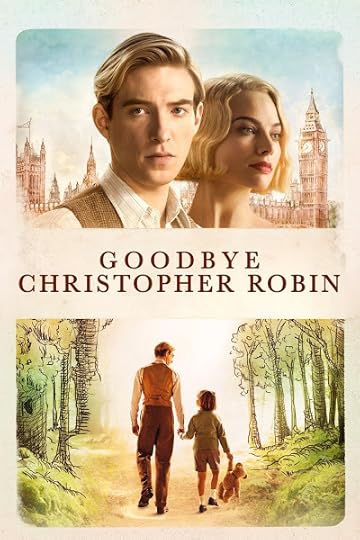 Simon Curtis, dir. Goodbye Christopher Robin (2017)
Simon Curtis, dir. Goodbye Christopher Robin (2017)A. A. Milne was a haunted man.
To all appearances he was the acme of success. After achieving the coveted goal of a regular column in Punch at a surprisingly young age, he realised one day that all that lay ahead of him now was the Sisyphean task of having to come up with something mildly amusing (but not too racy) every week until the end of time.
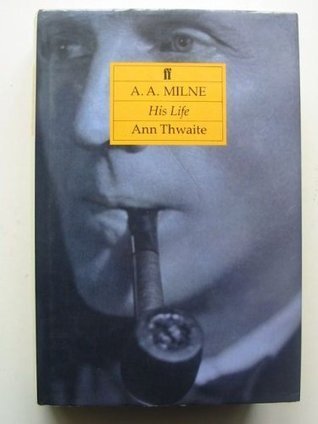 Ann Thwaite: A. A. Milne: His Life (1990)
Ann Thwaite: A. A. Milne: His Life (1990)As Ann Thwaite's excellent biography tells us, the outbreak of the First World War came almost as a relief to him: a chance to escape from this depressing drudgery.
Unfortunately things didn't quite work out like that. Milne was invalided home after a couple of months at the front with the common diagnosis of trench fever, or PUO [Pyrexia Unknown Origin] - in other words, feeling sick for no discernible reason.
The same thing happened to C. S. Lewis - and to J. R. R. Tolkien. Trench fever in both cases. Hence, I suppose, the fact that we have the "Narnia" books and The Lord of the Rings rather than another couple of names on the grandiose Thiepval Memorial to the Missing of the Somme.
Milne, like his younger contemporaries Lewis and Tolkien, never went back, instead managing to wangle himself a safe billet as a signals instructor. But, unlike the other two, he was abnormally sensitive for the rest of his life to any references to his perfectly respectable - albeit a little less than resplendent - war record.
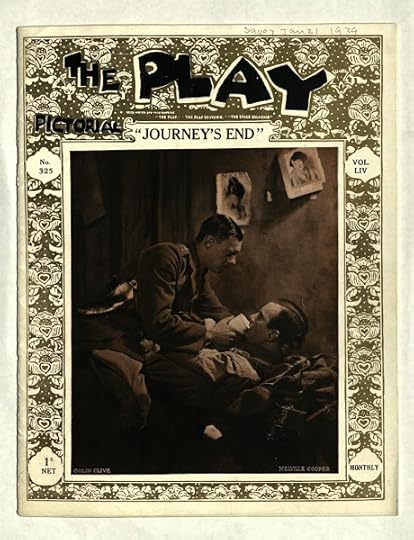 The Play Pictorial: Journey's End (1929)
The Play Pictorial: Journey's End (1929)When Milne watched the first performance of R. C. Sherriff's classic war play Journey's End in 1928, for instance, it was difficult to persuade him that Captain Stanhope's reference to Hibbert as "another little worm trying to wriggle home" was not a direct dig at him:
How long's he been out here? Three months, I suppose. Now he's decided he's done his bit. He's decided to go home and spend the rest of the war in comfortable nerve hospitals - He thinks he's going to wriggle home before the attack ... [quoted in Thwaite, 180]In any case, freed from the inferno of Punch as well as the Western Front, he started a new career as a West End dramatist, and produced a series of pretty successful plays - as well as screenplays for the burgeoning British film industry - throughout the 1920s and 30s.
•
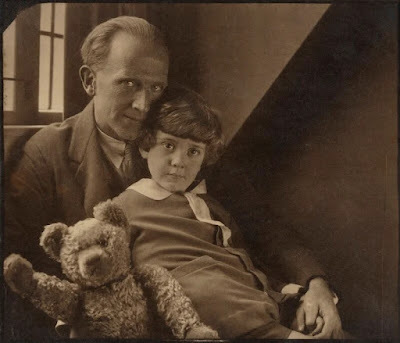 Howard Coster: A. A. Milne, Christopher Robin & Pooh Bear (1928)
Howard Coster: A. A. Milne, Christopher Robin & Pooh Bear (1928)But then came Christopher Robin.
The birth of his young son in 1920 inspired him to start writing a series of part-comic, part-sentimental poems, which seemed to hit a nerve with the reading public. Was it just that they were eager for whimsy after the horrors of the war? That was probably as much his motive for writing them as theirs for reading them - reading all that he could churn out and still demanding more.
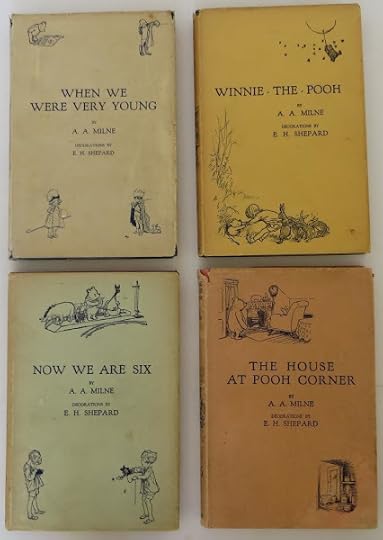 A. A. Milne: The Christopher Robin Books (1924-28)
A. A. Milne: The Christopher Robin Books (1924-28)The rest is history. I certainly couldn't escape endless readings of these poems and stories in my childhood, and neither - I suspect - could most of you. I can still recite a fair number of them from memory. And characters such as Eeyore, Tigger, and Piglet are ingrained in my soul.
•
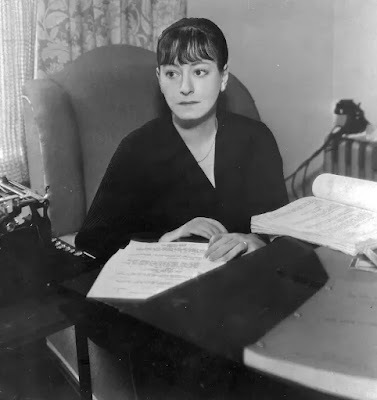 Dorothy Parker (1893-1967)
Dorothy Parker (1893-1967)Even at the time there were a few dissenters - such as the queen of sarcastic put-downs, Dorothy Parker. Here's an extract from her "Constant Reader" column in the New Yorker for October 12, 1928:
“The more itThe above lyric is culled from the fifth page of Mr. A. A. Milne’s new book, The House at Pooh Corner, for, although the work is in prose, there are frequent droppings into more cadenced whimsy. This one is designated as a “Hum,” that pops into the head of Winnie-the-Pooh as he is standing outside Piglet’s house in the snow, jumping up and down to keep warm. It “seemed to him a Good Hum, such as is Hummed Hopefully to Others.” In fact, so Good a Hum did it seem that he and Piglet started right out through the snow to Hum It Hopefully to Eeyore. Oh darn — there I’ve gone and given away the plot. I could bite my tongue out.
SNOWS-tiddely-pom,
The more it
GOES-tiddely-pom
The more it
GOES-tiddely-pom
On
Snowing.
“And nobody
KNOWS-tiddely-pom,
How cold my
TOES-tiddely-pom
How cold my
TOES-tiddely-pom
Are
Growing.”
As they are trotting along against the flakes, Piglet begins to weaken a bit.
“‘Pooh,’ he said at last and a little timidly, because he didn’t want Pooh to think he was Giving In, ‘I was just wondering. How would it be if we went home now and practised your song, and then sang it to Eeyore tomorrow — or — or the next day, when we happen to see him.’
“‘That’s a very good idea, Piglet,’ said Pooh. ‘We’ll practise it now as we go along. But it’s no good going home to practise it, because it’s a special Outdoor Song which Has To Be Sung In The Snow.’
“‘Are you sure?’ asked Piglet anxiously.
“‘Well, you’ll see, Piglet, when you listen. Because this is how it begins. The more it snows, tiddely-pom —’
“‘Tiddely what?’ said Piglet.” (He took, as you might say, the very words out of your correspondent’s mouth.)
“‘Pom,’ said Pooh. ‘I put that in to make it more hummy.’”
And it is that word “hummy,” my darlings, that marks the first place in The House at Pooh Corner at which Tonstant Weader Fwowed up.
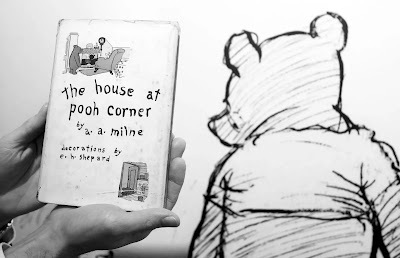 Leon Neal: The House at Pooh Corner (1928)
Leon Neal: The House at Pooh Corner (1928)Har-de-ha-ha. It must have got a bit wearing for Milne at times, though, listening to all the other chaps laughing at him behind his back and mocking the sheer obscene extent of his success with all this baby-talk.
The atmosphere of the times, and the grotesque lengths which the Milnes, husband and wife, were prepared to go to in pimping out their little boy to the public are portrayed in grim detail in both Ann Thwaite's coffee-table book The Brilliant Career of Winnie-the-Pooh (1992) and Simon Curtis's more recent movie Goodbye Christopher Robin (2017).
There are some particularly memorable scenes in the latter of Christopher himself being brutally bullied at school by gleeful oafs who kick him down the stairs as they intone: "Hush! Hush! Whisper who dares! / Christopher Robin is saying his prayers," and other artless verses.
•
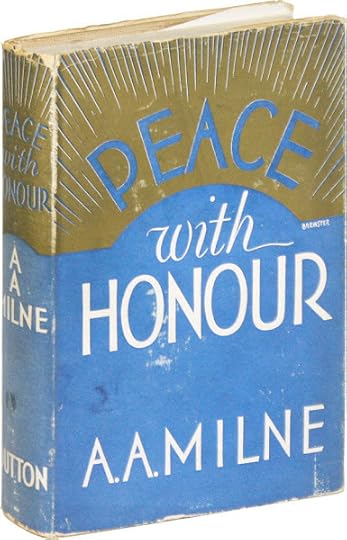 A. A. Milne: Peace with Honour (1934)
A. A. Milne: Peace with Honour (1934)Milne was a vociferous pacifist throughout the 1930s: eagerly backing Chamberlain and the other architects of appeasement, and trying to convince everyone he met of the necessity of disarmament. Mind you, the same was true of many other prominent authors at the time, and - in the abstract - who can dispute the desirability of an end to war?
It appears to have frustrated him somewhat that his friend and fellow humorist P. G. Wodehouse refused to go along with him in this. Wodehouse was famously apolitical, and took up no positions whatever on current affairs, except for indulging in a persistent vein of mockery of dictators such as Mussolini and Hitler in the pages of his Jeeves novels.
In particular, there's a recurring gag about an aspiring British fascist leader called Roderick Spode (presumably based on Oswald Mosley) who leads a group of violent thugs called the "Black Shorts":
"By the way, when you say ‘shorts’ you mean ‘shirts’ of course."
"No. By the time Spode formed his association, there were no shirts left. He and his adherents wear black shorts."
"Footer bags, you mean?"
"Yes."
"How perfectly foul."
"Yes."
"Bare knees?"
"Bare knees."
"Golly!"
"Yes."
- P. G. Wodehouse: The Mating Season (1938)
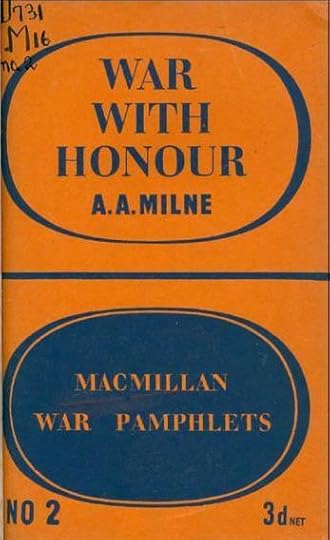 A. A. Milne: War with Honour (1940)
A. A. Milne: War with Honour (1940)When war finally came in September 1939, Milne had to shift gears pretty quickly to re-establish his bona fides with the Great British Reading Public. Four months later, on January 1st, he issued a revised dispatch on his ideological position entitled War with Honour. The essential thing he needed to point out was that he still stood by his earlier pacifist views concerning everyone except Hitler. As one reviewer explained:
... the quickest way back to peace is to defeat Hitler, because the option of "peace" with Hitler in charge would be worse than war.Is it wrong of me to be reminded by Milne's swift volte-face of the political commentator in Monty Python 's "Election Night Special" who points out that the election had gone "largely as I predicted, except that the Silly Party won"?
I think one should point out that in this constituency since the last election a lot of very silly people have moved into new housing estates with the result that a lot of sensible voters have moved further down the road the other side of number, er, 29.It's not that one can't see Milne's point. The advent of Hitler was a game-changer. There's certainly no shame in revising your opinions from time to time according to circumstances - just as there was no real reason to feel sensitive about having been invalided home from the Somme. But the trouble was that he always had to be right. If he ever seemed to be wrong, it must be because someone else had misunderstood him: there could be no other possible explanation.
So, from being one of the nation's foremost pacifists, Milne went to be one of its most fire-breathing patriots. Hence his behaviour during the notorious Wodehouse affair.
I've already written a little about this in another post about P. G. Wodehouse and his biographers. After being captured by the Germans at his home in France in 1940, Wodehouse and his wife were sent to an interment camp in Lille, and thence to further (separate) camps in Belgium and Germany.
It was German policy to release civilian detainees on their sixtieth birthday. For Wodehouse, the date would have come around in October 1941. A few months before that, however, he was transferred to Berlin and asked if he'd like to stay in touch with his "American readers" by broadcasting to them on German radio. Foolishly, he agreed.
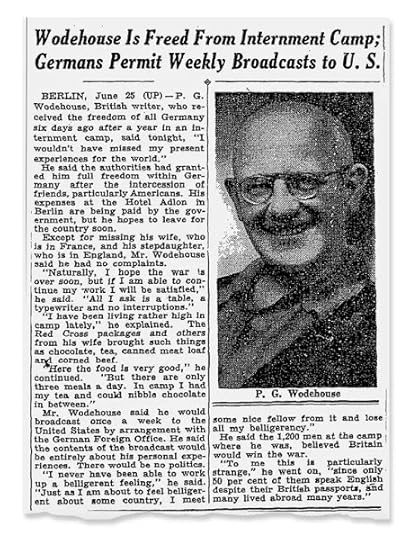 New York Times: "Wodehouse is Freed from Internment Camp ..." (July 2, 1941)
New York Times: "Wodehouse is Freed from Internment Camp ..." (July 2, 1941)It should be emphasised that numerous other prison camp inmates detained by the Germans had already done the same thing. None of them ever received the opprobrium Wodehouse did - or were even criticised for it. Nor was America at war with Germany at the time.
The complete innocence of what he broadcast - humorous details of camp life - did not affect the fact that he was immediately decried as a traitor in both the UK and America. Ever since there's been a powerful lobby who continue to lump him in with antisemites and collaborators such as Louis-Ferdinand Céline, Lord Haw-Haw, or Ezra Pound.In her excellent article on the subject, "Bertie Wooster v. Christopher Robin" (2021), Josie Holford points out that Wodehouse's broadcasts were denounced in Parliament before anyone - including Duff Cooper, the Minister for Information - had even had a chance to hear them.
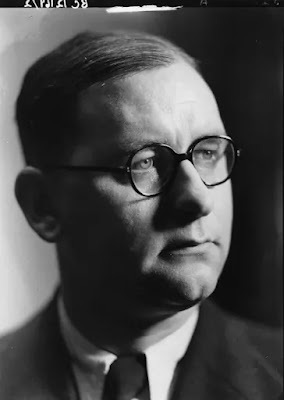 National Portrait Gallery: Sir William Neil Connor ('Cassandra') (1909-1967)
National Portrait Gallery: Sir William Neil Connor ('Cassandra') (1909-1967)Duff Cooper's speech, ghost-written by demagogue William Connor, better known for his "Cassandra" column in the Daily Mirror, included statements such as "It is a sombre story of honour pawned to the Nazis for the price of a warm bed," and "Wodehouse was throwing a cocktail party when the storm-troopers clumped in on his shallow life." It concluded as follows:
And Dr. Goebbels taking him into a high mountain, showed unto him all the Kingdoms of the world, and said unto him: "All this power I will give thee if thou wilt worship the Führer."Among the very first to jump on the bandwagon of denunciation was A. A. Milne, who unleashed "a vicious and highly personal tirade" against his former friend in the Daily Telegraph on July 3rd 1941:
Pelham Wodehouse fell on his knees.
The news that P. G. Wodehouse had been released from his concentration camp delighted his friends; the news that he had settled down comfortably at the Adlon [Hotel in Berlin] made them anxious; the news that he was to give weekly broadcasts (but not about politics, because he had 'never taken any interest in politics') left them in no doubt as to what had happened to him. He had escaped again.As Josie Holford points out:
I remember that he told me once he wished he had a son and he he added characteristically (and quite sincerely) 'but he would have to be born at the age of 15, whe he was just getting into his house eleven." You see that advantage of that. Bringing up a son throws considerable responsibility on a man, but by the time the boy is 15 one has shifted the responsibility onto the housemaster, without forfeiting any reflected glory that may be about.
This, I felt, had always been Wodehouse's attitude to life. He has encouraged in himself a natural lack of interest in 'politics' - 'politics' being all the things grown-ups talk about at dinner when one is hiding under the table. Things, for instance, like the last war, which found and kept him in America; and postwar taxes, which chased him backwards and forwards across the Atlantic until he finally found sanctuary in France.
An ill-chosen sanctuary it must have seemed last June, when politics came surging across the Somme.
Irresponsibility in what the papers call 'a licensed humorist' can be carried too far; naïveté can be carried too far. Wodehouse has been given a good deal of licence in the past, but I fancy that now his licence will be withdrawn.
Before this happens I beg him to surrender it of his own free will; to realise that though a genius may grant himself an enviable position above the battle where civic and social responsibilities are concerned, there are times when a man has to come down into the arena, pledge himself to the cause in which he believes, and suffer for it.
The anecdote about parenting that Milne alleges Wodehouse said to him in person is actually a quote from a novel Wodehouse wrote in 1908 ... It’s a family supper scene in Clapham, and Mike Jackson is seated next to the householder’s insufferable son:Mike got on with small girls reasonably well. He preferred them at a distance, but, if cornered by them, could put up a fairly good show. Small boys, however, filled him with a sort of frozen horror. It was his view that a boy should not be exhibited publicly until he reached an age when he might be in the running for some sort of colours at a public school.- Psmith in the City, Chapter 17
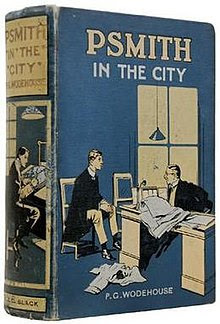 P. G. Wodehouse: Psmith in the City (1910)
P. G. Wodehouse: Psmith in the City (1910)Actually, that's just the first of many inaccuracies and half-truths in Milne's article. Once you start to look at it in detail, the fact-checking needed begins to look like those long screeds appended to each new speech by Donald Trump.
First, all that elaborate mockery of Wodehouse's "lack of interest in 'politics'":
'politics' being all the things grown-ups talk about at dinner when one is hiding under the table.This is surely a bit rich coming from one of the principal proponents of both pacifism and appeasement? One can't help feeling that some of those weighty dinner-time discussions of 'politics" with the likes of Lord Halifax and Neville Chamberlain might actually have been spent more profitably playing bridge instead.
Then there's that little sneer about "the last war, which found and kept him in America." Yes. And? Is that any less "honourable" than being invalided home to pursue one's career as a playwright in London? People who live in glass houses ...
Weirdest of all, though, is that statement of Milne's about how "Bringing up a son throws considerable responsibility on a man." This doesn't quite square with Christopher Robin's own statement: "It seemed to me almost that my father had got to where he was by climbing upon my infant shoulders, that he had filched from me my good name and had left me with the empty fame of being his son." Ouch!
As it happens, Wodehouse was (by all accounts) an excellent father. He adopted Leonora, his wife Ethel's daughter from a previous marriage, and it seems from their letters that:
Wodehouse adored being a stepfather ... Family, for Wodehouse, was forged through love, not genetics. Leonora – or "Snorky" – as she soon became, was far more precious to Wodehouse than any of his biological relations.She eventually became his "confidential secretary and adviser", and her death from a botched operation in 1944 was a tragedy neither of the Wodehouses ever recovered from. It far outweighed, for them, all the fallout from the witchhunt surrounding them at the end of the war.
 Compton Mackenzie (1883-1972)
Compton Mackenzie (1883-1972)Whisky Galore author Compton Mackenzie hit the nail on the nail when he wrote, in response to Milne's article:
There is a curious infelicity in Mr A. A. Milne’s sneer at Mr P. G. Wodehouse for shirking the responsibility of fatherhood. Such a rebuke would have been more decorously from a father who has abstained from the profitable exhibitionism in which the creator of Christopher Robin has indulged. I gather that Mr. Wodehouse is in disgrace for telling the American public over the radio about his comfortable existence at the Hotel Adlon. Not being convinced that I am morally entitled to throw stones at a fellow author, and retaining as I do an old-fashioned prejudice against condemning a man unheard, I do not propose to inflict my opinion upon the public, beyond affirming that at the moment I feel more disgusted by Mr. Milne’s morality than by Mr. Wodehouse’s irresponsibility.Needless to say, the Daily Telegraph saw no need to print his letter.
At risk of belabouring the point, the notion that Wodehouse had somehow been irresponsible in remaining at his house in France is also misguided. Le Touquet is a seaside resort down the coast from Calais. Calling it an "ill-chosen sanctuary" obscures the fact that none of the military pundits in 1940 (with the possible exception of the Führer himself) foresaw the incredibly rapid collapse of the French army in the face of the German blitzkrieg.
Nor was there any way to predict that the fall of France would leave so little time for foreign nationals to evacuate.
•
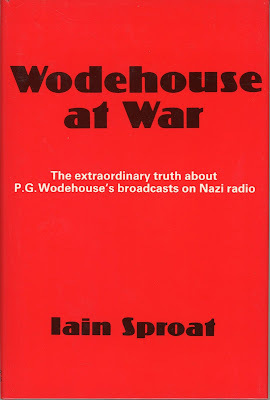 Iain Sproat: Wodehouse at War (1981)
Iain Sproat: Wodehouse at War (1981)It's hard, in retrospect, for us to comprehend fully the hysterical atmosphere of wartime Britain. This was, after all, before America's (enforced) entry into the conflict, and something of a siege mentality was probably inevitable.
Milne never apologised for his misleading, venomous words - but then, neither did the British government. Although they investigated Wodehouse thoroughly in 1945, and concluded that any attempt at prosecution would be futile, they never informed him of the fact directly, instead continuing to imply that he risked arrest for treason if he ever set foot on British soil again.
Even when he was knighted by Queen Elizabeth II in 1975, the ceremony had to be performed in absentia.
Milne's is a sad story, really. It must have been a bitter pill to swallow when Wodehouse's post-war popularity went from strength to strength, whereas nothing he himself did or wrote afterwards could alter his status as the whimsical creator of Winnie-the-Pooh. There are still some fans of his early detective stories to be found here and there, but everything else has sunk into oblivion.
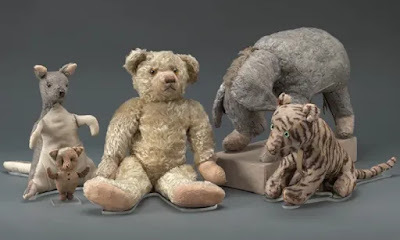 Pete Riesett & Steven Crossot: The real Winnie-the-Pooh and friends (2016)
Pete Riesett & Steven Crossot: The real Winnie-the-Pooh and friends (2016)His son never really forgave him, but he did agree to visit him a couple of times before his death. Christopher Milne became an author in his own right, as you can see from the bibliography at the foot of this post. He refused to accept any of the royalties from the children's books about him, and allowed the toys that inspired them to be donated to the New York Public Library.
•
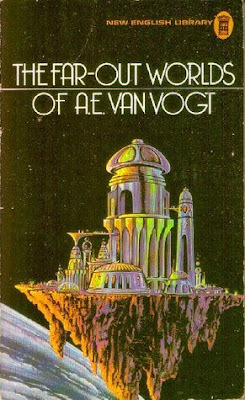 The Far-Out Worlds of A. E. Van Vogt (1968)
The Far-Out Worlds of A. E. Van Vogt (1968)A. A. Milne seems, in fact, to have been a pretty clear case of Canadian SF writer A. E. Van Vogt's "Right Man": the man who must always be right, and cannot acknowledge error under any circumstances:
It is obvious that the Right Man syndrome is a compensatory mechanism for profound self-doubt, and that its essence lies in convincing others of something he feels to be untrueMilne was not a violent man - except on paper - but he was certainly unable to accept responsibility for mistakes. And he did have a strange compulsion to denounce in others the failings he must have known were so evident in his own life: estrangement from his son, questionable war service, bewildering reversals of opinion - in short, all the irresponsibility associated with "what the papers call 'a licensed humorist'".
Wodehouse was both more honest and more direct in his own verdict:
We were supposed to be quite good friends, but, you know, in a sort of way I think he was a pretty jealous chap. I think he was probably jealous of all other writers. But I loved his stuff.
 Ann Thwaite: The Brilliant Career of Winnie-the-Pooh (1992)
Ann Thwaite: The Brilliant Career of Winnie-the-Pooh (1992)•
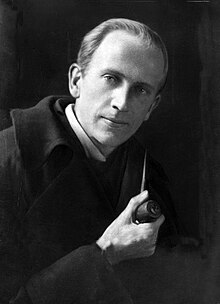 A. A. Milne (1922)
A. A. Milne (1922)Alan Alexander Milne
(1882-1956)
Novels:
Lovers in London (1905)Once on a Time (1917)Once On a Time. 1917. Illustrations by Susan Perl. London: Edmund Ward (Publishers) Limited, 1962. Mr. Pim [novelisation of his 1919 play "Mr. Pim Passes By"] (1921)The Red House Mystery (1922)Two People (1931)Four Days' Wonder (1933)Chloe Marr (1946)
Non-fiction:
Peace With Honour (1934)It's Too Late Now: The Autobiography of a Writer (1939)War With Honour (1940)War Aims Unlimited (1941)Year In, Year Out. Illustrated by E. H. Shepard (1952)
Collections of Articles:
The Day's Play (1910)Included in: Those Were the Days. 1910, 1912, 1914, 1921. London: Methuen & Co. Ltd., 1929. The Holiday Round (1912)Included in: Those Were the Days. 1910, 1912, 1914, 1921. London: Methuen & Co. Ltd., 1929. Once a Week (1914)Included in: Those Were the Days. 1910, 1912, 1914, 1921. London: Methuen & Co. Ltd., 1929. Not That It Matters (1919)If I May (1920)The Sunny Side (1921)Included in: Those Were the Days. 1910, 1912, 1914, 1921. London: Methuen & Co. Ltd., 1929. By Way of Introduction (1929)Those Were the Days (1929)Those Were the Days: Being "The Day's Play," "The Holiday Round," "Once a Week," and "The Sunny Side" in One Volume. 1910, 1912, 1914, 1921. London: Methuen & Co. Ltd., 1929.
Collections of Stories:
A Gallery of Children (1925)A Gallery of Children. 1925. Illustrated by Henriette Willebeek Le Mair. Frederick Warne. London: The Penguin Group, 2000. Winnie-the-Pooh. Illustrated by E. H. Shepard (1926)Included in: The World of Pooh: Containing Winnie-the-Pooh and The House at Pooh Corner. Illustrated by E. H. Shepard. 1926, 1928, 1958. London: Methuen Children’s Books, 1956.Included in: Winnie the Pooh: The Complete Collection of Stories and Poems. Illustrated by E. H. Shepard. 1924, 1926, 1927, 1928. London: Methuen Children’s Books, 1994. The House at Pooh Corner. Illustrated by E. H. Shepard (1928)Included in: The World of Pooh: Containing Winnie-the-Pooh and The House at Pooh Corner. Illustrated by E. H. Shepard. 1926, 1928, 1958. London: Methuen Children’s Books, 1956.Included in: Winnie the Pooh: The Complete Collection of Stories and Poems. Illustrated by E. H. Shepard. 1924, 1926, 1927, 1928. London: Methuen Children’s Books, 1994. The Secret and other Stories (1929)The Birthday Party (1948)A Table Near the Band (1950)The Complete Short Stories (2023)
Poetry:
When We Were Very Young. Illustrated by E. H. Shepard (1924)Included in: The World of Christopher Robin: Containing When We Were Very Young and Now We Are Six. Illustrated by E. H. Shepard. 1924, 1927, 1959. London: Methuen Children’s Books, 1972.Included in: Winnie the Pooh: The Complete Collection of Stories and Poems. Illustrated by E. H. Shepard. 1924, 1926, 1927, 1928. London: Methuen Children’s Books, 1994. For the Luncheon Interval (1925)Now We Are Six. Illustrated by E. H. Shepard (1927)Included in: The World of Christopher Robin: Containing When We Were Very Young and Now We Are Six. Illustrated by E. H. Shepard. 1924, 1927, 1959. London: Methuen Children’s Books, 1972.Included in: Winnie the Pooh: The Complete Collection of Stories and Poems. Illustrated by E. H. Shepard. 1924, 1926, 1927, 1928. London: Methuen Children’s Books, 1994. Behind the Lines (1940)The Norman Church (1948)
Plays & screenplays:
Wurzel-Flummery (1917)Belinda (1918)The Boy Comes Home (1918)Make-Believe (1918)The Camberley Triangle (1919)Mr. Pim Passes By (1919)The Red Feathers (1920)The Romantic Age (1920)The Stepmother (1920)The Truth About Blayds (1920)The Bump (Minerva Films, 1920)Twice Two (Minerva Films, 1920)Five Pound Reward (Minerva Films, 1920)Bookworms (Minerva Films, 1920)The Great Broxopp (1921)The Dover Road (1921)The Lucky One (1922)The Artist: A Duologue (1923)Success [aka "Give Me Yesterday"] (1923)Ariadne (1924)The Man in the Bowler Hat: A Terribly Exciting Affair (1924)To Have the Honour (1924)Portrait of a Gentleman in Slippers (1926)Miss Marlow at Play (1927)Winnie the Pooh (1928)The Fourth Wall, or The Perfect Alibi [adapted for the film Birds of Prey (1930)] (1928)The Ivory Door (1929)Toad of Toad Hall [adaptation of The Wind in the Willows] (1929)Michael and Mary (1930)Other People's Lives (aka "They Don't Mean Any Harm") (1933)Miss Elizabeth Bennet (1936)Sarah Simple (1937)Gentleman Unknown (1938)The General Takes Off His Helmet [from The Queen's Book of the Red Cross] (1939)The Ugly Duckling (1941)Before the Flood (1951)
Secondary:
Shepard, Ernest H. Drawn from Memory. 1957. Harmondsworth: Penguin, 1975.Crews, Frederick C. The Pooh Perplex: A Freshman Casebook. 1963. A Dutton Paperback. New York: E. P. Dutton & Co., 1965.Thwaite, Ann. A. A. Milne: His Life. 1990. London: Faber, 1991.Thwaite, Ann. The Brilliant Career of Winnie-the-Pooh: The Story of A. A. Milne and His Writing for Children. Methuen London. London: Reed Consumer Books Limited, 1992.Thwaite, Ann. Goodbye Christopher Robin: A. A. Milne and the Making of Winnie-the-Pooh. Preface by Frank Cottrell-Boyce. Pan Books. London: Pan Macmillan, 2017.
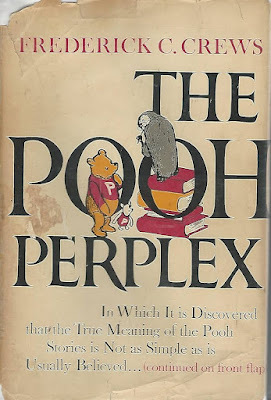 Frederick R. Crews: The Pooh Perplex (1963)
Frederick R. Crews: The Pooh Perplex (1963)•
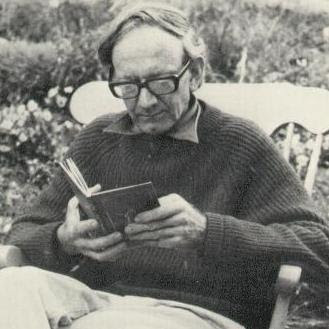 Christopher Milne
Christopher MilneChristopher Robin Milne
(1920-1996)
The Enchanted Places (1974)The Enchanted Places. 1974. Harmondsworth: Penguin, 1979.The Enchanted Places. 1974. London: Methuen, 1983. The Path Through the Trees (1979)The Path Through the Trees. 1979. London: Methuen, 1983. The Hollow on the Hill (1982)The Hollow on the Hill: The Search for a Personal Philosophy. Photographs by James Ravilious. 1982. London: Methuen, 1983. The Windfall (1985)The Windfall: A Fable. Engravings by Kenneth Lindley. London: Methuen, 1985. The Open Garden (1988)
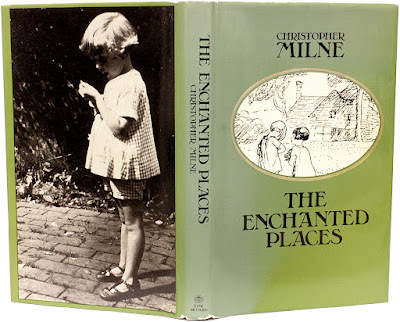 Christopher Milne: The Enchanted Places (1974)
Christopher Milne: The Enchanted Places (1974)•
Published on March 24, 2025 14:05
March 17, 2025
Favourite Children's Authors: E. Nesbit
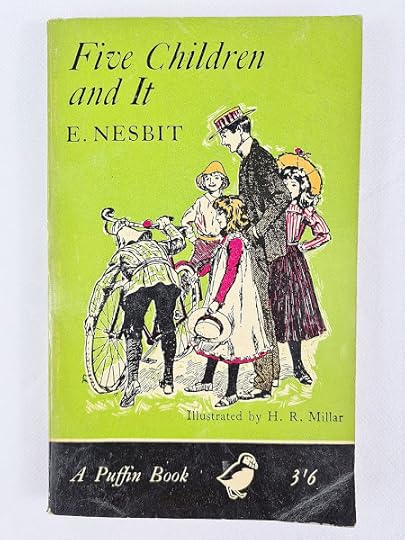 E. Nesbit: Five Children and It (1902)
E. Nesbit: Five Children and It (1902)I couldn't quite bring myself to head this post with any of the images associated with the two dreadful films lately imposed upon E. Nesbit's classic novel:
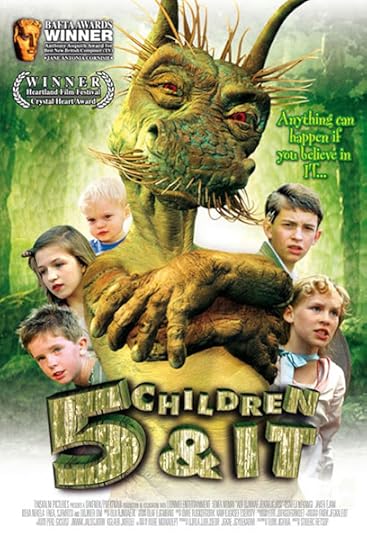 John Stephenson, dir.: Five Children and It (2004)
John Stephenson, dir.: Five Children and It (2004)Both are completely without charm, magic, or mystery - the things the original novel abounds in. Eddie Izzard's star-turn as grumpy sand fairy the Psammead in John Stephenson's 2004 effort certainly stresses the creature's obnoxious personality. It lacks any other discernible appeal.
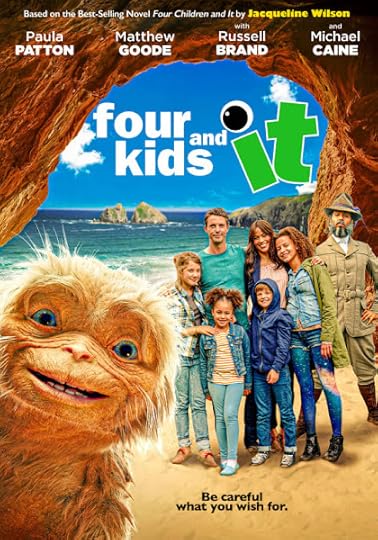 Andy De Emmony, dir.: Four Kids and It (2020)
Andy De Emmony, dir.: Four Kids and It (2020)Bad though Stephenson's film is, though, I would nevertheless have to award the prize for worst Nesbit-adjacent feature film to Andy De Emmony's Four Kids and It. Russell Brand is the token comedic presence in this one, and his prancing antics make Eddie Izzard look like Laurence Olivier.
It is, admittedly, based on a more recent novel "inspired by" E. Nesbit's original - which means that a particularly mawkish and inappropriate love story has been shovelled into the story, complete with couple-surprised-in-the-middle-of-a-shag antics which would make a crow blush.
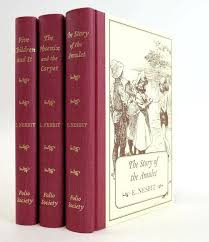 E. Nesbit: The Adventures of the Five Children (2009)
E. Nesbit: The Adventures of the Five Children (2009)Does that sound a bit harsh? Both films were, after all, presumably intended for an audience somewhat younger than myself, and it's my own silly fault if I chose to watch them to the end.
I suppose, in my defence, it was because the "Five Children" books - Five Children and It, The Phoenix and the Carpet, and The Story of the Amulet - were one of my earliest reading experiences, and the simple elegance of H. R. Millar's illustrations added greatly to their appeal for me at the time.
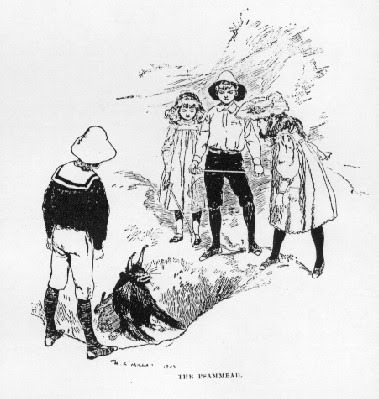 H. R. Millar: The Children discover the Psammead (1902)
H. R. Millar: The Children discover the Psammead (1902)They look a bit old-fashioned now. But then, so are the books. They constitute a little time-capsule of Edwardian attitudes for readers today, but their storytelling backbone remains strong.
•
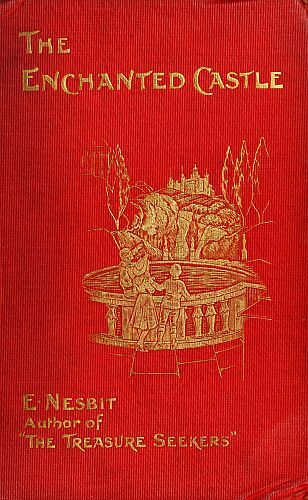 E. Nesbit: The Enchanted Castle (2007)
E. Nesbit: The Enchanted Castle (2007)À propos of Millar's illustrations, a few years after first reading The Enchanted Castle, one of my particular favourites among Nesbit's books, in my parents' old hardback edition, I bought myself a handsome-looking copy from a second-hand shop.
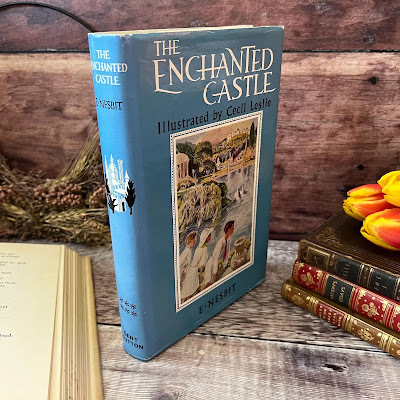 E. Nesbit: The Enchanted Castle (1964)
E. Nesbit: The Enchanted Castle (1964)I was dismayed to discover that it had a new set of illustrations, which almost entirely negated (for me, at least) the powerful atmosphere created by this most magical - and sinister - of her novels.
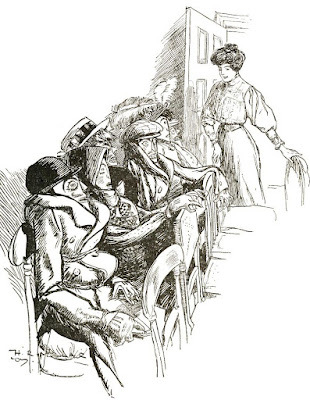 H. R. Millar: The audience of Ugly-Wugglies
H. R. Millar: The audience of Ugly-WuggliesIn the crucial scene where the set of hastily assembled dummies created by the children as an audience for their new play comes to life, for instance, the full horror of the situation turned out to have been greatly assisted for me by Millar's illustrations.
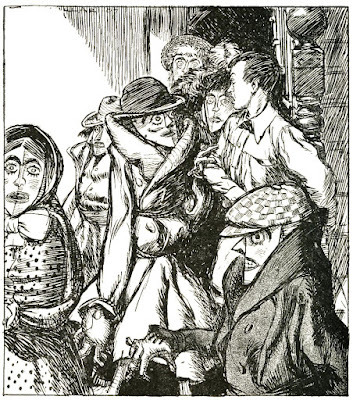 H. R. Millar: The Ugly-Wugglies come to life
H. R. Millar: The Ugly-Wugglies come to lifeBut the hall was crowded with live things, strange things — all horribly short as broomsticks and umbrellas are short. A limp hand gesticulated. A pointed white face with red cheeks looked up at him, and wide red lips said something, he could not tell what. The voice reminded him of the old beggar down by the bridge who had no roof to his mouth. These creatures had no roofs to their mouths, of course — they had no ——The macabre nature of this encounter makes much better sense to me now than I know a bit more about Edith Bland (née Nesbit)'s earlier life, and - in particular - the large number of books she'd already written before achieving a hit with the Bastable series around the turn of the century.
"Aa oo ré o me me oo a oo ho el?" said the voice again. And it had said it four times before Gerald could collect himself sufficiently to understand that this horror — alive, and most likely quite uncontrollable — was saying, with a dreadful calm, polite persistence: —
"Can you recommend me to a good hotel?"
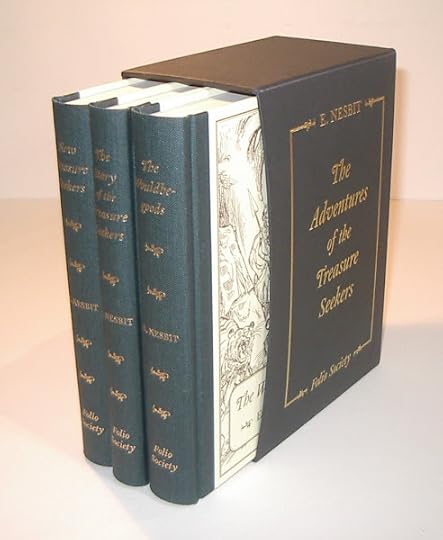 E. Nesbit: The Bastable Family (1899-1904)
E. Nesbit: The Bastable Family (1899-1904)•
Nesbit had tried pretty much every other type of writing before turning to children's fiction. She started off with a set of problem novels written under the pseudonym of "Fabian Bland", before turning successively to detective stories, ghost stories, journalism, and even poetry.
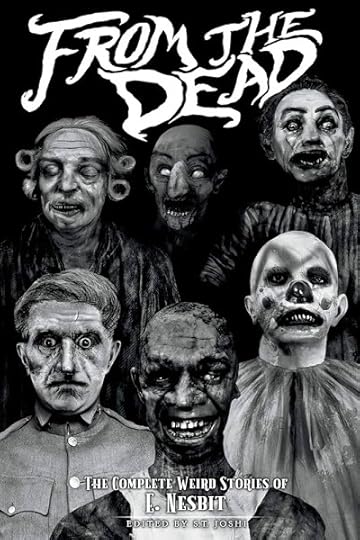 S. T. Joshi, ed.: From the Dead: The Complete Weird Stories of E. Nesbit (2018)
S. T. Joshi, ed.: From the Dead: The Complete Weird Stories of E. Nesbit (2018)Now her horror stories are a hit. You'll note in the bibliography below at least five recent selections from her corpus of such tales. At the time, though, they didn't succeed in distinguishing her from all the other late Victorian / early Edwardian writers obsessed with the occult.
It does help one understand, though, why her children's stories are so dominated by weird talismans, magical creatures, and mysterious concealed spaces. Even C. S. Lewis admitted that it was The Story of the Amulet (1906) which first awoke him to what he referred to - quoting Shakespeare - as "the dark backward and abysm of time."
•
 The Fabian Society
The Fabian SocietyAnother essential thing to remember is her dedication to social reform and left-wing politics. Nesbit and her husband Hubert Bland were among the founding members of the Fabian Society in 1884, and jointly edited its journal Today.
Initially they both used the pseudonym "Fabian Bland", but it soon became apparent that his serial adulteries and lack of business sense meant that - for the foreseeable future - she would have to remain the family breadwinner, and pay all the bills with her own writing. She therefore shifted to calling herself "E. Nesbit".
Despite her life-long radicalism, she was not a strong proponent of women's rights:
She opposed the cause of women’s suffrage — mainly, she claimed, because women could swing Tory, thus harming the Socialist cause.That might be another reason she chose to follow in the tradition of Currer, Ellis, & Acton Bell - and, for that matter, George Eliot - by constructing a neutral name to help sell her work to gender-biassed editors.
I used to wonder if she'd chosen "E. Nesbit" rather than "Edith Nesbit" as her nom-de-plume to distinguish herself from Evelyn Nesbit, the turn-of-the-century American fashion model who (allegedly) provoked the murder of architect Stanford White by her husband, Harry Thaw. The resulting 1906 "Trial of the Century" made the former's gilded age morals and lifestyle notorious.
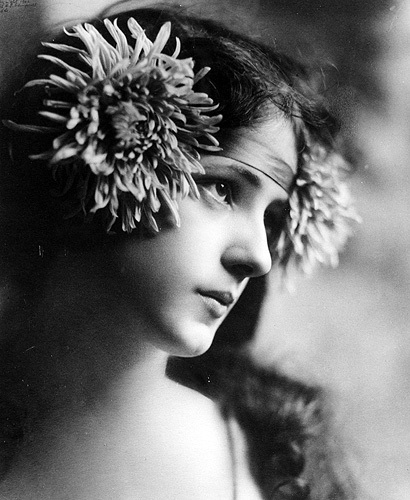 Rudolf Eickemeyer Jr.: Evelyn Nesbit (1903)
Rudolf Eickemeyer Jr.: Evelyn Nesbit (1903)The dates, however, don't really fit. Strangely enough, Evelyn Nesbit does have her own unusual connection with children's fiction. The picture above helped Canadian author L. M. Montgomery conceive the character of Anne Shirley, the heroine of her 1908 novel Anne of Green Gables . It reminded her - apparently - of "youthful idealism and spirituality."
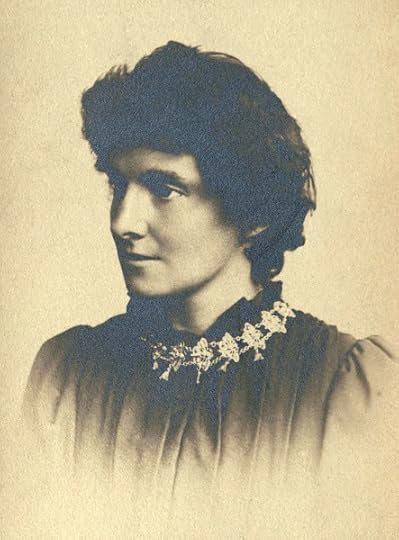 Edith Nesbit (1892)
Edith Nesbit (1892)Edith Nesbit herself was a very different kettle of fish. She was a professional writer, used to turning her hand to any kind of work which was likely to sell. But there was more to it than that. Something clicked into place when she turned to children's fiction.
She was no fin-de-siècle Geoffrey Trease. She didn't proselytise directly in her writing, but it was hard for her to avoid displaying a social conscience in at least some of her stories. The Railway Children, obviously, but also in lesser-known books such as Harding's Luck.
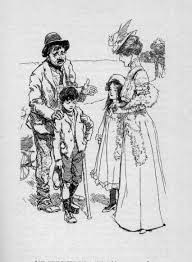 E. Nesbit: Harding's Luck (1909)
E. Nesbit: Harding's Luck (1909)•
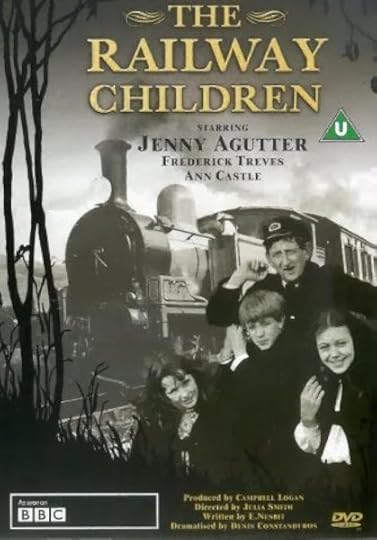 Julia Smith, dir.: The Railway Children. Adapted by Denis Constanduros (1968)
Julia Smith, dir.: The Railway Children. Adapted by Denis Constanduros (1968)The Railway Children is probably her most celebrated, and undoubtedly her most frequently dramatised book. My own memory goes back to the TV series above, which I found rather grim and terrifying at the time. Just reading the episode summaries recalls some of the anguish it caused me:
When their father is taken away on Christmas Day by two gentlemen from the Foreign Office and fails to return in the next few weeks, his wife announces that she and the children ... will be moving to Yorkshire "to play at being poor for a while."It was all so realistic - not at all like the other children's TV we watched. I can still replay in my mind the horror of the scene where one of the children is caught stealing coal by the previously well-disposed Station Master.
It's been adapted for the screen a number of times since then - feature films in 1970 and 2000, as well as a sequel, The Railway Children Return (2022) set, this time, in 1944.
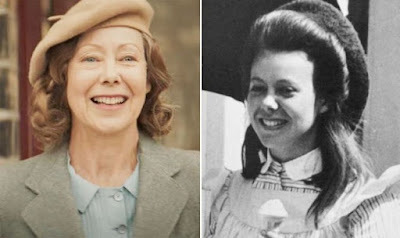 Jenny Agutter (1970 / 2022)
Jenny Agutter (1970 / 2022)The common thread in all these versions is veteran actor Jenny Agutter, who's shifted from being one of the children, to being their mother, and (finally) their wartime caregiver. She must be getting pretty sick of the whole business by now! (I must confess to having had a considerable crush on her back in the 1970s after seeing her in such films as Nic Roeg's Walkabout and - especially - the Sci-fi classic Logan's Run ).
The Railway Children is not really representative of the general run of Nesbit's children's books, though it does include some of her favourite themes. Being hard-up and desperately needing to find money somewhere is a common predicament in her books (the Bastable series, for instance). The fairly realistic way in which sibling solidarity - and rivalry - is portrayed is a strong point in most of her ensemble casts. And, finally, there's the deus ex machina of a rich uncle or deceased relative providing vitally needed funds, or lodgings, at the last minute.
Are they really of interest to modern children? Who can say? The ones who've been reading Dickens and Jane Austen from an early age might find them a bit too predictable, but the comedy of manners embedded in such fantasies as The Phoenix and the Carpet is surely evergreen.
I'm glad I read them at an age when the hints they gave of abandoned temples in the Middle East, or Ancient Egyptian amulets, were all that was needed to spark my imagination. It's true that Nesbit invented a good deal of the magical lore she included. The word "Psammead", for instance:
appears to be a coinage by Nesbit from the Greek ψάμμος "sand" after the pattern of dryad, naiad and oread, implicitly signifying "sand-nymph".I can't help suspecting that the same is true of the House of Arden 's "Mouldiwarp" (an archaic term for mole).
Yes, they're fantasy, they're escapism, but that's not all they are. She didn't set out to preach directly in her books, but they do remind you to be kind to strangers - as well as your brothers and sisters; to be respectful to your elders and betters (within reason, at any rate); and never to neglect the chance to learn something new, or to take part in an unexpected adventure.
They may seem snobby to a modern reader, but it's as well to remember that Nesbit herself was never blind to the presence of the servant with the scrubbing brush at the back of the scene, as in the H. R. Millar illustration below:
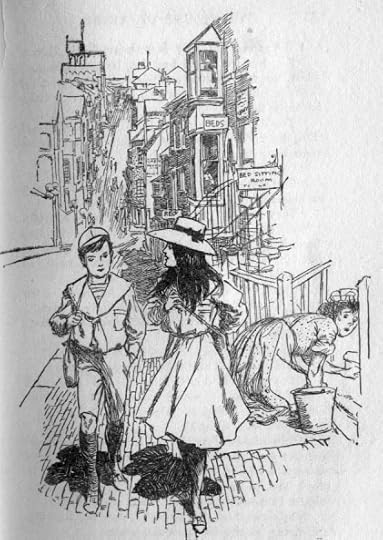 E. Nesbit: The House of Arden (1908)
E. Nesbit: The House of Arden (1908)•
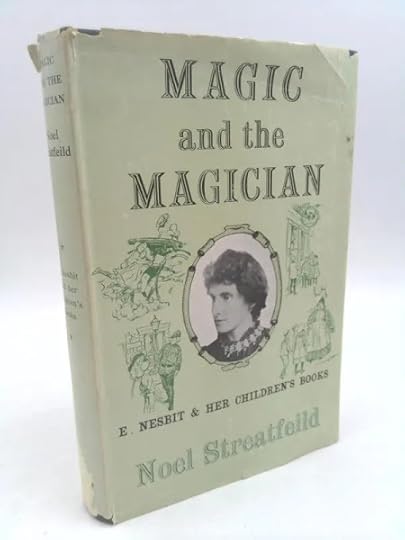 Noel Streatfeild: Magic and the Magician: E. Nesbit and Her Children's Books (1958)
Noel Streatfeild: Magic and the Magician: E. Nesbit and Her Children's Books (1958)Nesbit's biographical fortunes have been a bit up and down in the century since her death. Doris Langley Moore's pioneering account E. Nesbit (1933 / revised 1966) was followed 25 years later by a considerably blander study of her simply as a children's author by "Ballet Shoes" writer Noel Streatfeild. The blurb for her book claims:
Here is a delightful tribute to a great writer. It will be enjoyed by anyone acquainted with the E. Nesbit stories, as well as by Noel Streatfeild's many admirers.She followed it up with a reprint of some early reminiscences by Nesbit:
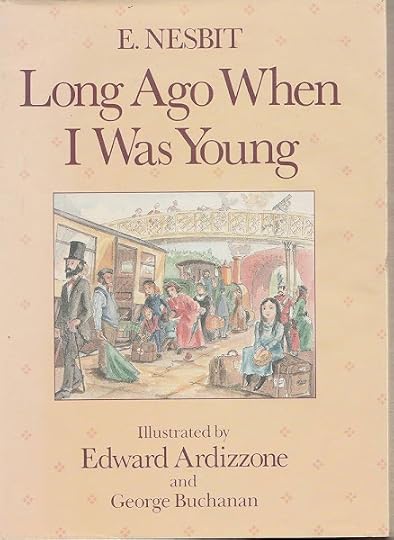 E. Nesbit: Long Ago When I Was Young (1966)
E. Nesbit: Long Ago When I Was Young (1966)Together these two books had the - possibly unintentional - effect of muting her reputation as a radical thinker for a number of years. It wasn't until Julia Briggs' A Woman of Passion came out in the mid-1980s that the full complexity of her family life, not to mention her extensive involvement in politics, were revealed.
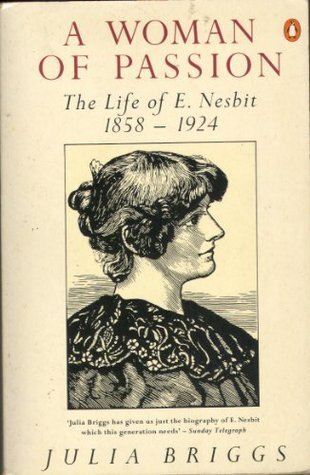 Julia Briggs: A Woman of Passion (1987)
Julia Briggs: A Woman of Passion (1987)It's been claimed, possibly correctly, that "as a biography ... it relies heavily on the earlier incarnation written by Doris Langley Moore, whose biography of Nesbit ... used interviews with surviving family members, letters, newspapers and the other usual stories to write Edith's story." Briggs, however, "delves a little further."
I for one found it fascinating when I first read it. Nothing in Streatfeild's bland chronicle had prepared me for the fascination of the story recounted here.
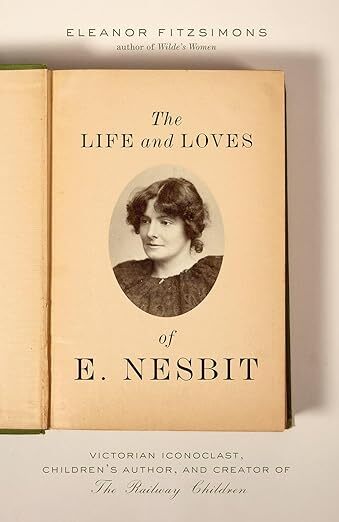 Eleanor Fitzsimons: The Life and Loves of E. Nesbit (2019)
Eleanor Fitzsimons: The Life and Loves of E. Nesbit (2019)Since then two more biographies have appeared: Elisabeth Galvin's The Extraordinary Life of E. Nesbit: Author of Five Children and It and The Railway Children (2018), and Eleanor Fitzsimons' The Life and Loves of E. Nesbit: Victorian Iconoclast, Children's Author, and Creator of the Railway Children (2019).
Which one is better? Well, it depends on what you're looking for, I suppose. Fitzsimons' book is twice as long, far more detailed, and was chosen as A Sunday Times Best Book of the Year. It's even been described as the "first major biography of the trailblazing, controversial children's author."
On the other hand, it's had a mixed response from Amazon's own homegrown reviewers. Dave Ansell, for instance, comments:
I wonder why Fitzsimons troubled to write her biography as it offers little that hasn’t been said before. Briggs’s biography is over 100 pages longer. Fitzsimons gives chapter notes but no bibliography. Briggs has a bibliography. There are few photographs – Briggs gives many more as well as illustrations. At the end, Fitzsimons gives a brief account of how Nesbit has influenced other writers, including J K Rowling. In another recent biography, The Extraordinary Life of E. Nesbit by Elizabeth Galvin (2018), there is more about Nesbit’s influence, including a short chapter on Harry Potter, and information about TV and cinema films. This biography also includes a useful family tree, 50 of the Best Works by E Nesbit, and a clever ‘Edith’s Guide to Life’.
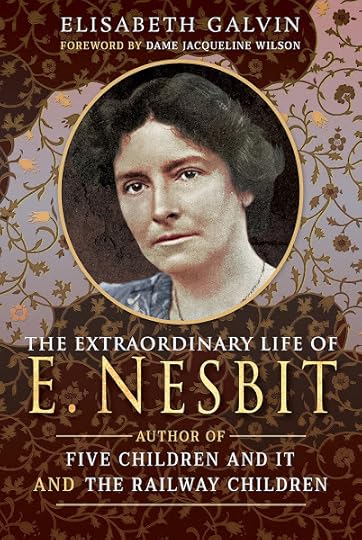 Elisabeth Galvin: The Extraordinary Life of E. Nesbit (2018)
Elisabeth Galvin: The Extraordinary Life of E. Nesbit (2018)On the other hand, if we turn to the comments about Galvin's own book, we find a comparably lukewarm response:
It is generally well written but there are a number of awkward usages and redundancies that would have been better edited out. I think the editor must have been asleep. Still a good read for E. Nesbit fans.On the whole, then, having read these unvarnished responses, it sounds as if it might be just as well to stick with Briggs' lively account - or, for that matter, to hunt out a copy of the revised, 1966 version of Doris Langley Moore's biography.
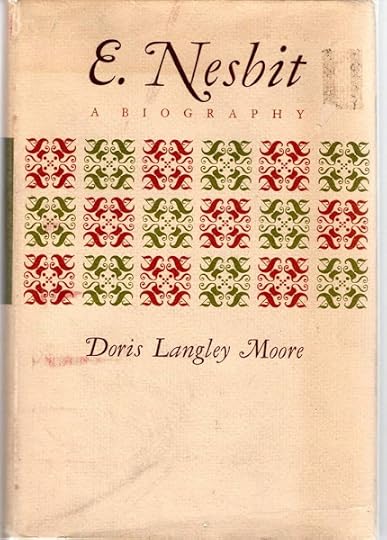 Doris Langley Moore: E. Nesbit: A Biography (1933 / 1966)
Doris Langley Moore: E. Nesbit: A Biography (1933 / 1966)•
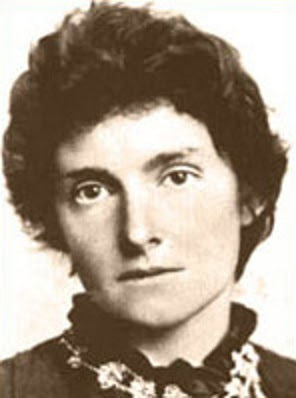
E. Nesbit (c.1890)
Edith Bland [née Nesbit]
(1858-1924)
Books for Adults
Novels:
[As Fabian Bland] The Prophet's Mantle (1885)[As Fabian Bland] Something Wrong (1886)[As Fabian Bland] The Marden Mystery (1896)The Secret of Kyriels (1899)The Red House (1902)The Incomplete Amorist (1906)Salome and the Head [aka The House with No Address] (1909)Daphne in Fitzroy Street (1909)Dormant [aka Rose Royal] (1911)The Incredible Honeymoon (1916)The Lark (1922)
Collections:
Grim Tales (1893)Something Wrong (1893)"Hurst of Hurstcote" (1893)The Ebony Frame (1893)[with Oswald Barron] The Butler in Bohemia (1894)In Homespun: Stories in English Dialect (1896)Thirteen Ways Home (1901)The Literary Sense (1903)Man and Maid (1906)"The Third Drug" (Strand Magazine, 1908)These Little Ones (1909)Fear (1910)To the Adventurous (1923)E. Nesbit's Tales of Terror. Ed. Hugh Lamb (1983)In the Dark: Tales of Terror. Ed. Hugh Lamb. 1983. Rev. ed (1988)In the Dark. Ed. Hugh Lamb. 1983. Rev. ed, 1988. Expanded ed. (2000) In the Dark (2000)Man-Size in Marble and Others: The Best Horror and Ghost Stories of E. Nesbit. Annotated & Illustrated by M. Grant Kellermeyer (2015)Horror Stories. Introduction by Naomi Alderman (2017)From the Dead: The Complete Weird Stories of E. Nesbit. Ed. S. T. Joshi (2018)The House of Silence: Ghost Stories 1887–1920 Introduction by Melissa Edmundson (2024)
Children's Books
The Bastable Series:
The Psammead series:
The Story of the Treasure Seekers (1899)The Story of the Treasure-Seekers. Illustrated by Cecil Leslie. 1899. Puffin Books. Harmondsworth: Penguin, 1960. The Wouldbegoods (1901)The Wouldbegoods. Illustrated by Cecil Leslie. 1901. Puffin Books. Harmondsworth: Penguin, 1961. The New Treasure Seekers (1904)The New Treasure-Seekers. 1904. Puffin Books. Harmondsworth: Penguin, 1982. The Adventures of the Treasure Seekers. Illustrated by C. Walter Hodges. 1947. London: The Folio Society, 1993. The Story of the Treasure Seekers: Being the Adventures of the Bastable Children in Search of a Fortune (1899)The Wouldbegoods: Being the Further Adventures of the Treasure Seekers (1901)The New Treasure Seekers (1904)Oswald Bastable and Others (1905)
The House of Arden series:
Five Children and It (1902)Five Children and It. Illustrated by H. R. Millar. 1902. London: Ernest Benn Limited, 1970. The Phoenix and the Carpet (1904)The Phoenix and the Carpet. Illustrated by H. R. Millar. 1904. London: Ernest Benn Limited, 1973. The Story of the Amulet (1906)The Story of the Amulet. Illustrated by H. R. Millar. 1906. London: Ernest Benn Limited, 1969.
The House of Arden (1908)The House of Arden. Illustrated by Edward Ardizzone & George Buchanan. 1908. Puffin Classics. Harmondsworth: Penguin, 1987. Harding's Luck (1909)Harding’s Luck. Illustrated by H. R. Millar. 1909. London: Ernest Benn Limited / New York: Coward-McCann, Inc., 1961.
Novels:
The Railway Children (1906)The Railway Children. 1906. Illustrated by Lynton Lamb. London: Ernest Benn Limited, 1972. The Enchanted Castle (1907)The Enchanted Castle. Illustrated by H. R. Millar. 1907. London: Ernest Benn Limited, 1960. The Magic City (1910)The Magic City. Illustrated by H. R. Millar. 1910. Facsimile Classic Series. London: Macmillan and Co., Limited, 1980. The Wonderful Garden (1911)The Wonderful Garden. Illustrated by H. R. Millar. 1911. London: Ernest Benn Limited / New York: Coward-McCann, Inc., 1959. Wet Magic (1913)Wet Magic. Illustrated by H. R. Millar. 1913. London: Ernest Benn Limited / New York: Coward-McCann, Inc., 1958. Five of Us — and Madeline (1925)Five of Us - and Madeline. Illustrated by Nora S. Unwin. 1925. London: Ernest Benn Limited, 1931.
Collections:
Miss Mischief (1894)Tick Tock, Tales of the Clock (1895)Pussy Tales (1895)Doggy Tales (1895)The Children's Shakespeare (1897) [aka Beautiful Stories from Shakespeare (1907)]Royal Children of English History (1897)[with others] Tales Told in the Twilight (1897)The Book of Dogs (1898)Pussy and Doggy Tales (1899)The Book of Dragons (1901)The Complete Book of Dragons. Illustrated by Erik Blegvad. 1901. London: Hamish Hamilton Children's Books Ltd., 1972. Nine Unlikely Tales (1901)Nine Unlikely Tales for Children. Illustrated by H. R. Millar. 1901. London: Ernest Benn Limited, 1929. The Revolt of the Toys (1902)The Rainbow Queen and Other Stories (1903)Playtime Stories (1903)The Story of Five Rebellious Dolls (1904)[with Rosamund E. Nesbit Bland] Cat Tales (1904)Pug Peter, King of Mouseland (1905)The Old Nursery Stories (1908)The Magic World (1912)The Magic World. Illustrated by H. R. Millar & Spencer Pryse. 1912. Facsimile Classic Series. London: Macmillan and Co., Limited, 1980. Fairy Stories. Ed. Naomi Lewis (1977)Fairy Stories. Ed. Naomi Lewis. Illustrated by Brian Robb. London & Tonbridge: Ernest Benn Limited, 1977.
Non-fiction:
Wings and the Child, or The Building of Magic Cities (1913)Long Ago When I Was Young (1896-97 / 1966)Long Ago When I Was Young. Illustrated by Edward Ardizzone & George Buchanan. 1966. Introduction by Noel Streatfield. London: Beehive Books, 1987.
Poetry:
Slave Song (1899)
Secondary:
Moore, Doris Langley. E. Nesbit: A Biography (1933)Streatfeild, Noel. Magic and the Magician: E. Nesbit and her Children’s Books (1958)Briggs, Julia. A Woman of Passion (1987)Briggs, Julia. A Woman of Passion: The Life of E. Nesbit, 1858-1924. 1987. Harmondsworth: Penguin, 1989. Galvin, Elisabeth. The Extraordinary Life of E. Nesbit (2018)Fitzsimons, Eleanor. The Life and Loves of E. Nesbit (2019)
•
Published on March 17, 2025 13:17
March 8, 2025
Aspects of Emily
 Hailee Steinfeld as Emily Dickinson
Hailee Steinfeld as Emily Dickinson[Alena Smith: Dickinson (2019-21)]
How dreary – to be – Somebody!
How public – like a Frog –
To tell one’s name – the livelong June –
To an admiring Bog!
- Emily Dickinson: "I'm Nobody! Who are you?"
Who is [Emily]? What is she, / That all our swains commend her?
Recently I was asked to review a new collection by a veteran local poet for Poetry Aotearoa Yearbook . In my piece I made a passing reference to the line:
'Hope' is the thing with feathersI was a bit surprised to be asked to attribute the quote.
To me it seemed about on a par with being asked to identify the author of "To be or not to be", or "This was their finest hour". These are phrases which have entered the language, and we all know where they come from.
Or do we? Maybe I'm wrong. It's not that I doubt that there are plenty of people out there who haven't heard of Emily Dickinson - but how many of them read reviews in poetry journals? It would be a bit like postulating a physics student who'd never heard of Einstein.
 Emily Dickinson (1830-1886)
Emily Dickinson (1830-1886)The image above is the only authenticated photograph of the poet, taken when she'd just turned 16. Versions of it have been colourised, redrawn, artificially aged, and generally monkeyed around with over the past century or so since the posthumous discovery of her work in 1890.
The first selection from the almost 1800 poems she left behind in manuscript, edited by the Dickinsons' neighbour Mabel Loomis Todd and well-known man of letters Thomas Wentworth Higginson, was such a success that it was quickly followed by two sequels, published in 1891 and 1896, together with a 2-volume collection of the poet's letters (1894).
 Emily Dickinson: Poems (1890)
Emily Dickinson: Poems (1890)After the death of her brother Austin Dickinson (1829-1895), however, the smouldering feud between his wife Susan (1830-1913), and his lover Mabel Loomis Todd (1856-1932) came to a head. The family took back the manuscripts Emily's sister Lavinia had loaned to Todd, and no more new work appeared for another twenty years.
Far from subsiding, the feud reached new levels of intensity after 1914, via a series of competing editions of poems and letters issued by Martha Dickinson Bianchi, Austin and Susan's daughter (and thus Emily's niece), and Millicent Todd Bingham, Mabel Loomis Todd's daughter, which appeared piecemeal over the next thirty years.
 Millicent Todd Bingham: Ancestor’s Brocades (1945)
Millicent Todd Bingham: Ancestor’s Brocades (1945)A vivid - if somewhat one-sided - account of all this palaver is given in Bingham's book Ancestor’s Brocades: The Literary Début of Emily Dickinson (1945). A more honest and accurate version is included in Lyndall Gordon's recent biography Lives Like Loaded Guns: Emily Dickinson and Her Family's Feuds (2010).
 Lyndall Gordon: Lives Like Loaded Guns (2010)
Lyndall Gordon: Lives Like Loaded Guns (2010)•
But that's not really what interests me here. I'm less keen to talk about Dickinson herself than about "Dickinson", the 30-part TV sitcom /dramedy Bronwyn and I have just been watching on Apple TV.
I was a bit doubtful about the concept at first, but the show's weird mixture of contemporary language and attitudes with "period" clothes and mores does seem to work somehow. And one has to admit that there's a certain brutal accuracy to their skewering of such luminaries as Louisa May Alcott, Henry Thoreau, Walt Whitman, et al.
Also, the fact that the show strays further and further into the most abject melodrama the longer it goes on provides a perfect disguise for the fact that most of it is true. It's hard to exaggerate just how weird the Dickinsons' lifestyle really was (by all accounts, at any rate): the two separate-but-conjoined houses, the long periods when none of them were speaking to each other, the drunkenness and adultery.
 Alena Smith: Dickinson (2019-21)
Alena Smith: Dickinson (2019-21)Nor, it appears, was Emily herself, the Belle of Amherst, quite the shrinking violet of legend. In her 2010 Guardian article "A Bomb in Her Bosom", her biographer Lyndall Gordon calls her "a woman who was fun: a lover who joked; a mystic who mocked heaven."
In Gordon's case, though, she has a ready-made villain to hand for all these misunderstandings: Dickinson's previous "definitive" biographer Richard B. Sewall, who was so much under the thumb of Mabel Loomis Todd that he:
passed on the trove of Todd untruths: that Emily Dickinson had favoured Mabel; that the poet's withdrawal into seclusion had been the result of a family split preceding Mabel's appearance ... The biographer even outdoes the Todds when he suggests that Dickinson's "failure" to publish was a result of a family quarrel.While one should certainly take any biographer's account of the deficiencies of their predecessors with a grain of salt, there may be something to Gordon's contention that Emily and her family were much more dysfunctional than popular legend would allow:
Helpful Mr Higginson, a supporter of women, who thought he was corresponding with an apologetic, self-effacing spinster, was puzzled to find himself "drained" of "nerve-power" after his first visit to [Emily] in 1870. He was unable to describe the creature he found beyond a few surface facts: she had smooth bands of red hair and no good features; she had been deferential and exquisitely clean in her white piqué dress and blue crocheted shawl; and after an initial hesitation, she had proved surprisingly articulate. She had said a lot of strange things, from which Higginson deduced an "abnormal" life.But was she a lesbian? Dickinson's Dickinson certainly is, and the object of her affections is, unequivocally, her brother's wife Sue.
That's not the universal verdict, though:
In a novel of 2006 a spiteful Sue ends up "hating" Emily. In a novel of 2007 Sue becomes a death-dealing Lucrezia Borgia. She awaits her victims in the hall of her house, a vamp in décolleté black velvet waving her fan. Can evil go further? It can. Sue "could make mincemeat pie of the Dickinson sisters and eat it for Christmas dinner".I wish that Lyndall Gordon had thought to supply us with the titles of these two novels. My own quest has (so far) turned up only the following fictional outings:
•
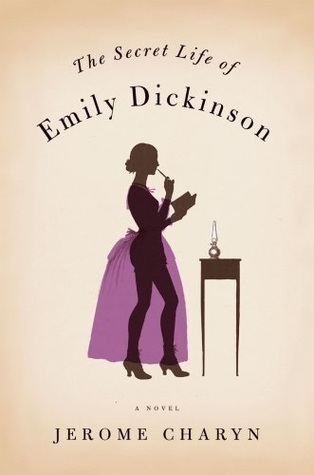 Jerome Charyn: The Secret Life of Emily Dickinson (2010)
Jerome Charyn: The Secret Life of Emily Dickinson (2010)What if the old maid of Amherst wasn’t an old maid at all? Her older brother, Austin, spoke of Emily as his “wild sister.” ... The poet dons a hundred veils, alternately playing wounded lover, penitent, and female devil. We meet the significant characters of her life, including her tempestuous sister-in-law, Susan Gilbert; her brooding father, Edward; and the Reverend Charles Wadsworth, who may have inspired some of her greatest letters and poems.That somewhat risqué cover illustration seems particularly appropriate for this "astonishing novel that removes Emily Dickinson’s own mysterious mask and reveals the passions and heartbreak of America’s greatest poet."
•
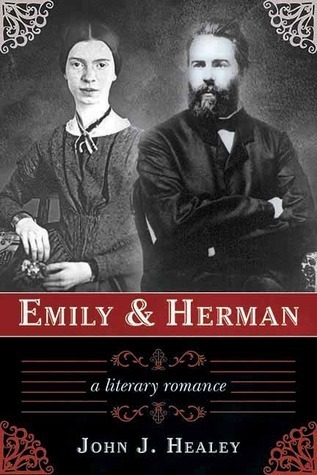 John J. Healey: Emily & Herman: A Literary Romance (2013)
John J. Healey: Emily & Herman: A Literary Romance (2013)On a whim the two distinguished authors [Hawthorne and Melville] invite the Dickinson siblings to accompany them on a trip to Boston and New York. In Manhattan they meet journalist Walt Whitman and William Johnson, a runaway slave, and it is there, despite their efforts to control it, that Emily and Herman fall in love.Herman Melville seems to be just about the only distinguished mid-century American writer not included in Dickinson, so it's nice that Healey had already supplied the omission.
•
 Nuala O'Connor: Miss Emily (2015)
Nuala O'Connor: Miss Emily (2015)The Dickinson household is saved from domestic chaos with the arrival of Ada Concannon, a ‘neat little Irish person, fresh off the boat’. In Amherst in the 1800’s the homesick young maid finds in the gifted middle child, Emily, a fellow feeling. Born on the same day they share a sense of mischief and a love of baking, but Emily’s passion for words is her true vocation. When Ada’s reputation is violated Emily finds herself defending her maid against her own family and those she loves.The Emily in Dickinson seems a bit baking-challenged, so it's nice to know that this one has at least a few domestic talents. Nuala O'Connor is a skilful and inspiring writer whom Bronwyn and I met at a short story conference in Shanghai, so I won't be saying anything critical of this particular addition to the canon of Emily-Dickinson-fiction (or EDF for short).
•
You do begin to wonder at this stage, though, just what aspects of the famed recluse remain to be exploited. I mean, what's next, Emily Dickinson, super-sleuth?
Since you mention it:


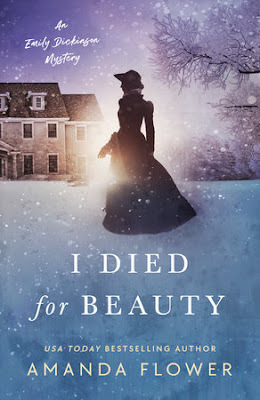 Amanda Flower: The Emily Dickinson Mystery Series (2022-25)
Amanda Flower: The Emily Dickinson Mystery Series (2022-25)A new historical series starring Willa Noble, maid to iconic American poet Emily Dickinson, who solves mysteries with her new employer.In her online interview with Amanda Flower, the author of the 'Emily Dickinson series,' Elise Cooper jumps straight in with the question on everyone's lips:
No, she never did. And her poems are indeed "imagery and vague with multiple meanings."
How did you get the idea to use Emily Dickinson?
Amanda Flower: Each book’s title will be the first line from one of her famous poems ... I pay tribute to the poems, but do not follow it verbatim [sic.] Her poems are imagery and vague with multiple meanings. She never wrote clearly.
Flower goes on to explain that Emily makes the perfect candidate for a detective because "Her poems are mysterious."
The real characters beside Emily were the maid Margaret O’ Brian. I added a maid assistant, Willa, to tell the story in the same manner that Sherlock Holmes had Watson. I also chose that period of her life, in 1855, where Emily and her sister came to Washington because her father was a member of the House of Representatives. This time was about six years before she went into hiding for the rest of her life as a recluse ...And Emily herself?
She likes to investigate, a good judge of character, ignores societal class, and is loyal. She is also bold, caring, curious, confident, and blunt. She was probably her father’s favorite because he gave her special treatment. She enjoyed wandering around and instead of ... telling her to stop [he] bought her a dog for protection. The dog is real and so his name Carlo, a character in Jane Eyre. He lived for seventeen years, which is unusual for a pure bred Newfoundland. One of the theories is that Emily became a recluse after he passed away.Joking apart, Flowers' series does sound like a lot of fun. And there's something rather pleasing in her conclusion that "The family gave her room to be different, a genius aspect."
•
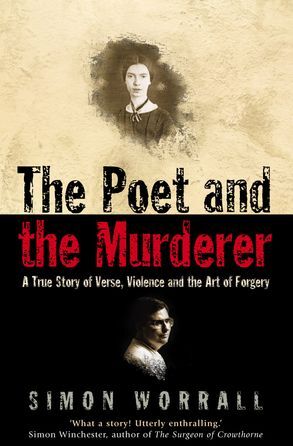 Simon Worrall: The Poet and the Murderer (2003)
Simon Worrall: The Poet and the Murderer (2003)When the author sets out on the trail of a forged Emily Dickinson poem that has mysteriously turned up for sale at Sotheby’s in New York, he finds himself drawn into a world of deception and murder. The trail eventually leads, via the casinos of Las Vegas, to Utah and the darkly compelling world of Mark Hofmann, ex-Mormon and one of the most daring literary forgers and remorseless murderers of all time. As the author uncovers Hofmann’s brilliant, and disturbing, career, he takes the reader into the secret world of the Mormon Church and its controversial founder, Joseph Smith.At times one does feel just the slightest tendency towards exploitation in certain authors' attempts to shoehorn Emily Dickinson into their books willy-nilly. Mark Hofmann's decision to forge an Emily Dickinson poem doesn't, in itself, sound like the most significant aspect of the true crime mystery described above.
Deeply researched but with the narrative pace of a novel, Worrall’s investigation into the life and crimes of this charismatic genius is a real-life detective story you simply won’t be able to put down. On the way, you will meet an eclectic cast of characters: undercover detectives and rare book dealers, Dickinson scholars, forensic document experts, hypnotists, gun-dealers and Mormons ...
Still, to each their own. It certainly confirms the poet's ability to rouse strong passions: then and now.
•
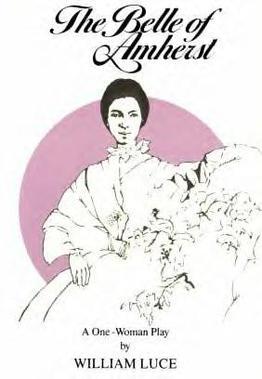 William Luce: The Belle of Amherst (1976)
William Luce: The Belle of Amherst (1976)Perhaps Emily's strongest mark to date has been on the world of film and theatre, however. Julie Harris's award-winning performance in the long-running play "The Belle of Amherst" (broadcast live on TV at the time as a one-woman show), has been criticised by Lyndall Gordon for "perpetuating Mabel Loomis Todd's chaste, hermit-like image of Dickinson, as opposed to the lively, witty, provocative, and sometimes erotic Dickinson present in her work and known to those who knew her more personally."
At the time, though, at least one reviewer praised it as follows:
With her technical ability and her emotional range, Miss Harris can convey profound inner turmoil at the same time that she displays irrepressible gaiety of spirit.
 Julie Harris as Emily Dickinson (1976)
Julie Harris as Emily Dickinson (1976)•
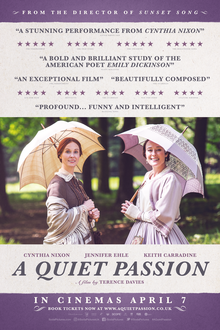 Terence Davies, dir.: A Quiet Passion (2016)
Terence Davies, dir.: A Quiet Passion (2016)Diagnosed with “Bright’s Disease”, a kidney ailment, [Emily's] health deteriorates with back pain and grand mal seizures. Mother, long suffering from melancholy, has a stroke and passes. Subsequently, Emily discovers that Austin is having an affair with a singer (Mrs Todd). Emily, with sympathy for Susan, confronts her brother’s hypocrisy. With the strains growing, Vinnie points out to Emily her own intolerance of the failings of others.And so it goes, I guess: Life's a bitch and then you die.
Emily’s condition deteriorates. She dies with Austin and Vinnie visibly distraught by her side.- Wikipedia: A Quiet Passion
Students of Terence Davies' work have been conditioned to respond favourably to his subtle, understated style. On the other hand, it can be criticised - especially latterly, in this and his follow-up film Benediction, about war poet Siegfried Sassoon - for, at times, taking understatement to the point of indirection.
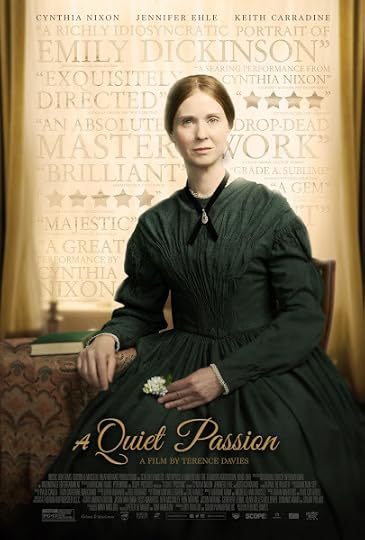 Cynthia Nixon as Emily Dickinson (2016)
Cynthia Nixon as Emily Dickinson (2016)•
 Madeleine Olnek, dir.: Wild Nights with Emily (2018)
Madeleine Olnek, dir.: Wild Nights with Emily (2018)The same could not be said of Madeleine Olnek's Wild Nights with Emily. As its star, Molly Shannon, explained to Entertainment Weekly :
"She’s perceived as a spinster recluse who wanted her poems burned upon death ... That story was fabricated ... She was a lively woman who 100 percent wanted to be published and went up against big men at the head of literary journals, [while] she had a love life — with her brother’s wife ..."Dirty - quiet - cheerful ... "Nature abhors a vaccuum" is a saying as old as the hills. Any attempts that Emily Dickinson may (or may not) have made to erase herself during her lifetime appear to have backfired with a vengeance.
Shannon referenced a 1998 New York Times article, which thanks to infrared light technology, was able to report that Susan's name had been erased from over 10 of Dickinson's writings. The actress seems overjoyed that this new movie will show Dickinson's love for Susan, as well as what Shannon believes was the poet's real personality: that of a woman "full of lust and passion."
"I don’t want to say she was 'dirty,' but she was a very passionate, hungry, deep, insightful, tuned in, expressive lover!"
Right now she seems to be pretty much "any type of dancer they wanted her to be," to quote (yet again) from my all-time favourite movie about the writing trade, Wonder Boys .
 Molly Shannon as Emily Dickinson (2018)
Molly Shannon as Emily Dickinson (2018)•
 Gage Skidmore: Hailee Steinfeld (2018)
Gage Skidmore: Hailee Steinfeld (2018)For myself, I find it a bit difficult to get past Hailee Steinfeld's star turn as Emily. Talk about mercurial moods and passions! This Emily gets to do - and say - it all. She's about as shy and retiring as Lady Gaga. And yet her melancholic turns make perfect dramatic sense as well.
For anyone who thought that her bravura performance in True Grit marked the apogee of her talent: think again. If the real Emily wasn't like this, she definitely should have been.
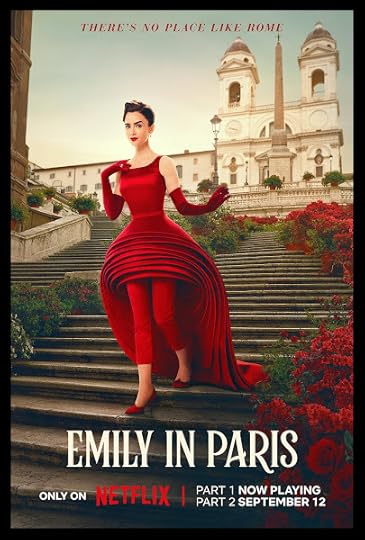 Darren Star: Emily in Paris (2020- )
Darren Star: Emily in Paris (2020- )Emily in Paris , eat your heart out! Steinfeld's Emily in Amherst is not only a better writer than Lily Collins' fish-out-of-water in la ville lumière, she's also a snappier dresser. Who else could rock those mid-nineteenth-century frocks like she does? Even Death agrees, and he's a pretty stern critic ...
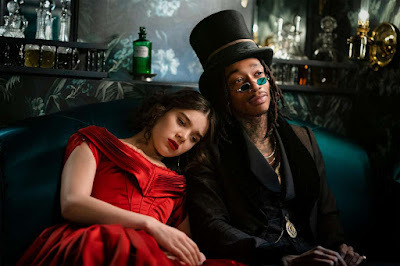 Dickinson: Hailee Steinfeld & Wiz Khalifa as 'Death'
Dickinson: Hailee Steinfeld & Wiz Khalifa as 'Death'True, there may be a certain disconnect with the "creature" encountered by Thomas Higginson on his 1870 visit: the one with "smooth bands of red hair and no good features", but Hailee Steinfeld does her level best to dress down at least some of the time.
What matters is that this Emily is splendidly alive - and sassy. "She had said a lot of strange things, from which Higginson deduced an 'abnormal' life". But what he saw as abnormal we might feel inclined to see as living her best life.
 Amherst College: Emily Dickinson & Kate Scott Turner (c.1859)
Amherst College: Emily Dickinson & Kate Scott Turner (c.1859)[unauthenticated]
•
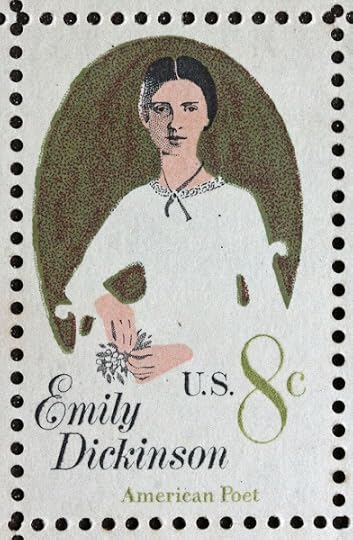 Emily Dickinson Commemorative Stamp (1971)
Emily Dickinson Commemorative Stamp (1971)Emily Elizabeth Dickinson
(1830-1886)
Books I own are marked in bold:Poetry:
A Valentine [“‘Sic transit gloria mundi,’”]. Springfield Daily Republican (February 20, 1852)To Mrs -, with a Rose. ["Nobody knows this little rose -”]. Springfield Daily Republican (August 2, 1858)The May-Wine [“I taste a liquor never brewed - ”]. Springfield Daily Republican (May 4, 1861)The Sleeping [“Safe in their Alabaster Chambers – ”]. Springfield Daily Republican (March 1, 1862)Sunset [“Blazing in Gold, and quenching in Purple” ]. Drum Beat (February 29, 1864)Flowers [“Flowers - Well - if anybody”]. Drum Beat (March 2, 1864)October [“These are the days when Birds come back -”]. Drum Beat (March 11, 1864)My Sabbath [“Some keep the Sabbath going to Church - ”]. Round Table (March 12, 1864)Success is counted sweetest. Brooklyn Daily Union (April 27, 1864)The Snake ["A narrow Fellow in the Grass”]. Springfield Daily Republican (February 14, 1866)Success is counted sweetest. A Masque of Poets (1878)Poems. Ed. Mabel Loomis Todd & Thomas Wentworth Higginson (1890)Poems: Second Series. Ed. Thomas Wentworth Higginson & Mabel Loomis Todd (1891)Poems: Third Series. Ed. Mabel Loomis Todd (1896)The Single Hound: Poems of a Lifetime. Ed. Martha Dickinson Bianchi (1914)The Complete Poems of Emily Dickinson. Ed. Martha Dickinson Bianchi (1924)Further Poems of Emily Dickinson. Withheld from Publication by Her Sister Lavinia. Ed. Martha Dickinson Bianchi & Alfred Leete Hampson (1929)The Poems of Emily Dickinson. Ed. Martha Dickinson Bianchi & Alfred Leete Hampson (1930)Unpublished Poems of Emily Dickinson. Ed. Martha Dickinson Bianchi & Alfred Leete Hampson (1935)Bolts of Melody. Ed. Mabel Loomis Todd & Millicent Todd Bingham (1945)The Complete Poems of Emily Dickinson. 3 vols. Ed. Thomas H. Johnson (1955)Emily Dickinson: The Complete Poems. Ed. Thomas H. Johnson. 1955. London: Faber, 1975. Emily Dickinson: Selected Poems & Letters. Ed. Robert N. Linscott (1959)Selected Poems & Letters. Together with Thomas Wentworth Higginson’s Account of His Correspondence with the Poet and His Visit to Her in Amherst. Ed. Robert N. Linscott. New York: Doubleday Anchor Books, 1959. A Choice of Emily Dickinson's Verse. Ed. Ted Hughes (1968)A Choice of Emily Dickinson's Verse. Ed. Ted Hughes. 1968. London: Faber, 1970. The Manuscript Books of Emily Dickinson: A Facsimile Edition. 2 vols. Ed. R. W. Franklin (1981)The Poems of Emily Dickinson: Variorum Edition. 3 vols. Ed. R. W. Franklin (1998)The Poems of Emily Dickinson: Variorum Edition. 3 vols. Ed. R. W. Franklin. Cambridge, Mass & London, England: The Belknap Press of Harvard University Press, 1998. Emily Dickinson: The Gorgeous Nothings. Ed. Jen Bervin & Marta Werner (2013)The Gorgeous Nothings. Ed. Jen Bervin & Marta Werner. Preface by Susan Howe. New York: New Directions / Christine Burgin, in association with Granary Books, 2013. Envelope Poems. Ed. Jen Bervin & Marta Werner (2016)Emily Dickinson's Poems: As She Preserved Them. Ed. Cristanne Miller (2016)
Letters:
A Valentine ["Magnum bonum, harem scarum”]. Amherst College Indicator (February, 1850)Letters of Emily Dickinson. 2 vols. Ed. Mabel Loomis Todd (1894)Bianchi, Martha Dickinson. The Life and Letters of Emily Dickinson (1924)Letters of Emily Dickinson: New and Enlarged Edition. Ed. Mabel Loomis Todd (1931)Bianchi, Martha Dickinson. Emily Dickinson: Face to Face. Unpublished Letters with Notes and Reminiscence (1932)The Letters of Emily Dickinson. 3 vols. Ed. Thomas H. Johnson & Theodora Ward (1958)Johnson, Thomas H., ed. The Letters of Emily Dickinson. Associate Editor, Theodora Ward. 3 vols. 1958. Cambridge, Mass & London, England: The Belknap Press of Harvard University Press, 1979. Open me carefully: Emily Dickinson's Intimate Letters to Susan Huntington Dickinson. Ed. Ellen Louise Hart & Martha Nell Smith (1998)The Letters of Emily Dickinson. Ed. Cristanne Miller & Domhnall Mitchell (2024)
Secondary:
Bingham, Millicent Todd. Ancestor’s Brocades. The Literary Début of Emily Dickinson (1945)Ancestor’s Brocades. The Literary Discovery of Emily Dickinson: The Editing and Publication of Her Letters and Poems. 1945. New York: Dover Publications, Inc., 1967. Whicher, George. This Was a Poet: A Critical Biography of Emily Dickinson (1952)Bingham, Millicent Todd. Emily Dickinson: A Revelation (1954)Bingham, Millicent Todd. Emily Dickinson’s Home: Letters of Edward Dickinson and Family. (1955)Emily Dickinson’s Home: The Early Years, as Revealed in Family Correspondence and Reminiscences. With Documentation and Comment. 1955. New York: Dover Publications, Inc., 1967. Johnson, Thomas H. Emily Dickinson: An Interpretative Biography (1955)Emily Dickinson: An Interpretative Biography. 1955. New York: Atheneum, 1980. Leyda, Jay. The Years and Hours of Emily Dickinson. 2 vols (1960)Sewall, Richard B. The Life of Emily Dickinson. 2 vols (1974)Habegger, Alfred. My Wars Are Laid Away in Books: The Life of Emily Dickinson (2001)Gordon, Lyndall. Lives Like Loaded Guns: Emily Dickinson and Her Family's Feuds (2010)Lives Like Loaded Guns: Emily Dickinson and Her Family's Feuds. 2010. Virago Press. London: Little, Brown Book Group, 2010.
•
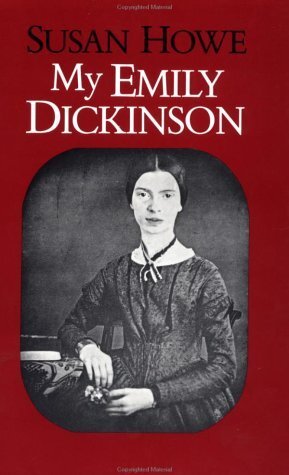 Susan Howe: My Emily Dickinson (1985)
Susan Howe: My Emily Dickinson (1985)There are, of course, many other sub-branches of Dickinsoniana: poetry selections (illustrated and unillustrated), facsimile editions, critical interpretations by the yard. One rather interesting aspect of this is her tendency to inspire children's picture books.
Here are a few choice examples:
Michael Bedard: Emily. Illustrated by Barbara Cooney (1992)
•
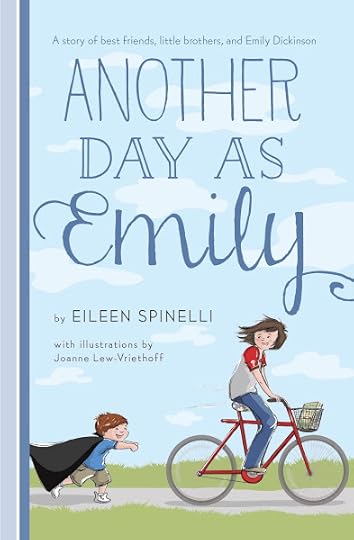 Eileen Spinelli: Another Day as Emily. Illustrated by Joanne Lew-Vriethoff (2015)
Eileen Spinelli: Another Day as Emily. Illustrated by Joanne Lew-Vriethoff (2015)•
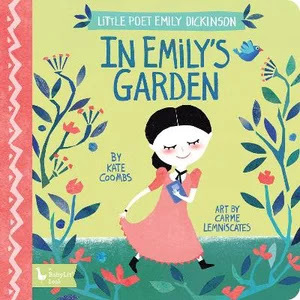 Kate Coombs: In Emily's Garden. Illustrated by Carme Lemniscates (2019)
Kate Coombs: In Emily's Garden. Illustrated by Carme Lemniscates (2019)•
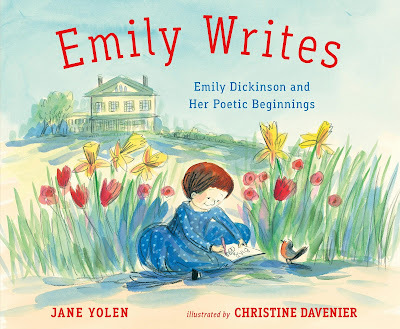 Jane Yolen: Emily Writes. Illustrated by Christine Davenier (2020)
Jane Yolen: Emily Writes. Illustrated by Christine Davenier (2020)•
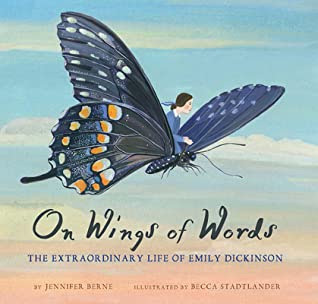 Jennifer Berne: On Wings of Words. Illustrated by Becca Stadtlander (2020)
Jennifer Berne: On Wings of Words. Illustrated by Becca Stadtlander (2020)•
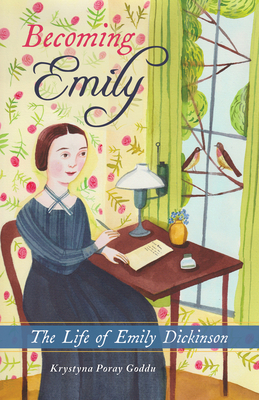 Krystyna Poray Goddu: Becoming Emily (2022)
Krystyna Poray Goddu: Becoming Emily (2022)•
 Lydia Corry: Wildflower Emily (2024)
Lydia Corry: Wildflower Emily (2024)•
Published on March 08, 2025 13:05
March 2, 2025
Other Worlds: An Exhibition
(Auckland Central Library: 19/2-2/8/25)
 Frederick Pohl: The Way the Future Was (1979)
Frederick Pohl: The Way the Future Was (1979)
The Way the Future Was. Ever since I first came across it, I've felt that the title of Frederick Pohl's mid-career memoir summed up the field of Science Fiction pretty exactly.
For all its emphasis on futuristic prediction and the pending triumphs of technology, SF (whether you read that acronym as "Science Fiction" or the more inclusive "Speculative Fiction") has always been an intensely nostalgic genre.
 Other Worlds
, curated by Andrew Henry & Renee Orr (19 February - 2 August 2025)
Other Worlds
, curated by Andrew Henry & Renee Orr (19 February - 2 August 2025)
You feel it the moment you walk in the door of Other Worlds , the latest exhibition in the Rare Books Room at Auckland's Central City Library, an exploration of the "imaginative worlds of science fiction ... featuring books, magazines, comics and posters from Auckland Libraries Heritage Collections."
 Simon Tate: Auckland Council Libraries (2025)
Simon Tate: Auckland Council Libraries (2025)
The curators' decision to focus on old SF magazine covers to create an immediate visual effect was an inspired one. The exuberance and inventiveness of the artists who illustrated these old pulp magazines was propelled not so much by aesthetic considerations as by the sheer strength of the competition.
They had to stand out against all the other possibilities on the newstand: the toney, uptown slicks; the plethora of True Crime and True Detective titles; and even the last few remaining shockers: the EC horror comics or Weird Tales - almost all of them equally attractive (or garish, depending on your taste).
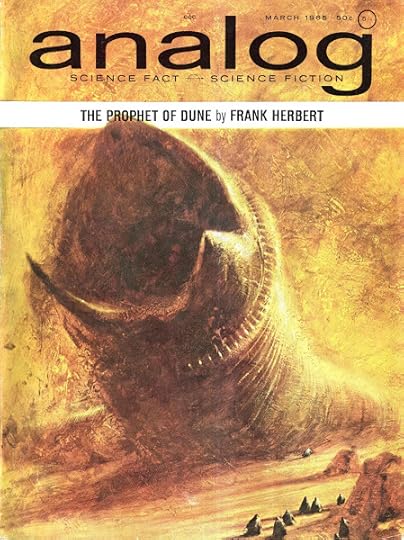 Frank Herbert: The Prophet of Dune (1965)
Frank Herbert: The Prophet of Dune (1965)
And yet, look at this cover from the original run of Dune in Analog in the early 1960s. Has there ever been a more majestic rendition of a Sandworm in any of the subsequent book-covers or movies?
"Shai Hulud!" I found myself intoning as I saw it, "Bless the Maker and His water. May His passage cleanse the world." I am, as you may have gathered, an abject fan of the grandeur of Frank Herbert's conception, ever since I first read it more years ago than I care to mention ...
Fritz Lang, dir. Metropolis , music by Giorgio Moroder (1924 / 1984)
That's not all you see when you first go in, though. In accordance with that sense of nostalgia I mentioned above, there was an old flickering black-and-white movie being projected on the back wall: possibly the greatest SF movie ever made - certainly among the most influential - Fritz Lang's Metropolis .
It's a masterpiece no matter which version you watch it in (there are many - of varying lengths and degrees of completeness). It's probably a relic of having come of age in the 1980s, but I still can't get past the experience of first seeing it in full in the 1984 version scored by Giorgio Moroder.
Moroder colourised the scenes, which might sound sacrilegious if you didn't realise that that was how feature films were generally projected in the 1920s - just like those classical marble nudes we admire so much which were originally covered in brightly coloured paint by their creators.
Check it out for yourself at the youtube link above.
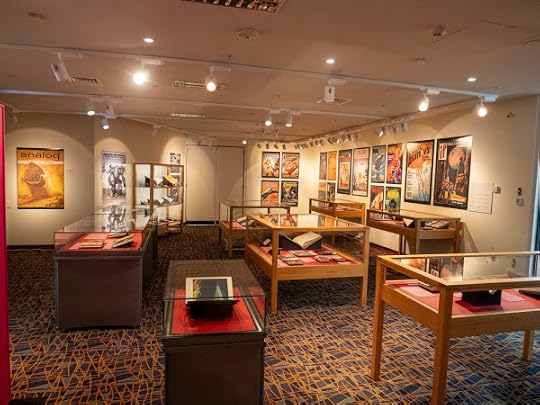 Simon Tate: Auckland Council Libraries (2025)
Simon Tate: Auckland Council Libraries (2025)
Which brings me to my next point. What exactly are we intended to take away from this assemblage of artefacts? Once you've got over the security blanket feeling of seeing so many old friends among the books displayed in the vitrines - Philip K. Dick, William Gibson, Ursula K. Le Guin, Mary Shelley's Frankenstein - you begin to wonder about the rationale behind them.
Of course the standard themes are gestured towards: Robots and Monsters, Inner Worlds, the planet Mars ... these are a few of the labels included in the exhibition brochure. And, yes, artificial life and artificial intelligence are now subjects which impact on us everyday, as do the consequences of ignoring the ecological warnings of earlier SF.
“It’s a celebration of the imagination of writers and artists – of imaginative literature,” says Andrew Henry, Curator of Auckland Collections, Auckland Council Libraries.
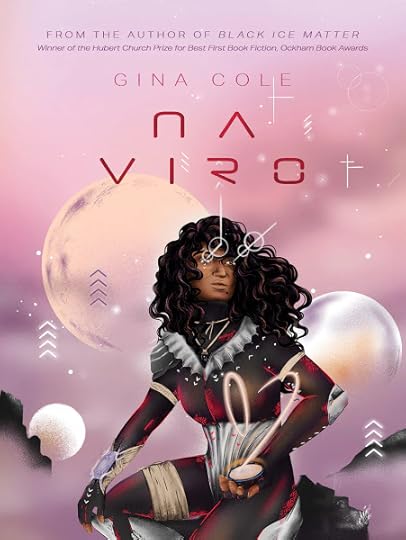 Gina Cole: Na Viro (2022)
Gina Cole: Na Viro (2022)
It's not actually included in any of the vitrines, but I see that local author Gina Cole has been asked to come and speak about her work at one of the public programmes associated with the exhibition. When I first read her novel Na Viro a few years ago, I was hugely impressed by the skill with which it integrated both colonial and dystopian themes into a new construct she referred to as "Pasifikafuturism."
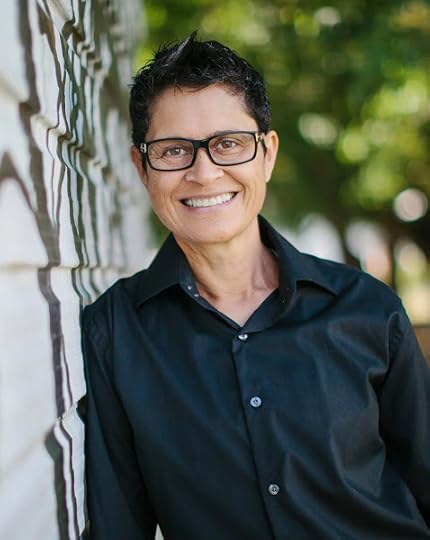 Gina Cole
Gina Cole
Building on her earlier collection Black Ice Matter (2017), Cole has expertly transposed some of the ideas behind the embattled concept of Afrofuturism to a Pacific context.
But it's the inclusion of works by Octavia Butler and that supreme maverick Samuel R. Delany in the cabinet marked "Colonisation" that gives us a possible lead towards seeing how these themes ought to stand front and centre in any consideration of the meaning of SF in Aotearoa now.
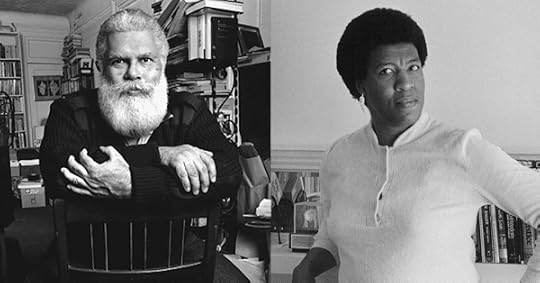 Samuel Delany & Octavia Butler (1998)
Samuel Delany & Octavia Butler (1998)
While neither of these authors felt exactly comfortable about the possible limiting implications of the term, there's no doubt that present-day Afrofuturism - and its offshoot, Africanfuturism - owe a great debt to their pioneering work in the SF genre. Nor did they shy away from controversy or cultural politics: the lifeblood of any engaged artform.
I'd like to see what's included here, then, as not so much a nostalgia-fest as a blueprint for further progress. Where do we go from here? For Gina Cole, that has meant conceiving of travel through space as the same leap into the unknown her ancestors undertook in setting out across the moana.
Or, as T. S. Eliot once said:
 Geoff Murphy, dir. The Quiet Earth (1985)
Geoff Murphy, dir. The Quiet Earth (1985)
•
For those interested in pursuing this topic, there are a number of sites you might like to check out:
The Encyclopedia of Science Fiction
•
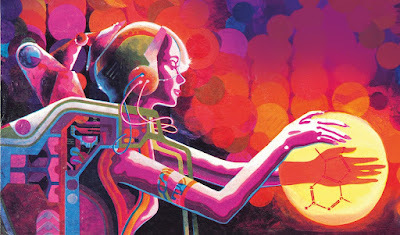 Other Worlds, curated by Andrew Henry & Renee Orr (2025)
Other Worlds, curated by Andrew Henry & Renee Orr (2025)
[Mike Hinge: Analog cover design (1967)]
 Frederick Pohl: The Way the Future Was (1979)
Frederick Pohl: The Way the Future Was (1979)The Way the Future Was. Ever since I first came across it, I've felt that the title of Frederick Pohl's mid-career memoir summed up the field of Science Fiction pretty exactly.
For all its emphasis on futuristic prediction and the pending triumphs of technology, SF (whether you read that acronym as "Science Fiction" or the more inclusive "Speculative Fiction") has always been an intensely nostalgic genre.
 Other Worlds
, curated by Andrew Henry & Renee Orr (19 February - 2 August 2025)
Other Worlds
, curated by Andrew Henry & Renee Orr (19 February - 2 August 2025)You feel it the moment you walk in the door of Other Worlds , the latest exhibition in the Rare Books Room at Auckland's Central City Library, an exploration of the "imaginative worlds of science fiction ... featuring books, magazines, comics and posters from Auckland Libraries Heritage Collections."
 Simon Tate: Auckland Council Libraries (2025)
Simon Tate: Auckland Council Libraries (2025)The curators' decision to focus on old SF magazine covers to create an immediate visual effect was an inspired one. The exuberance and inventiveness of the artists who illustrated these old pulp magazines was propelled not so much by aesthetic considerations as by the sheer strength of the competition.
They had to stand out against all the other possibilities on the newstand: the toney, uptown slicks; the plethora of True Crime and True Detective titles; and even the last few remaining shockers: the EC horror comics or Weird Tales - almost all of them equally attractive (or garish, depending on your taste).
 Frank Herbert: The Prophet of Dune (1965)
Frank Herbert: The Prophet of Dune (1965)And yet, look at this cover from the original run of Dune in Analog in the early 1960s. Has there ever been a more majestic rendition of a Sandworm in any of the subsequent book-covers or movies?
"Shai Hulud!" I found myself intoning as I saw it, "Bless the Maker and His water. May His passage cleanse the world." I am, as you may have gathered, an abject fan of the grandeur of Frank Herbert's conception, ever since I first read it more years ago than I care to mention ...
Fritz Lang, dir. Metropolis , music by Giorgio Moroder (1924 / 1984)
That's not all you see when you first go in, though. In accordance with that sense of nostalgia I mentioned above, there was an old flickering black-and-white movie being projected on the back wall: possibly the greatest SF movie ever made - certainly among the most influential - Fritz Lang's Metropolis .
It's a masterpiece no matter which version you watch it in (there are many - of varying lengths and degrees of completeness). It's probably a relic of having come of age in the 1980s, but I still can't get past the experience of first seeing it in full in the 1984 version scored by Giorgio Moroder.
Moroder colourised the scenes, which might sound sacrilegious if you didn't realise that that was how feature films were generally projected in the 1920s - just like those classical marble nudes we admire so much which were originally covered in brightly coloured paint by their creators.
Check it out for yourself at the youtube link above.
 Simon Tate: Auckland Council Libraries (2025)
Simon Tate: Auckland Council Libraries (2025)Which brings me to my next point. What exactly are we intended to take away from this assemblage of artefacts? Once you've got over the security blanket feeling of seeing so many old friends among the books displayed in the vitrines - Philip K. Dick, William Gibson, Ursula K. Le Guin, Mary Shelley's Frankenstein - you begin to wonder about the rationale behind them.
Of course the standard themes are gestured towards: Robots and Monsters, Inner Worlds, the planet Mars ... these are a few of the labels included in the exhibition brochure. And, yes, artificial life and artificial intelligence are now subjects which impact on us everyday, as do the consequences of ignoring the ecological warnings of earlier SF.
“It’s a celebration of the imagination of writers and artists – of imaginative literature,” says Andrew Henry, Curator of Auckland Collections, Auckland Council Libraries.
“There’s a huge variety of other worlds that these writers have created, from outer space to cyberspace. We want to invite Aucklanders to come and check out science fiction’s early beginnings and how it’s progressed since then; to consider how this might be topical in the modern day and what some of the wildest predictions of technology have been – did they get it right? Come find out!”Quite so. But in keeping with that invitation, I guess what excited me most about the show were the few, subversive signs it contained of a new lease of life for this now venerable genre.
 Gina Cole: Na Viro (2022)
Gina Cole: Na Viro (2022)It's not actually included in any of the vitrines, but I see that local author Gina Cole has been asked to come and speak about her work at one of the public programmes associated with the exhibition. When I first read her novel Na Viro a few years ago, I was hugely impressed by the skill with which it integrated both colonial and dystopian themes into a new construct she referred to as "Pasifikafuturism."
 Gina Cole
Gina ColeBuilding on her earlier collection Black Ice Matter (2017), Cole has expertly transposed some of the ideas behind the embattled concept of Afrofuturism to a Pacific context.
But it's the inclusion of works by Octavia Butler and that supreme maverick Samuel R. Delany in the cabinet marked "Colonisation" that gives us a possible lead towards seeing how these themes ought to stand front and centre in any consideration of the meaning of SF in Aotearoa now.
 Samuel Delany & Octavia Butler (1998)
Samuel Delany & Octavia Butler (1998)While neither of these authors felt exactly comfortable about the possible limiting implications of the term, there's no doubt that present-day Afrofuturism - and its offshoot, Africanfuturism - owe a great debt to their pioneering work in the SF genre. Nor did they shy away from controversy or cultural politics: the lifeblood of any engaged artform.
I'd like to see what's included here, then, as not so much a nostalgia-fest as a blueprint for further progress. Where do we go from here? For Gina Cole, that has meant conceiving of travel through space as the same leap into the unknown her ancestors undertook in setting out across the moana.
Or, as T. S. Eliot once said:
... the future is a faded song, a Royal Rose or a lavender spray
Of wistful regret for those who are not yet here to regret,
Pressed between yellow leaves of a book that has never been opened.
And the way up is the way down, the way forward is the way back.
- "The Dry Salvages." Four Quartets (1941)
 Geoff Murphy, dir. The Quiet Earth (1985)
Geoff Murphy, dir. The Quiet Earth (1985)•
For those interested in pursuing this topic, there are a number of sites you might like to check out:
The Encyclopedia of Science Fiction
notable for its excellent essays on SF themes, as well as its individual author studiesThe Encyclopedia of Fantasy
again, an indispensable source of information on the genreISFDB: The Internet Speculative Fiction Database
a constantly growing repository of mostly bibliographical information on the fieldNZSF: Essays on New Zealand Speculative Fiction
a website containing most of my own essays on the local product, from Samuel Butler to the present daySFFANZ: The Science Fiction and Fantasy Association of New Zealand
an invaluable resource for those wanting to explore the history of SF in New Zealand, as well as the latest developments in the field
•
 Other Worlds, curated by Andrew Henry & Renee Orr (2025)
Other Worlds, curated by Andrew Henry & Renee Orr (2025)[Mike Hinge: Analog cover design (1967)]
Published on March 02, 2025 12:30



